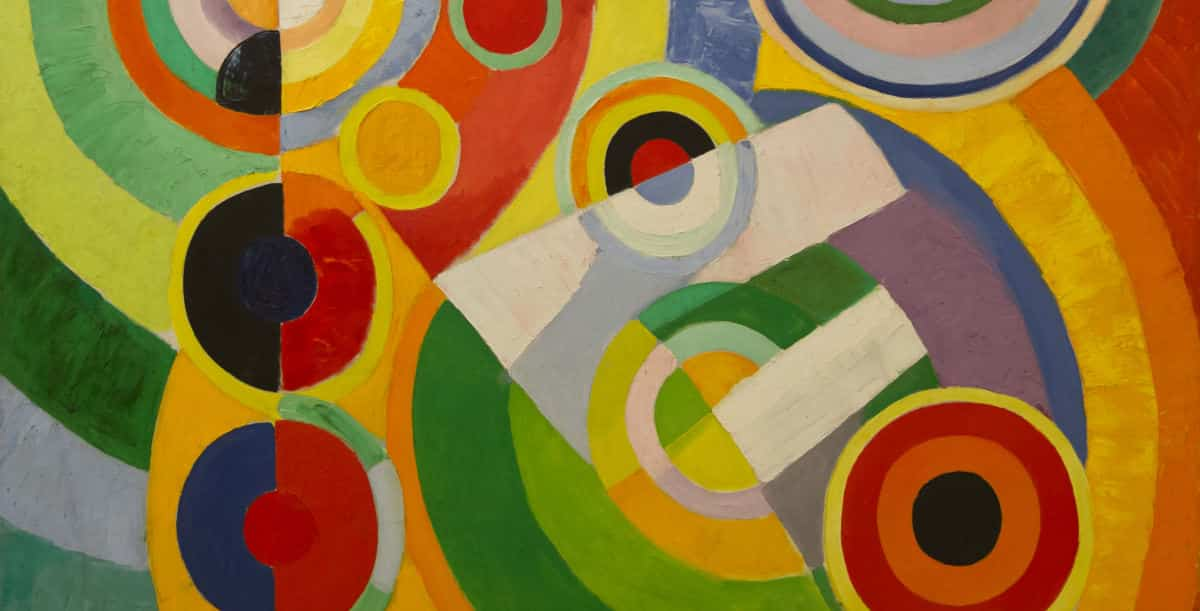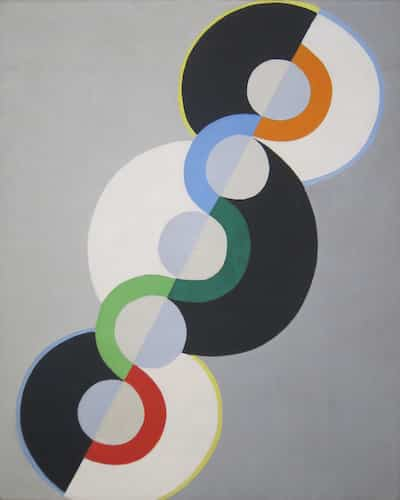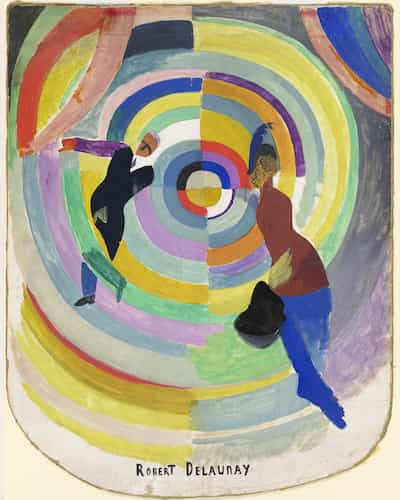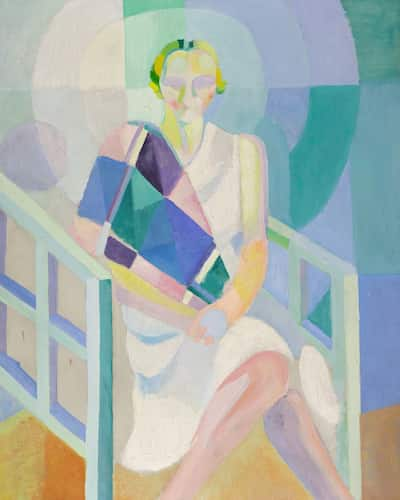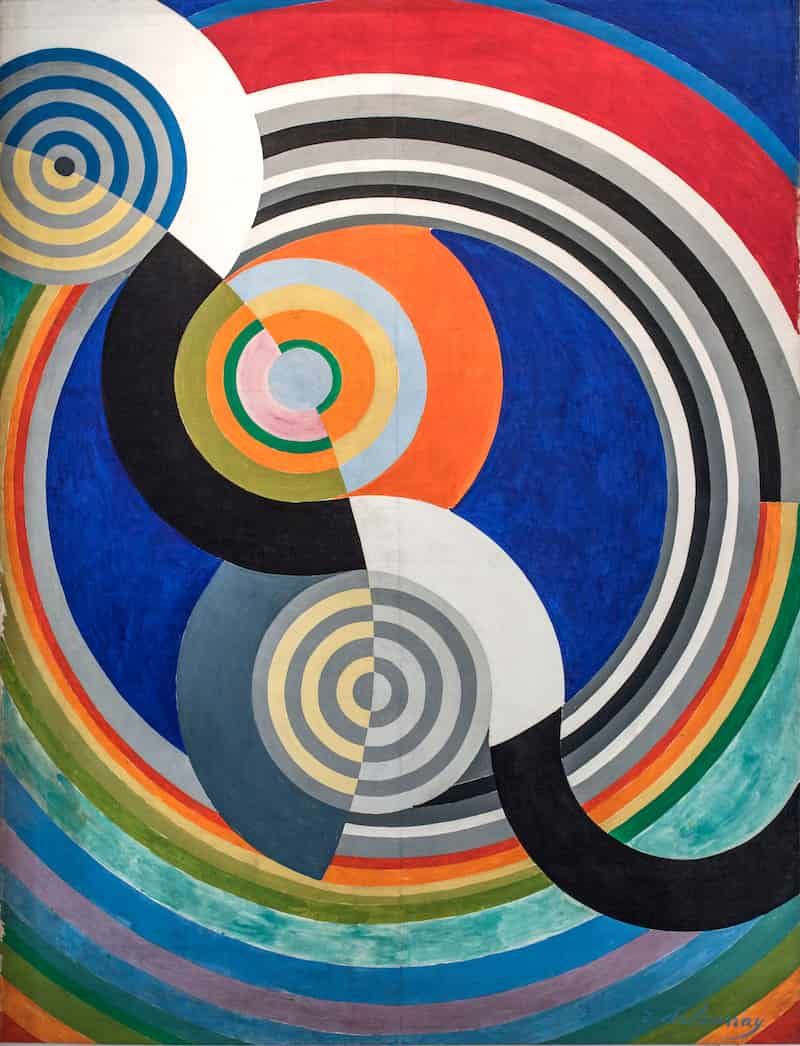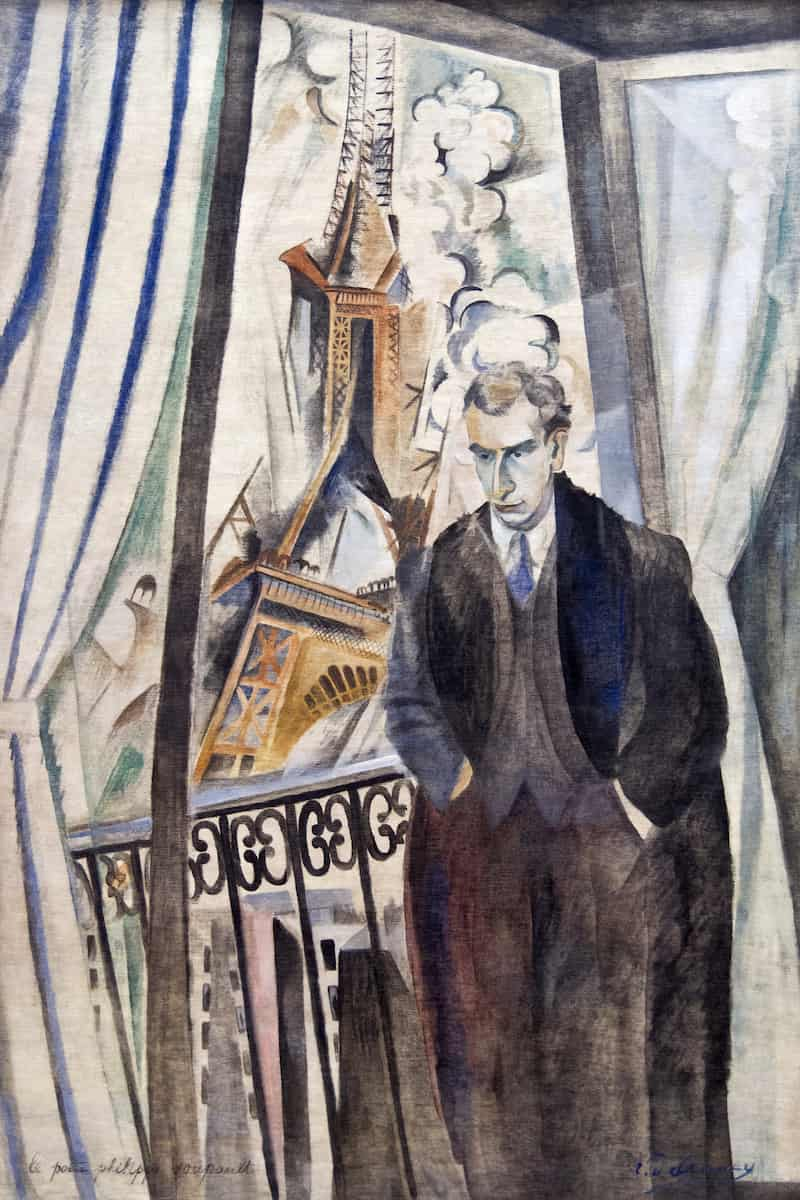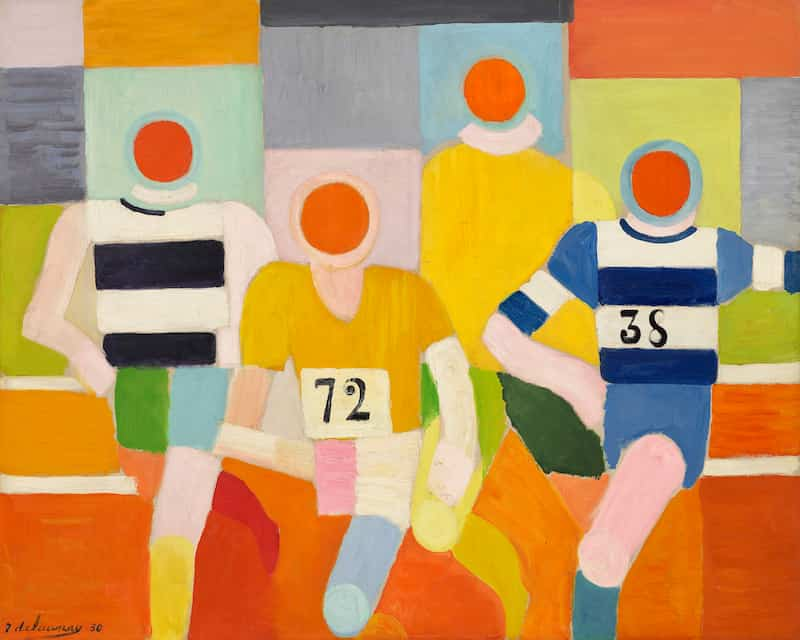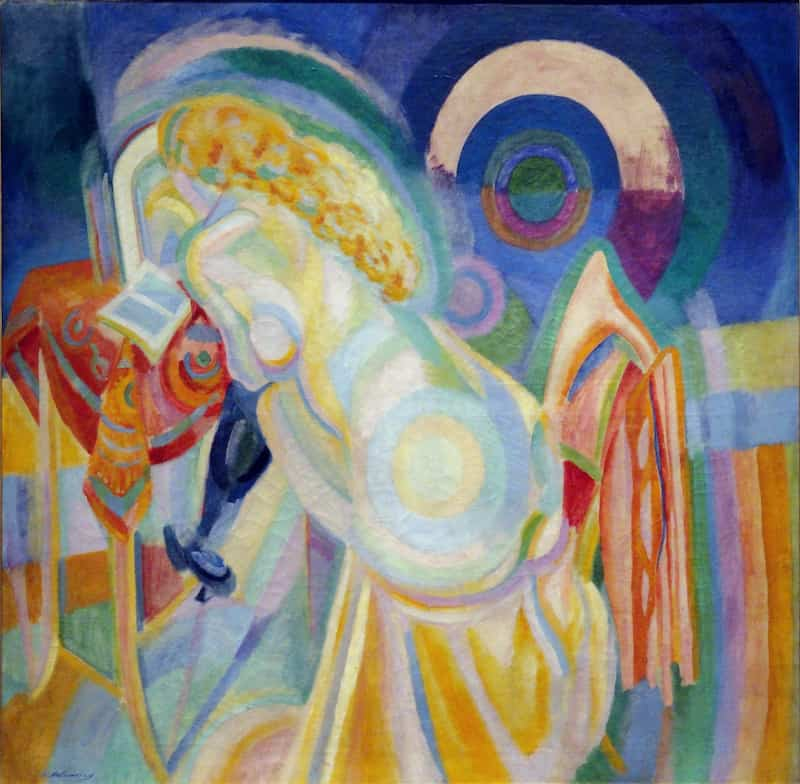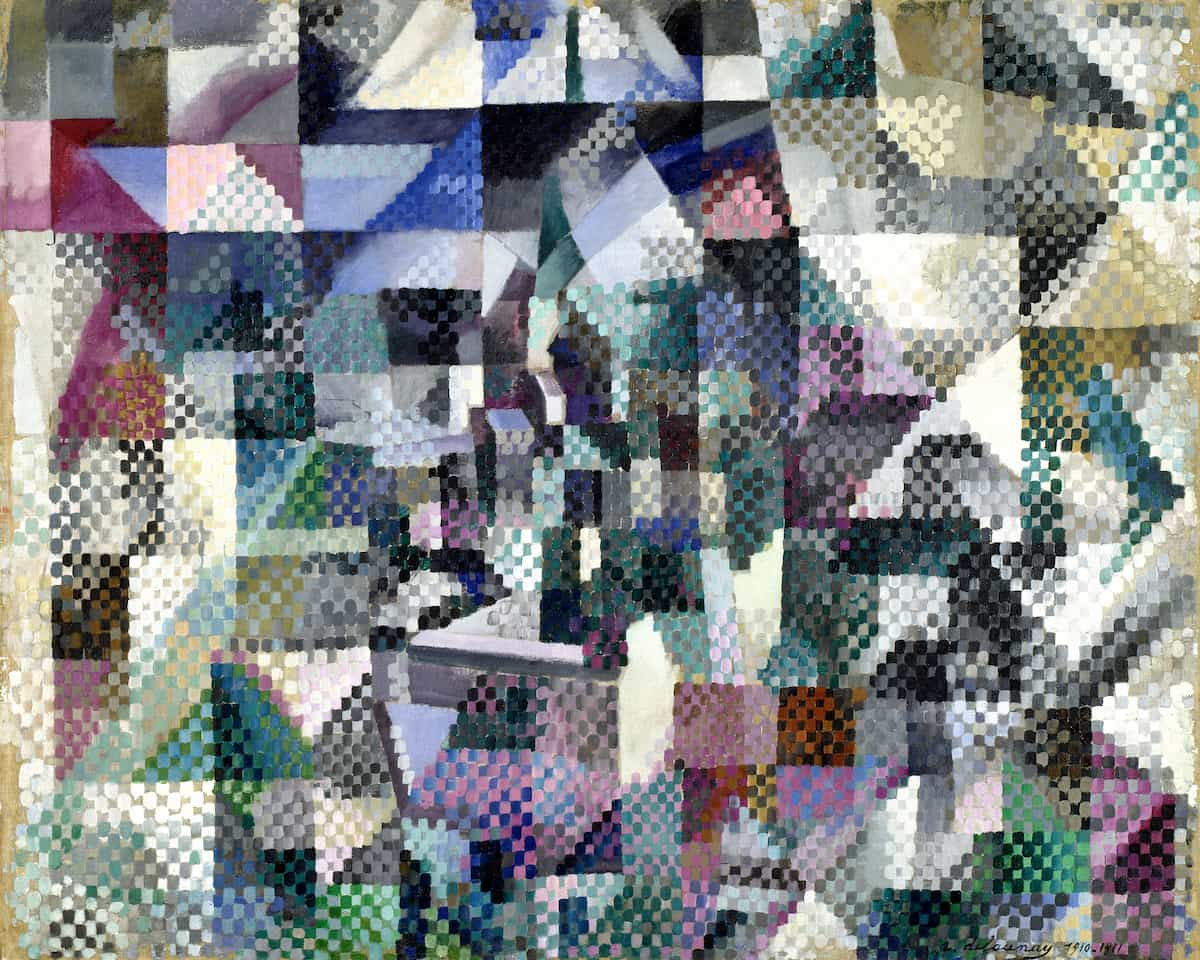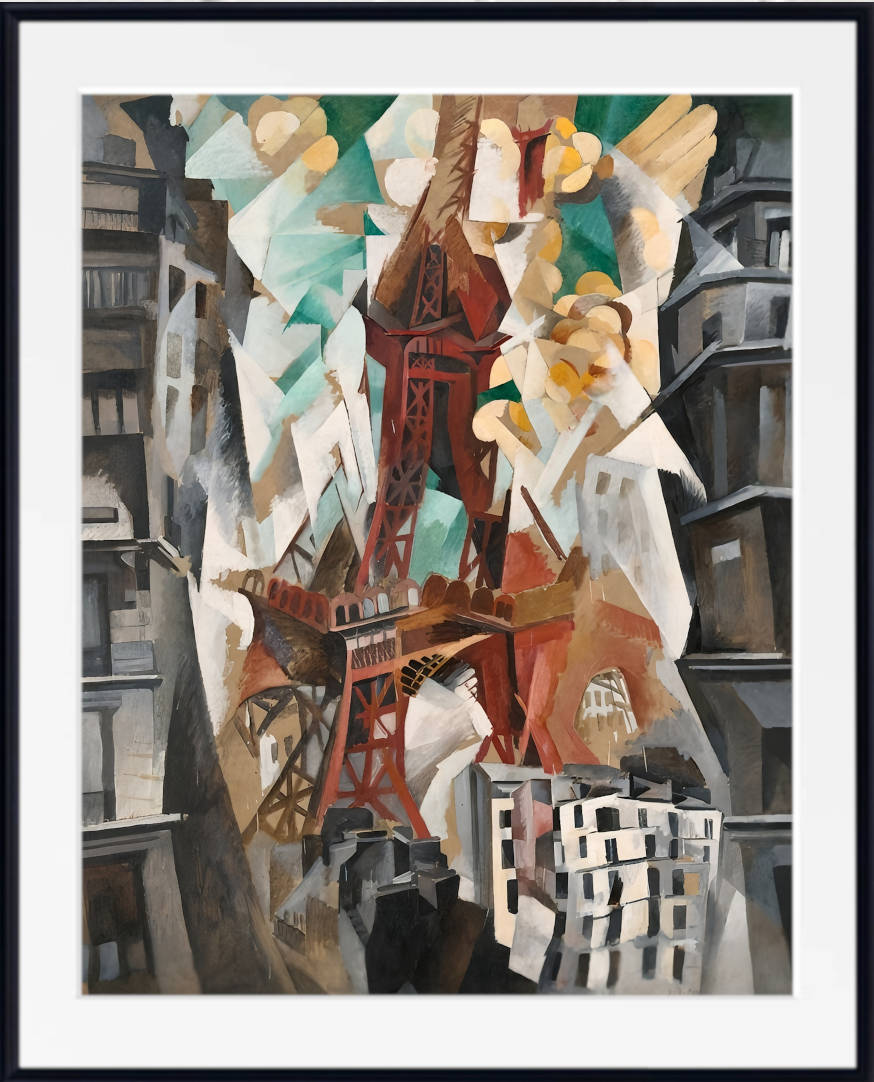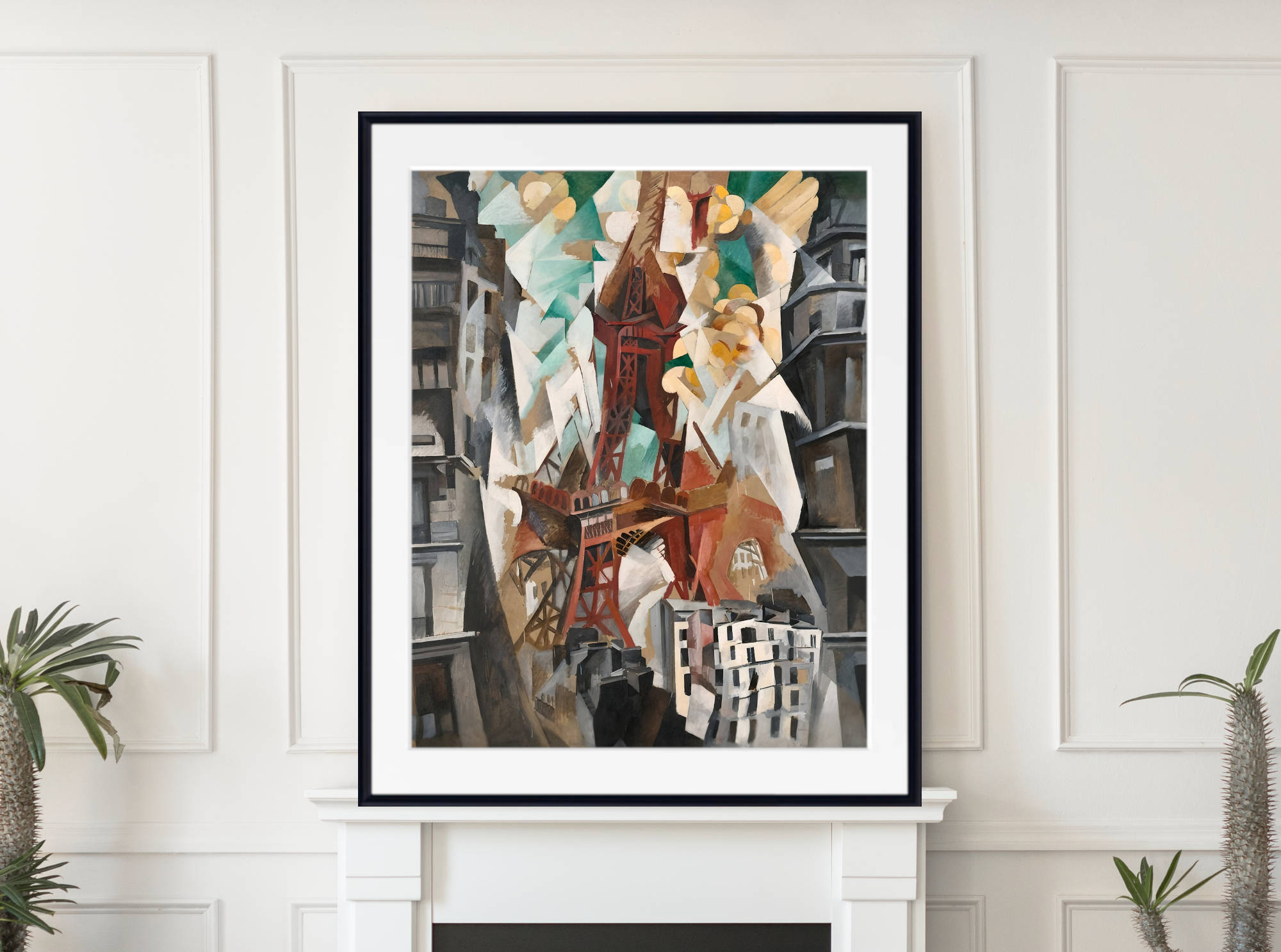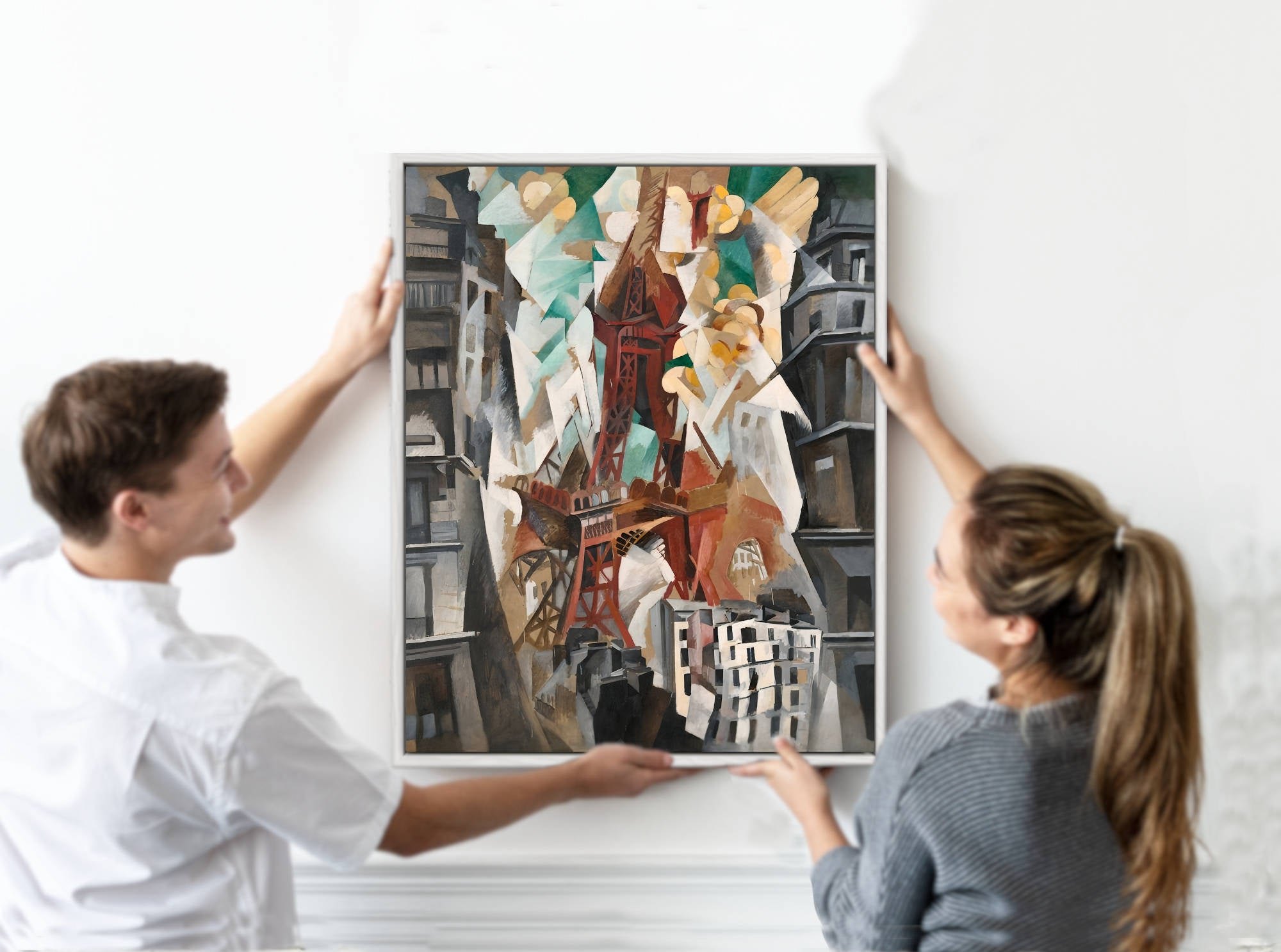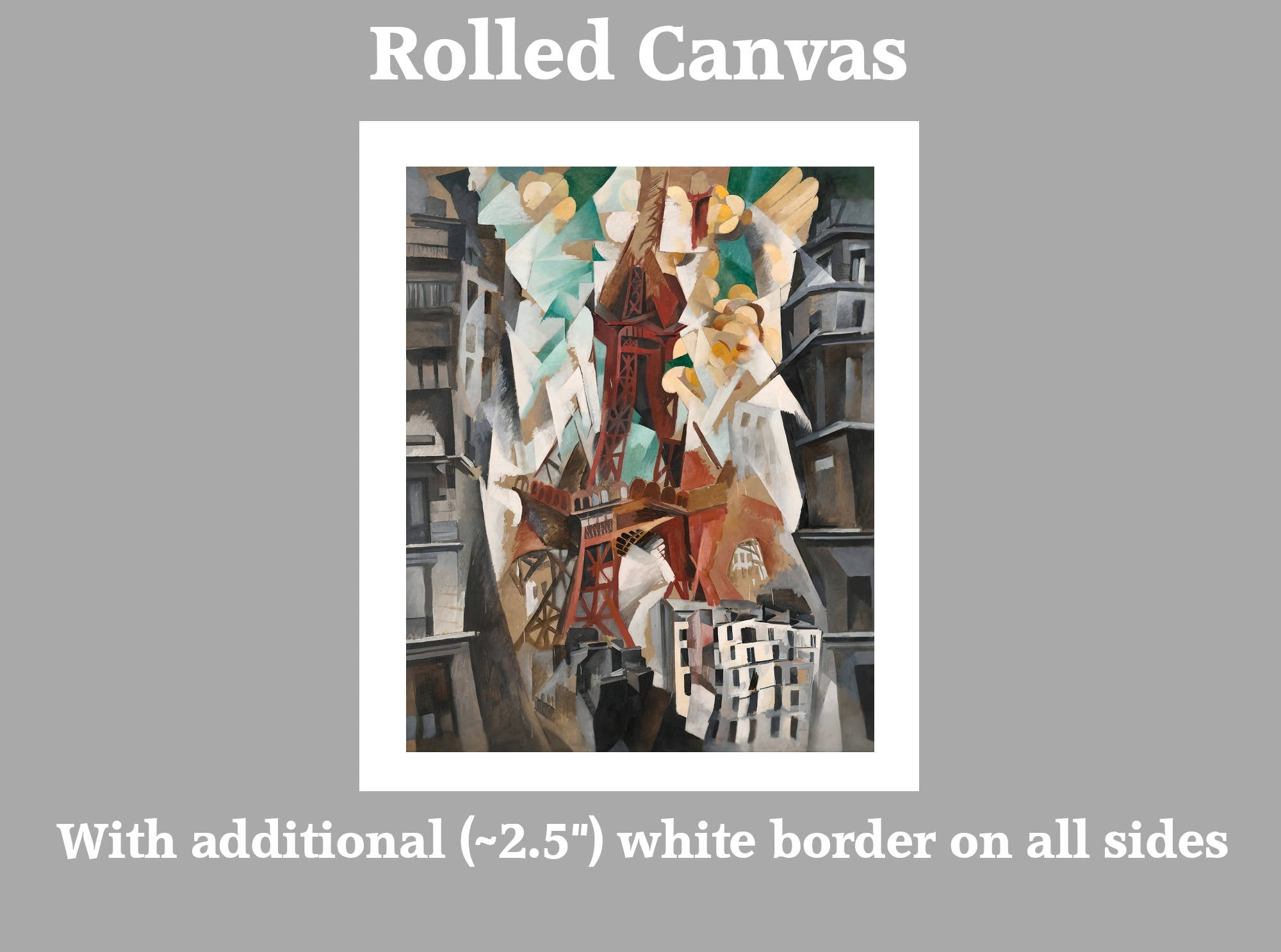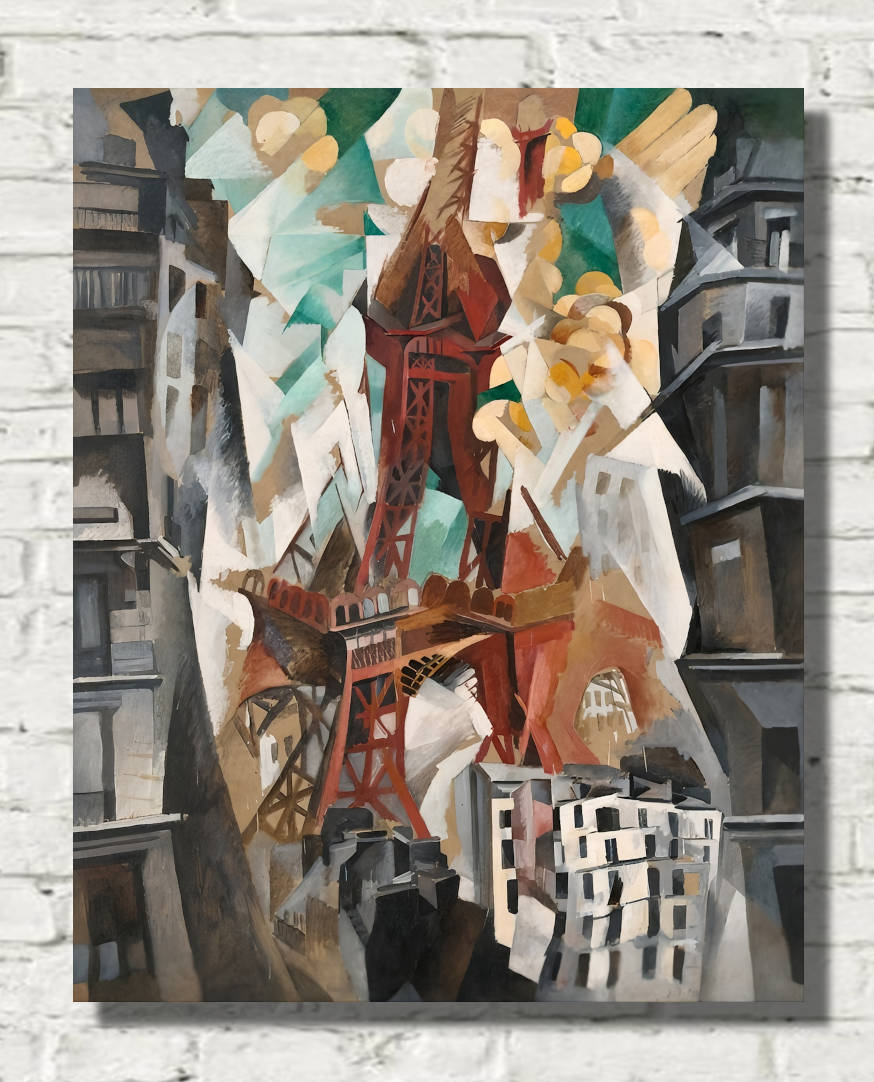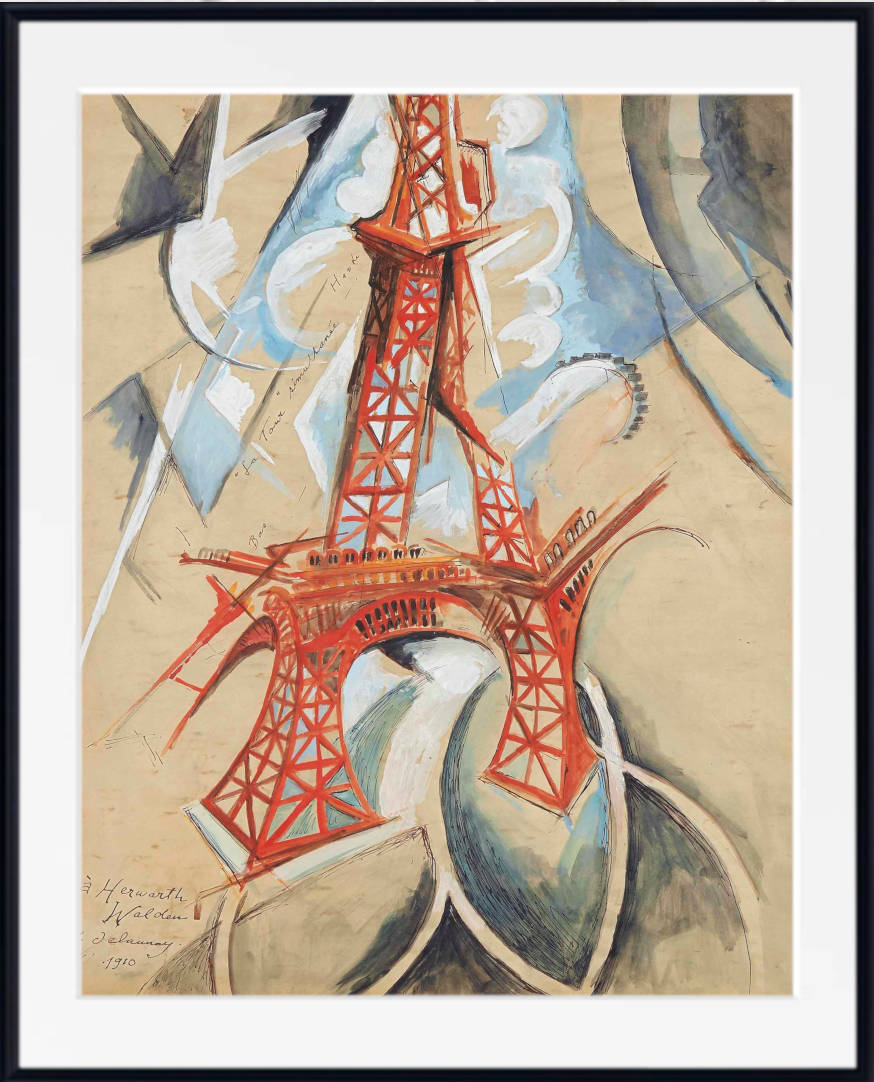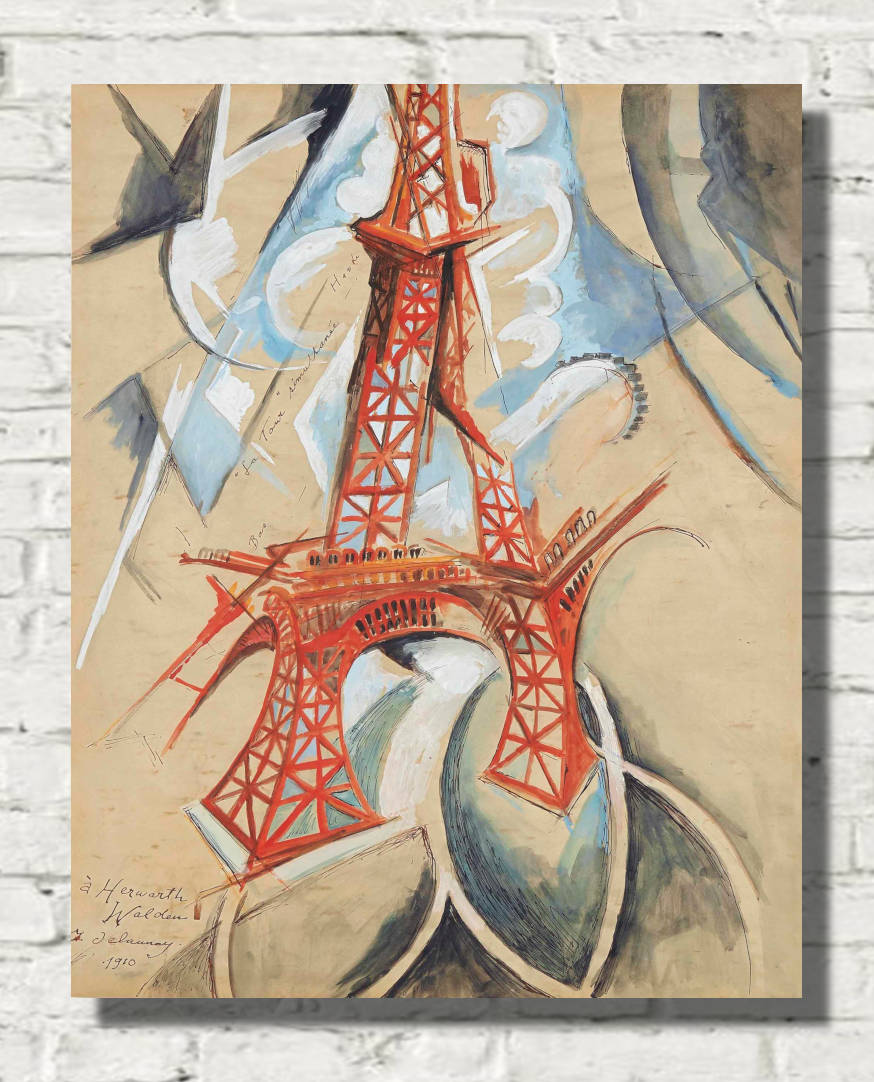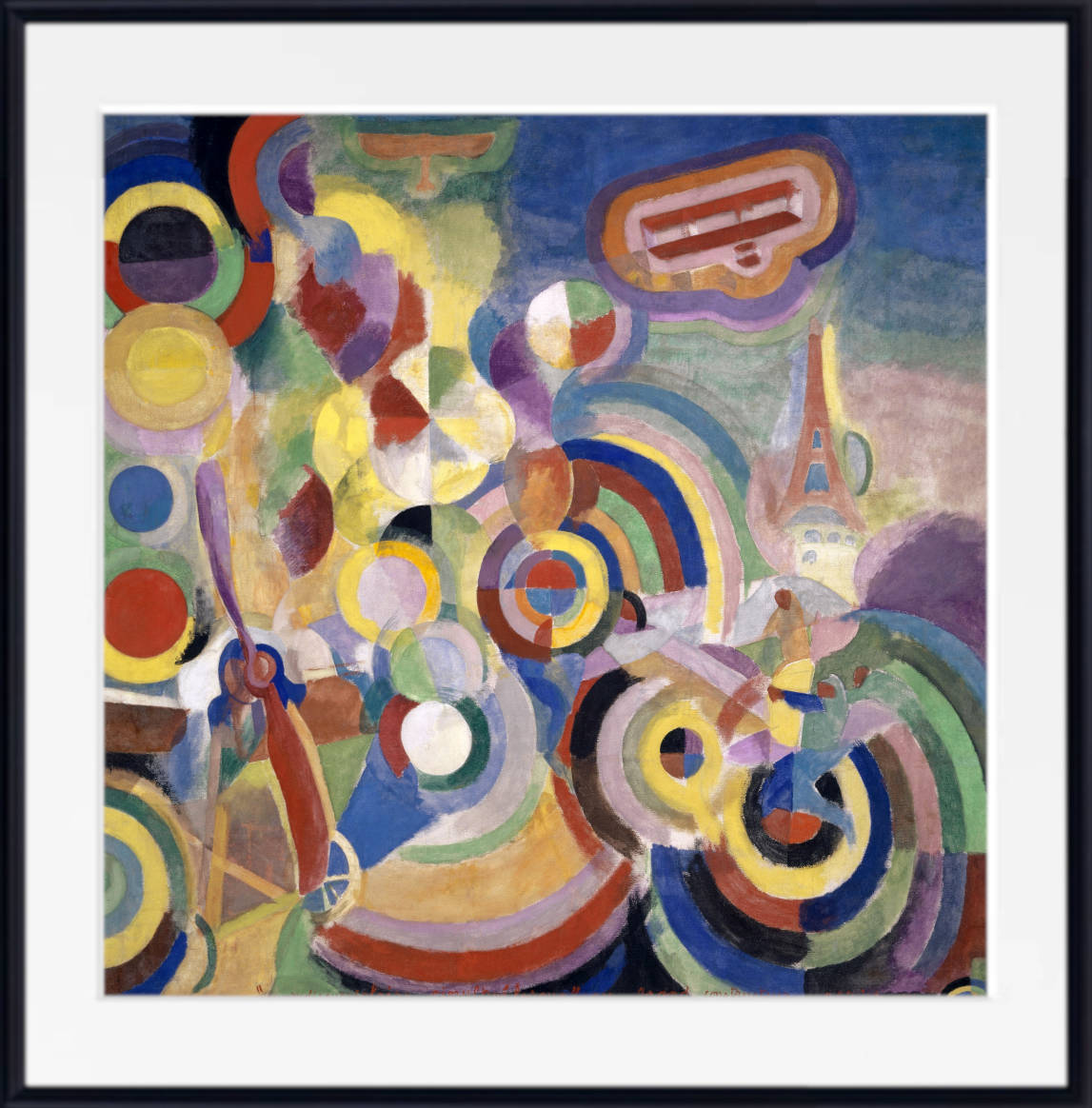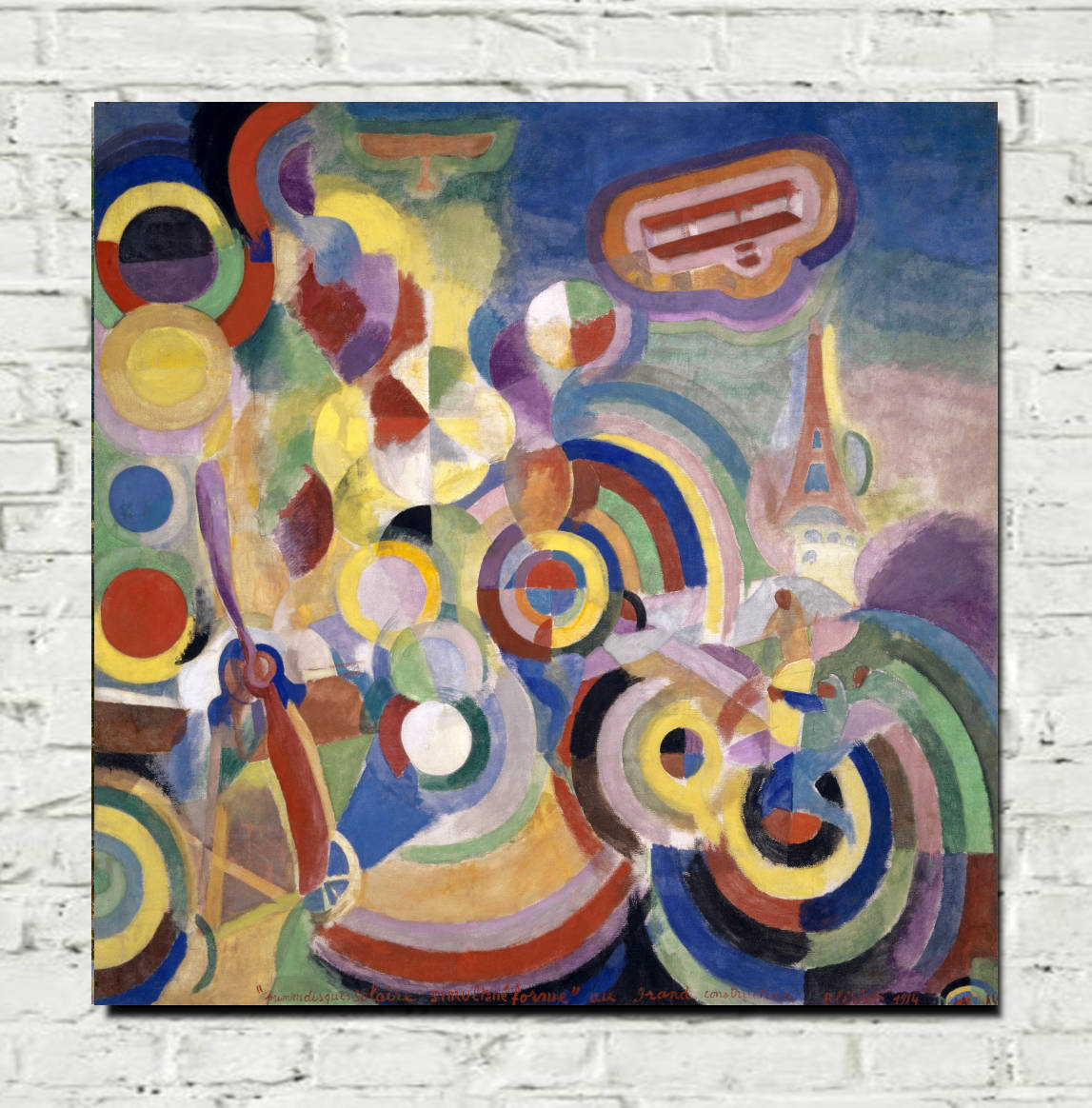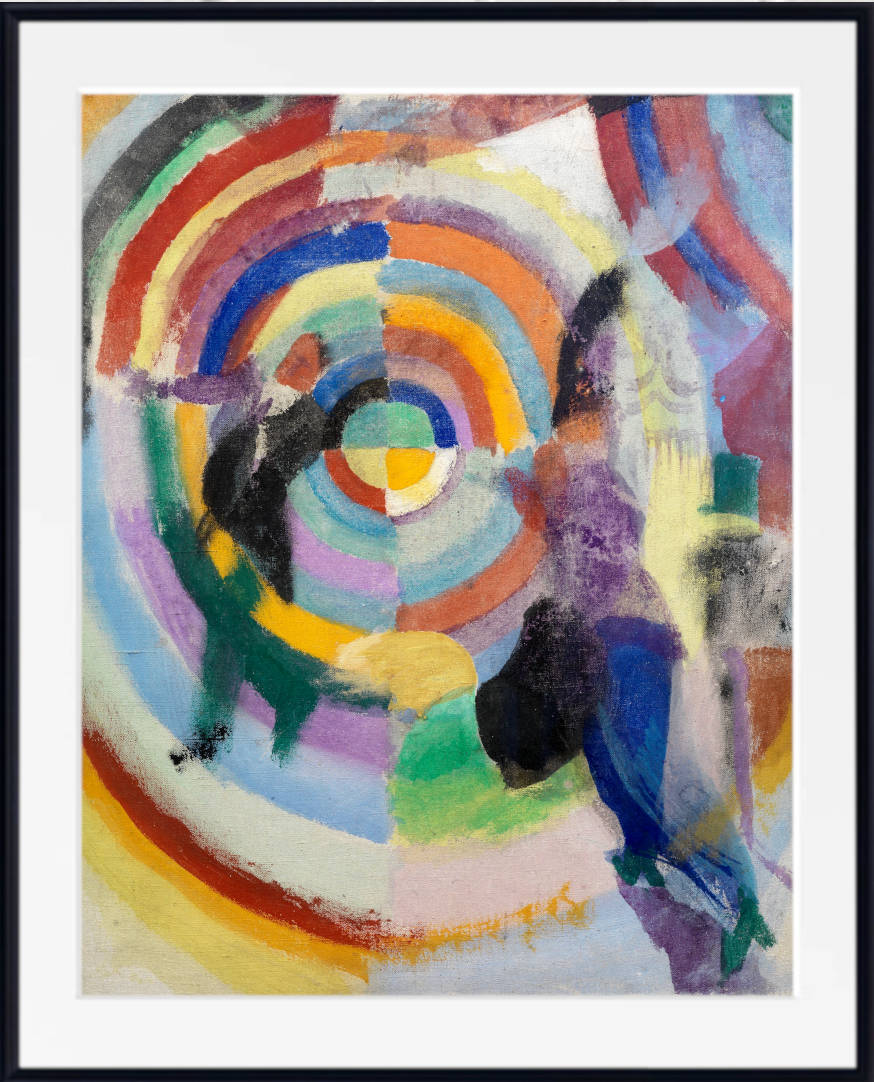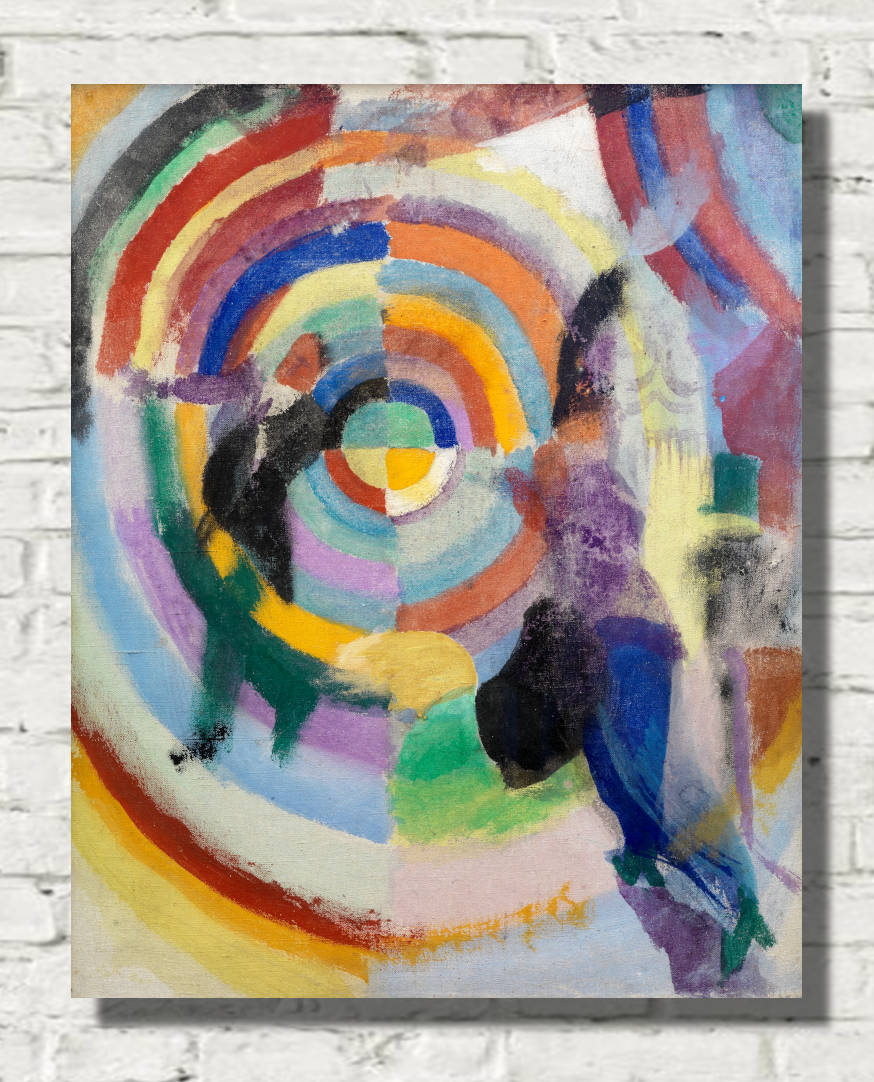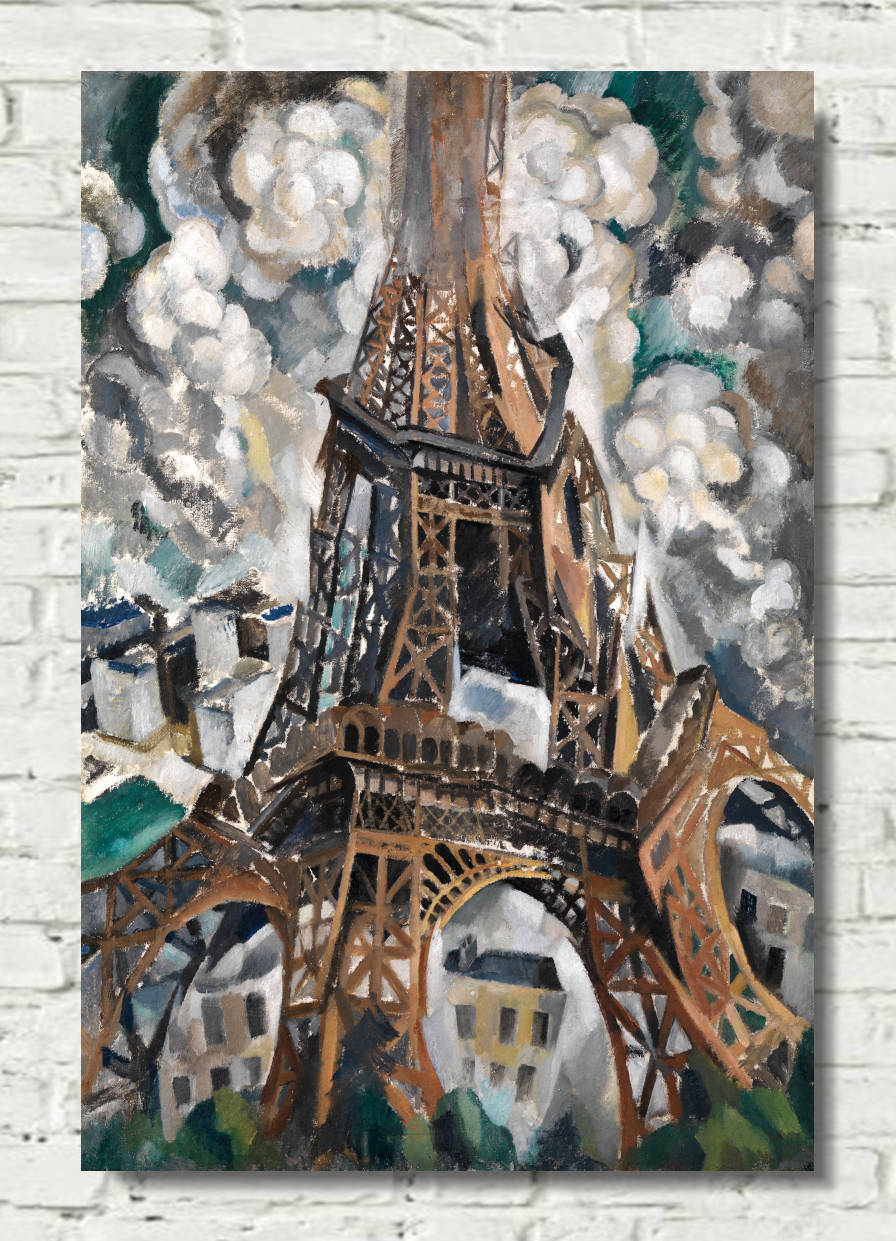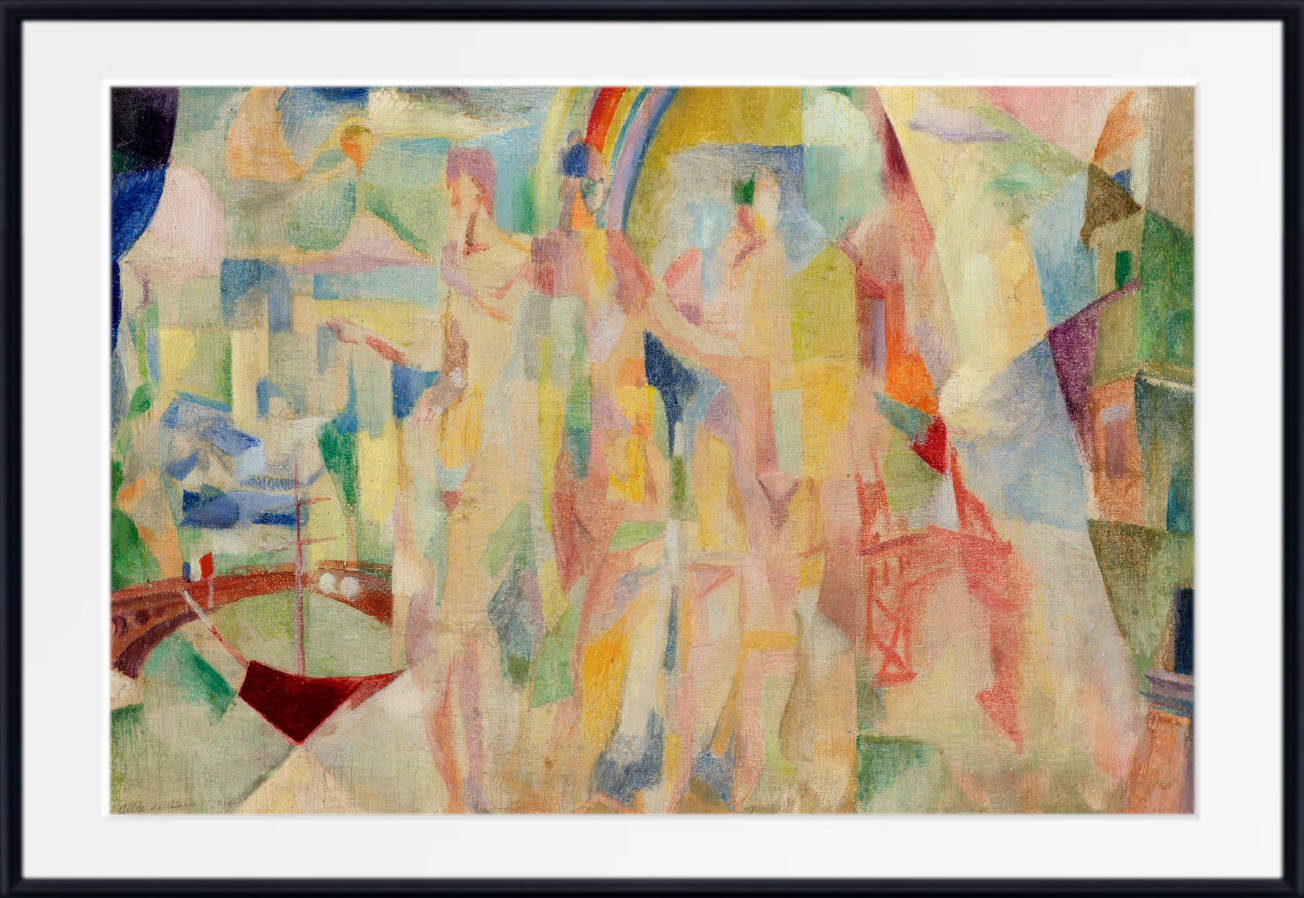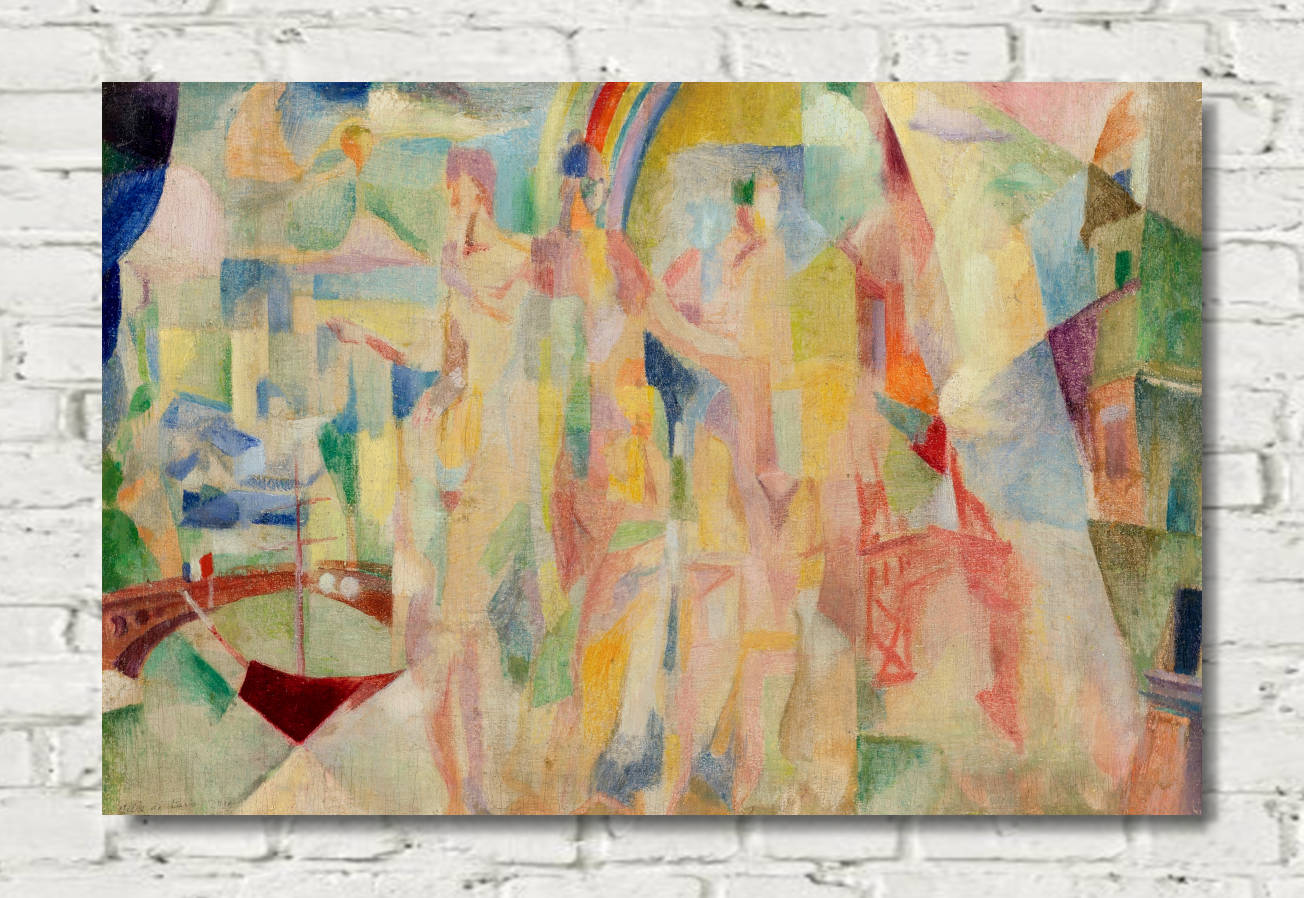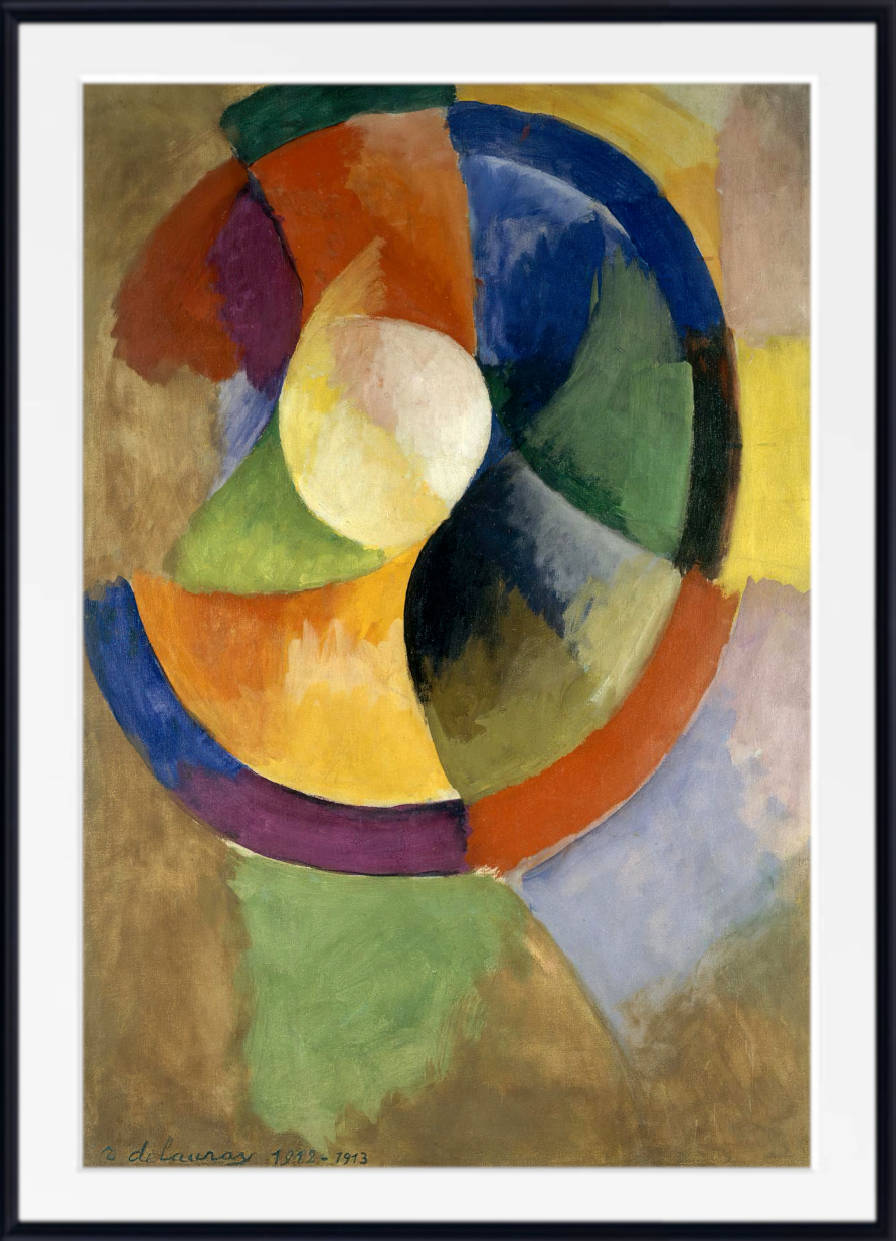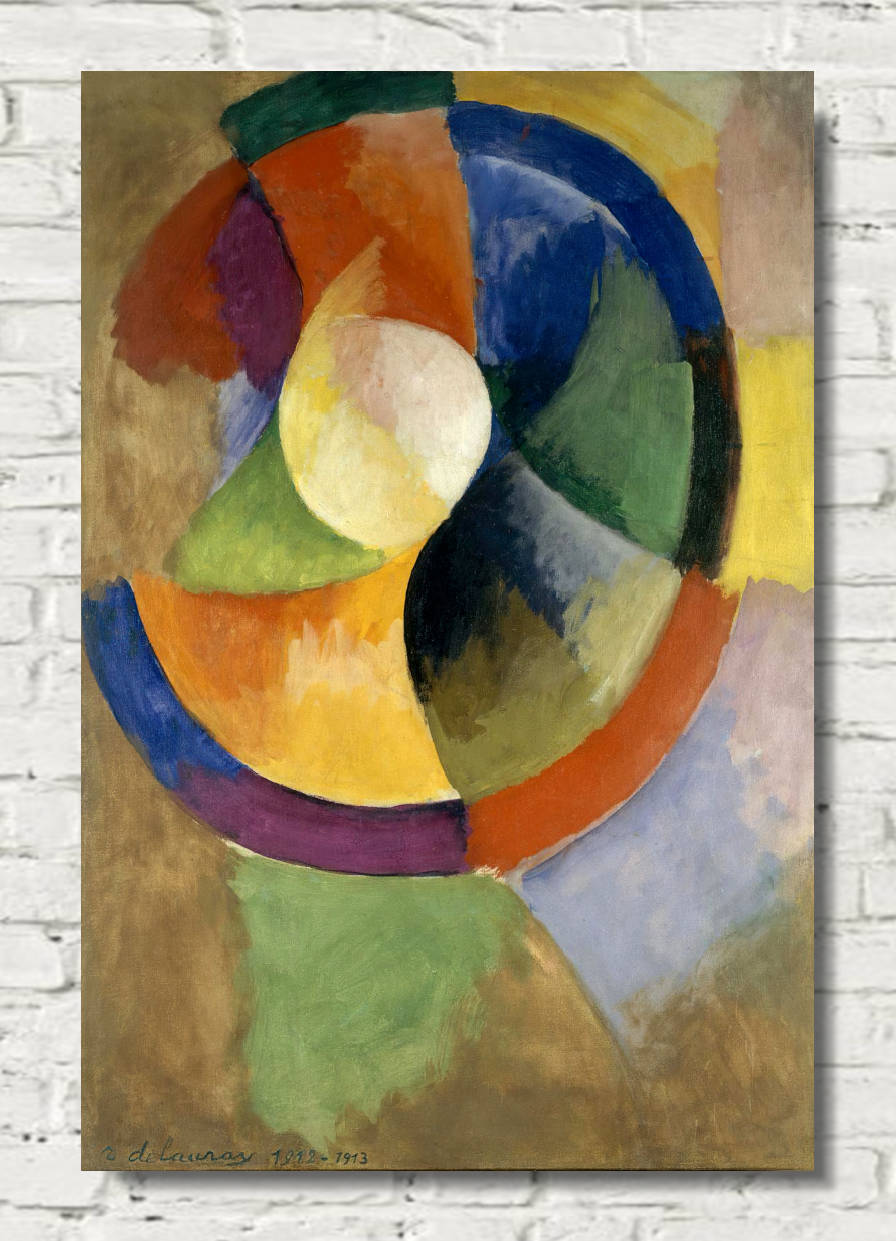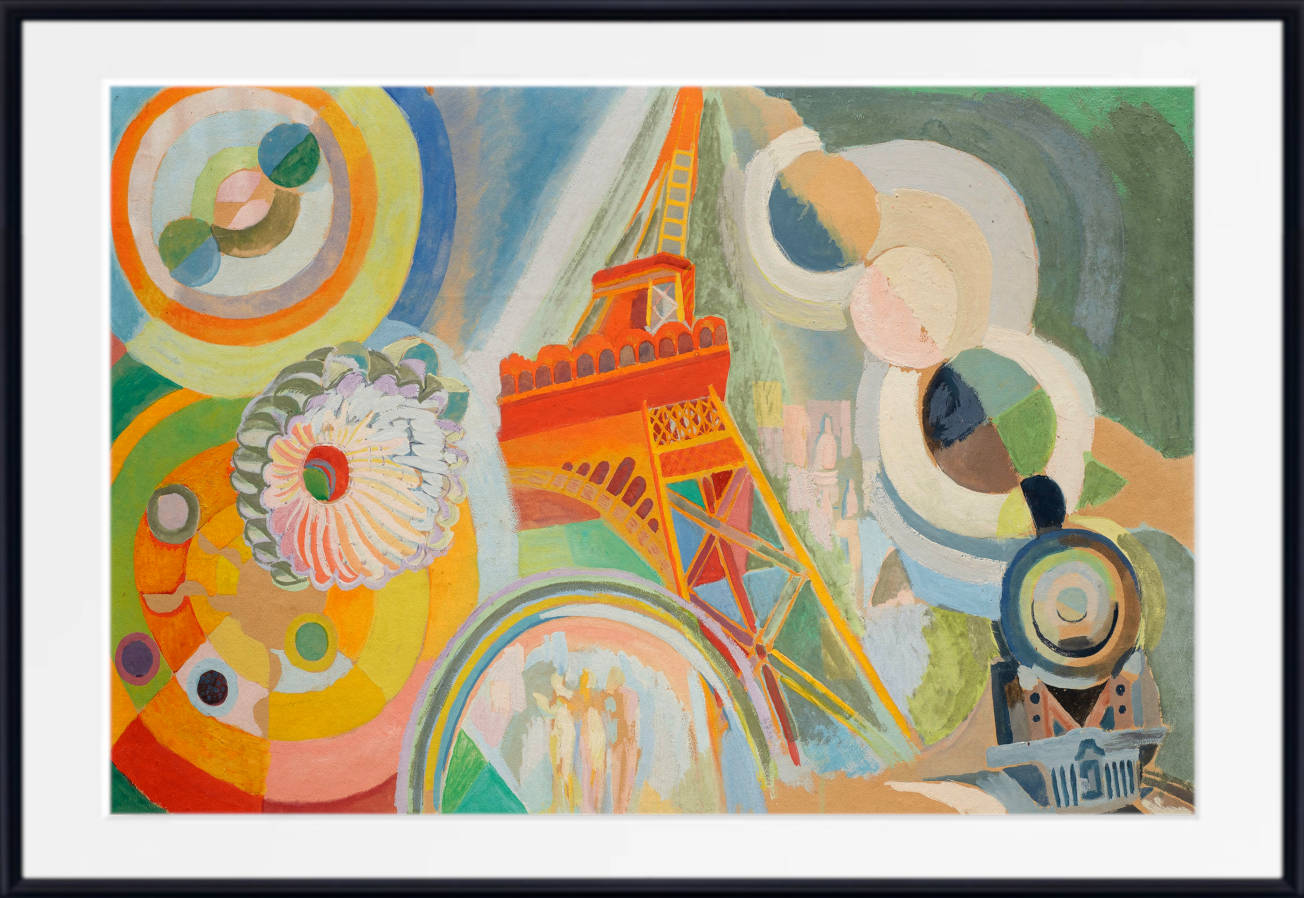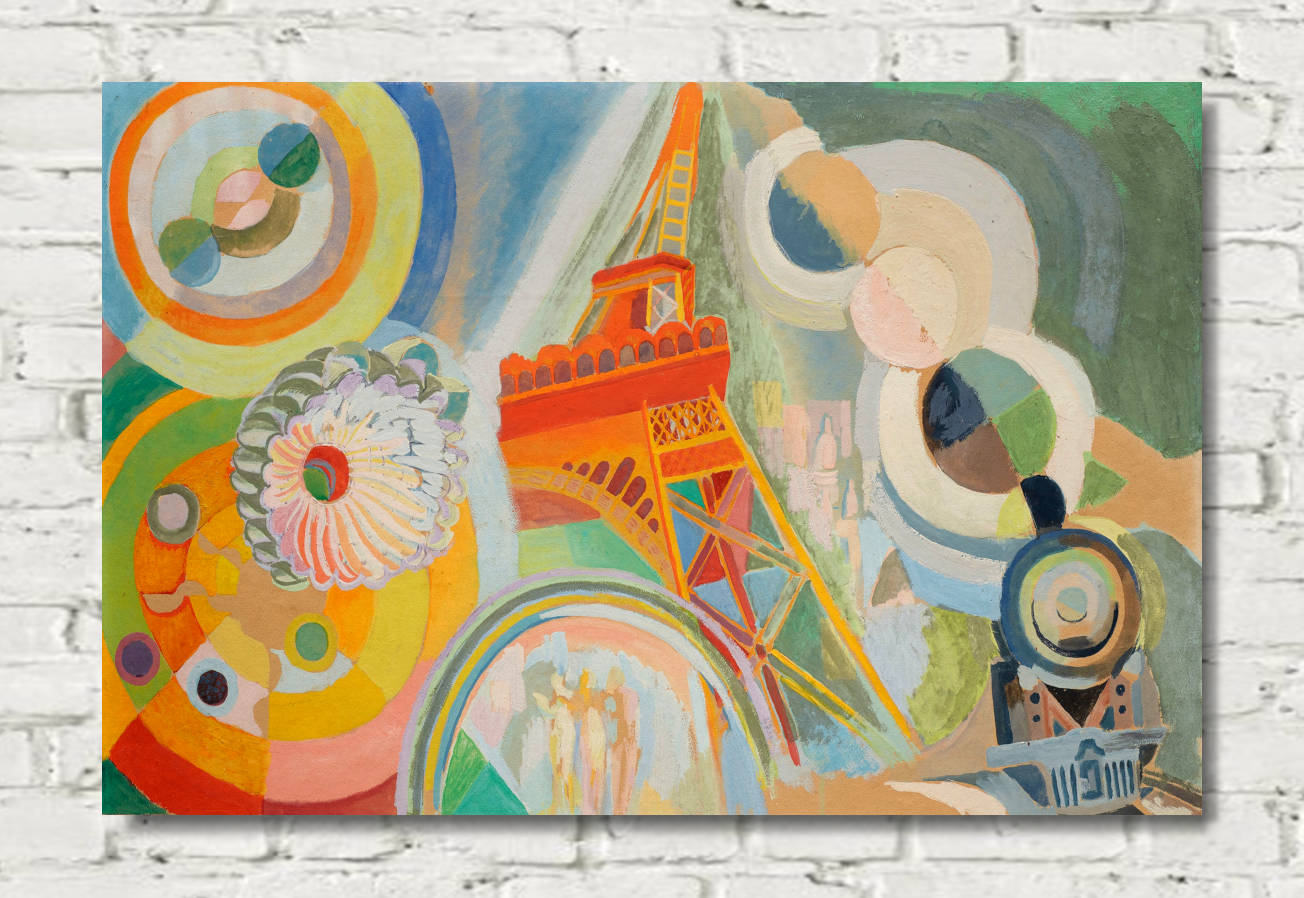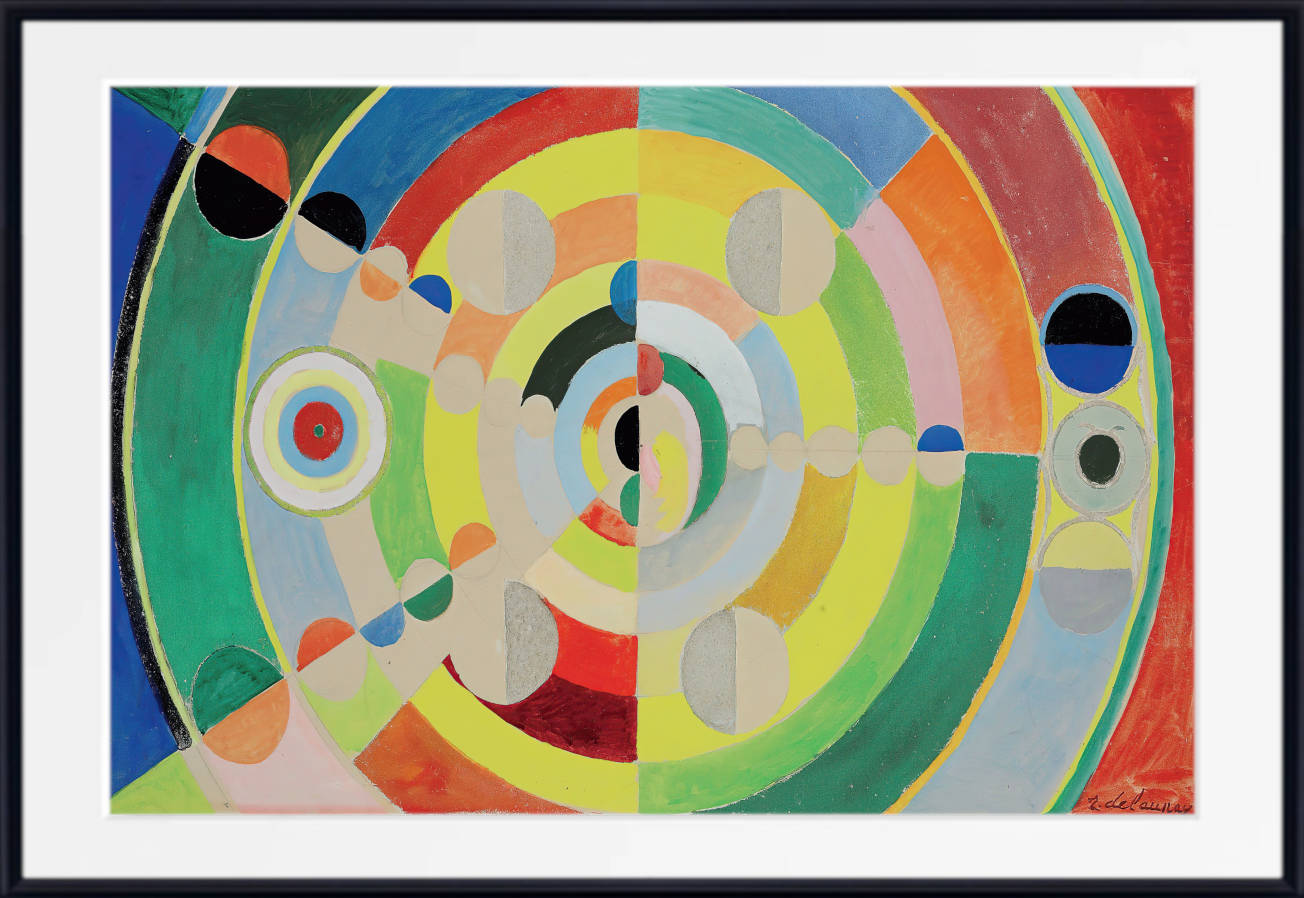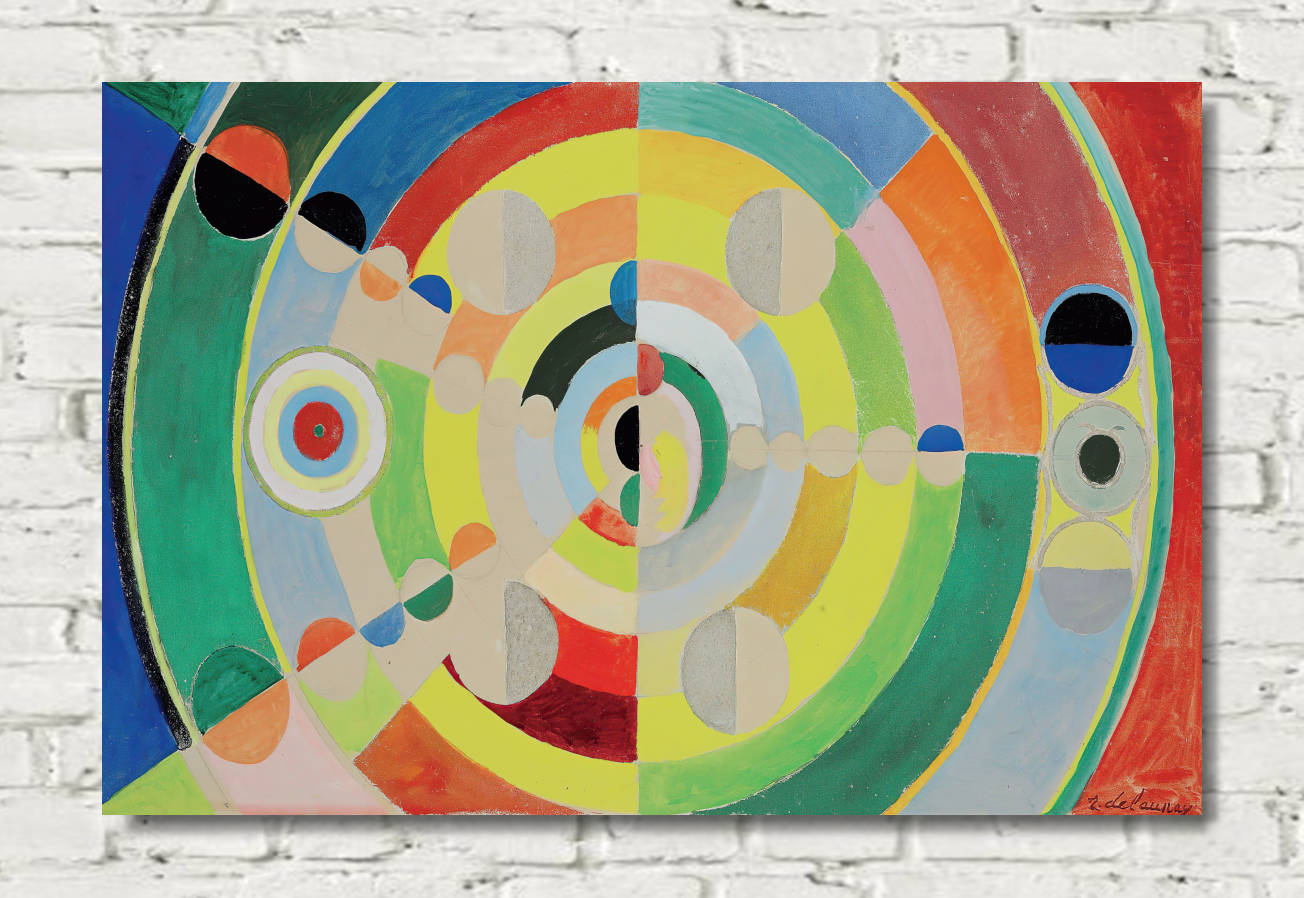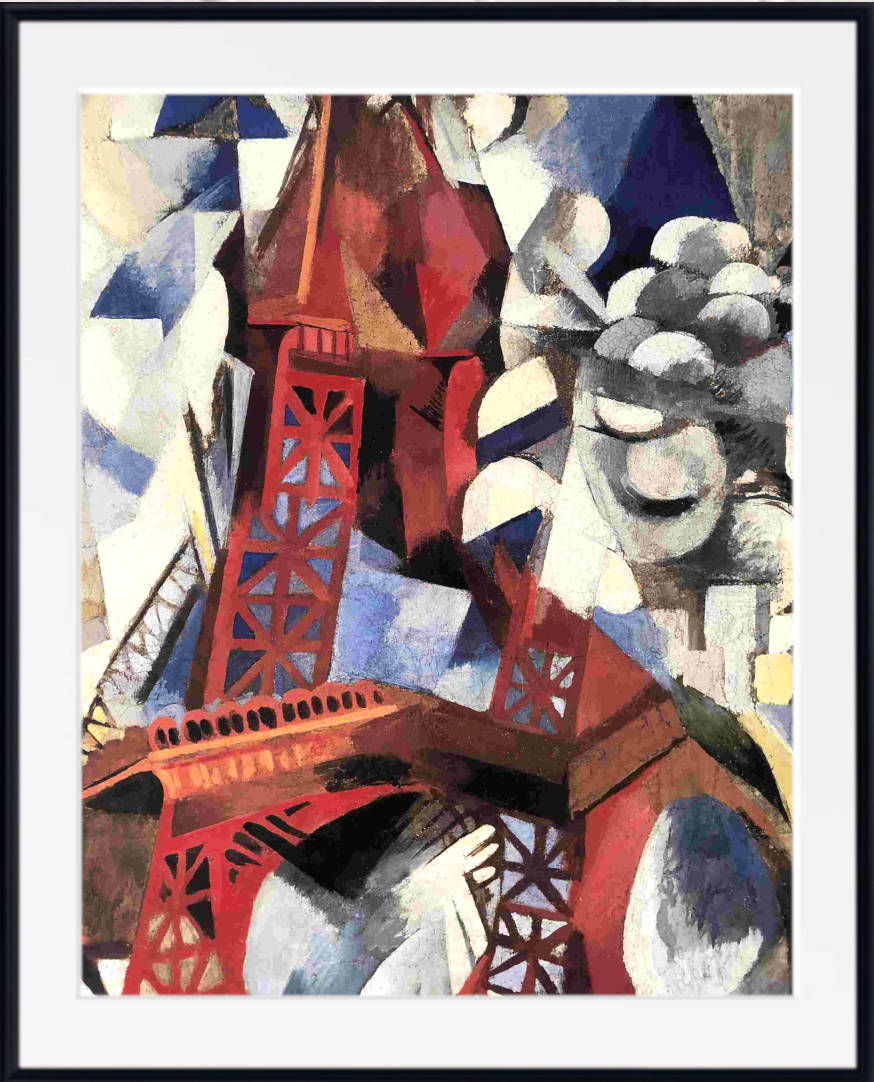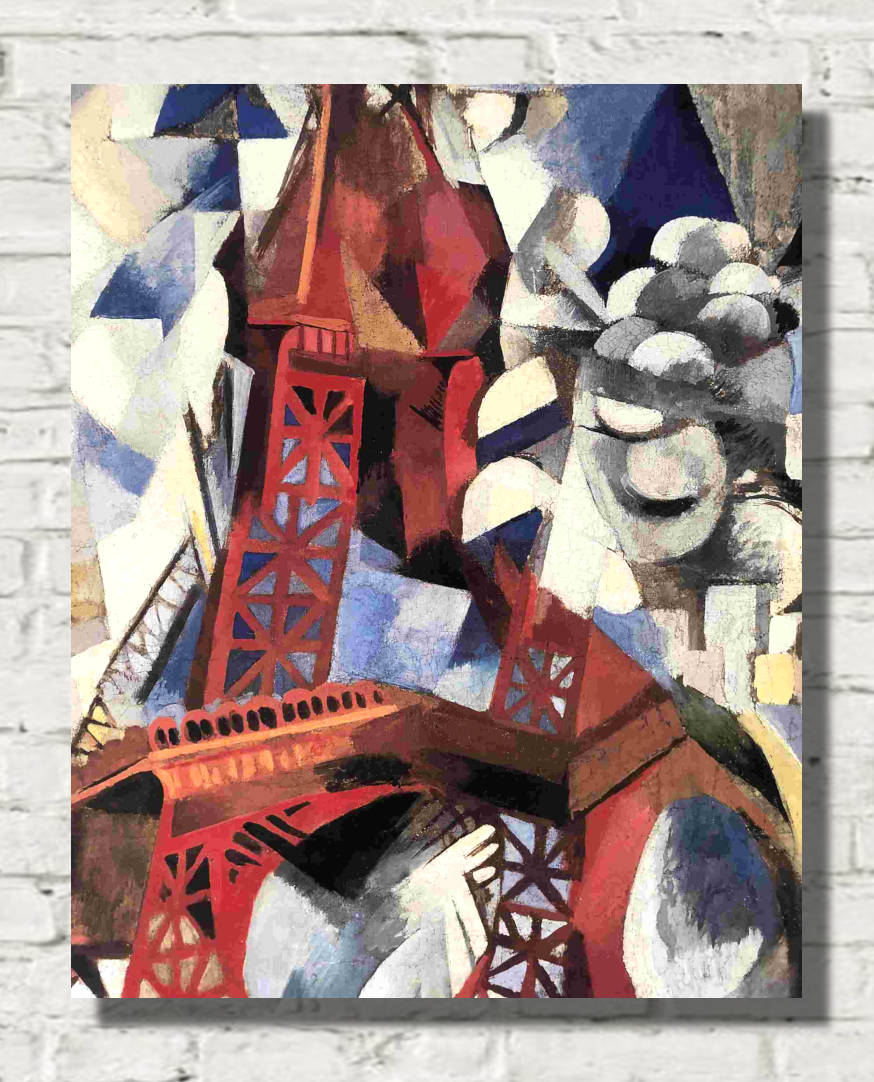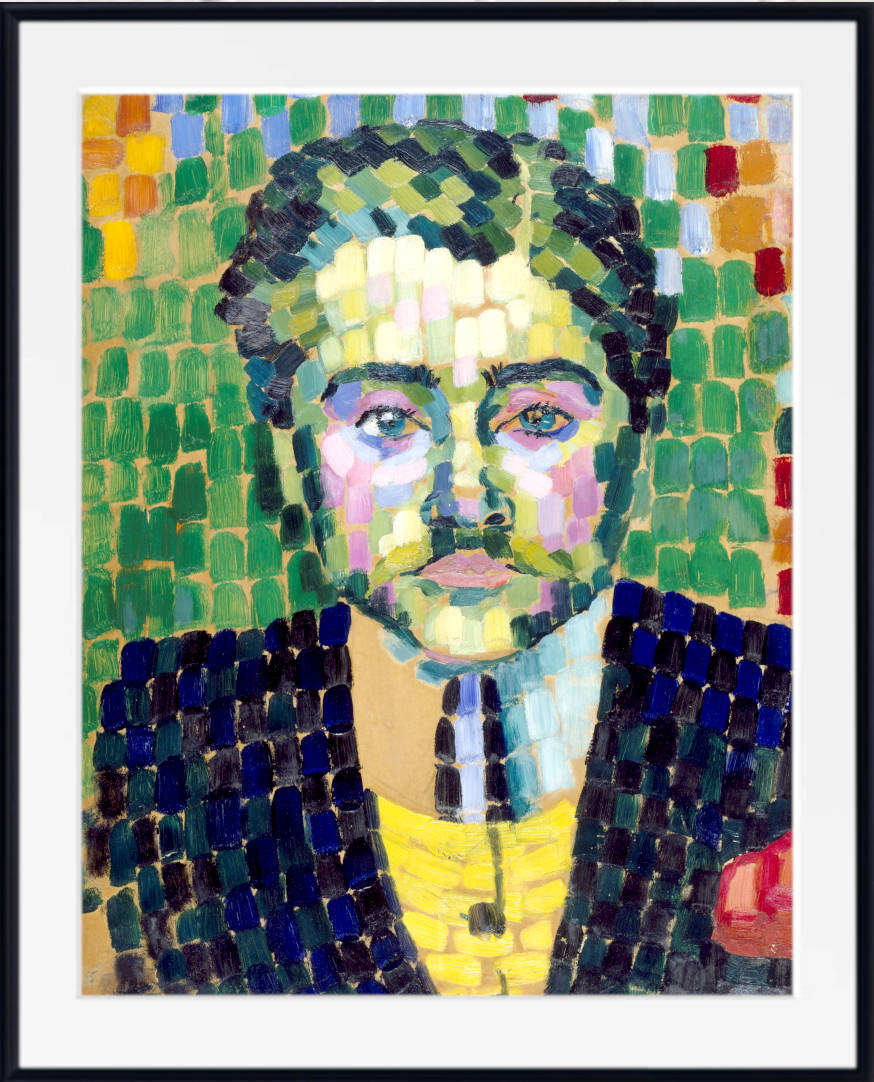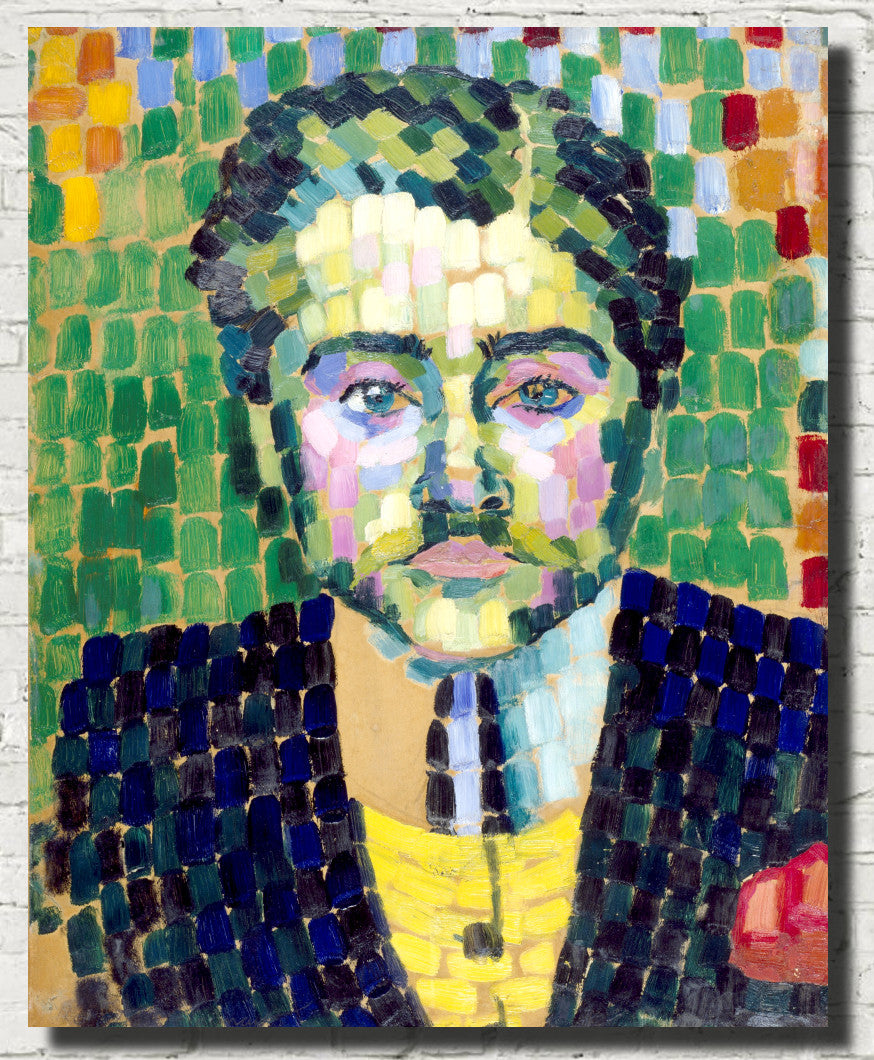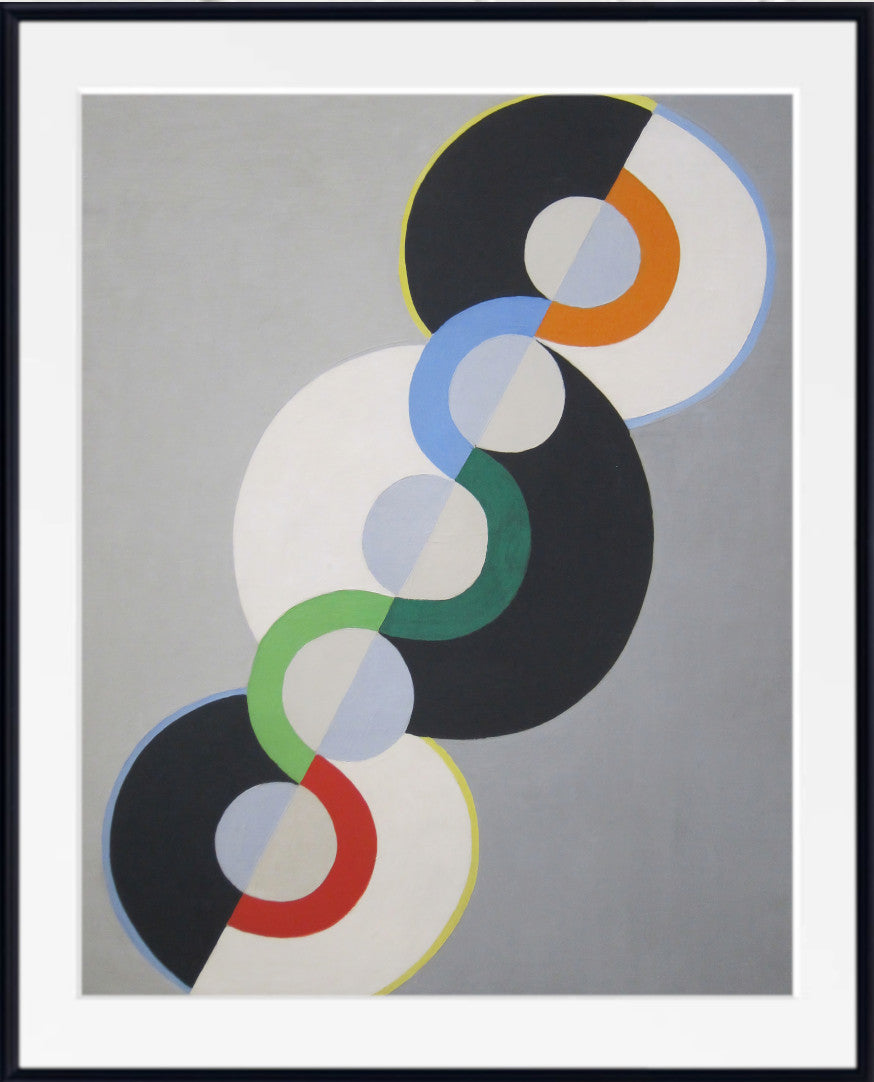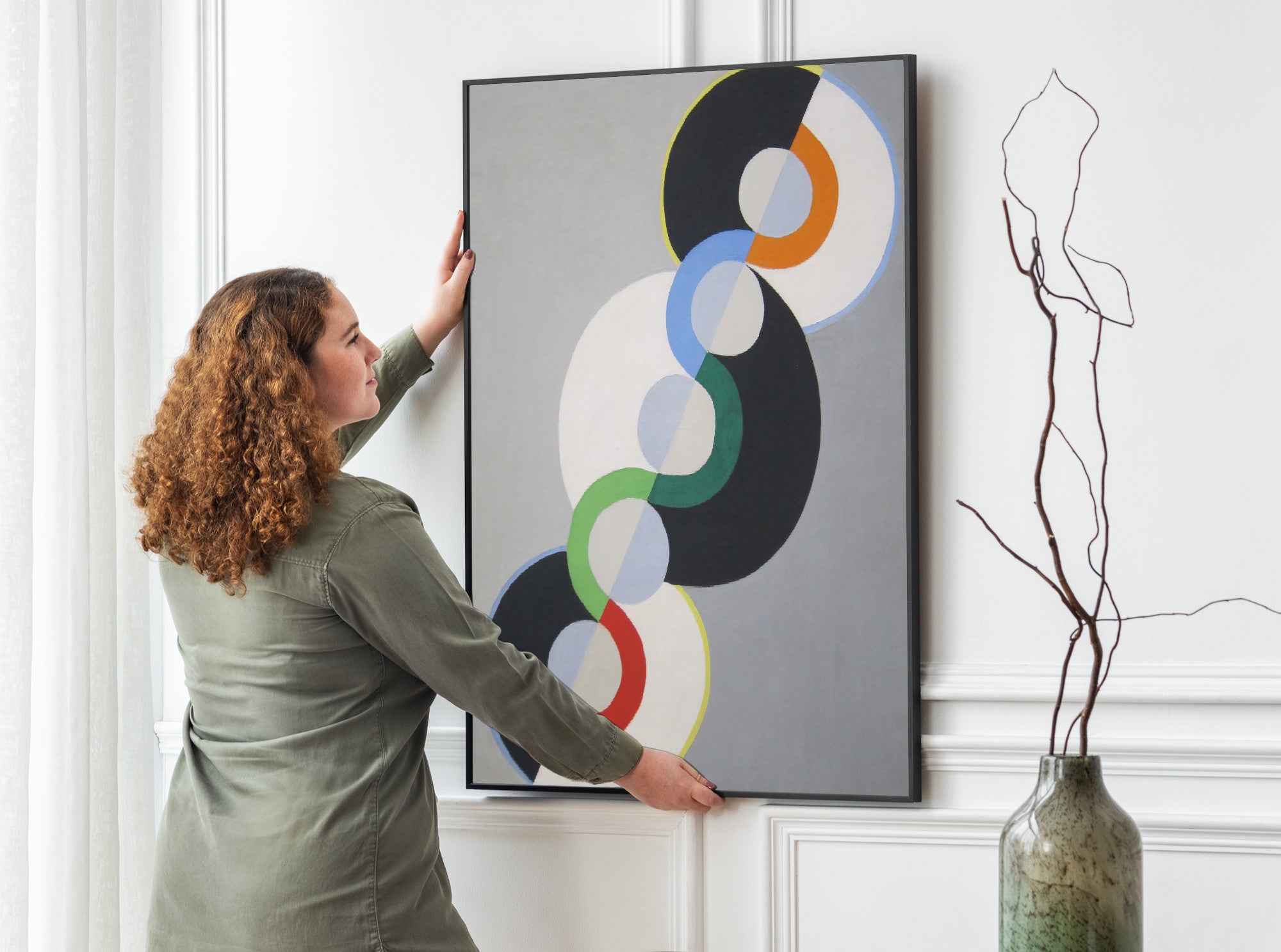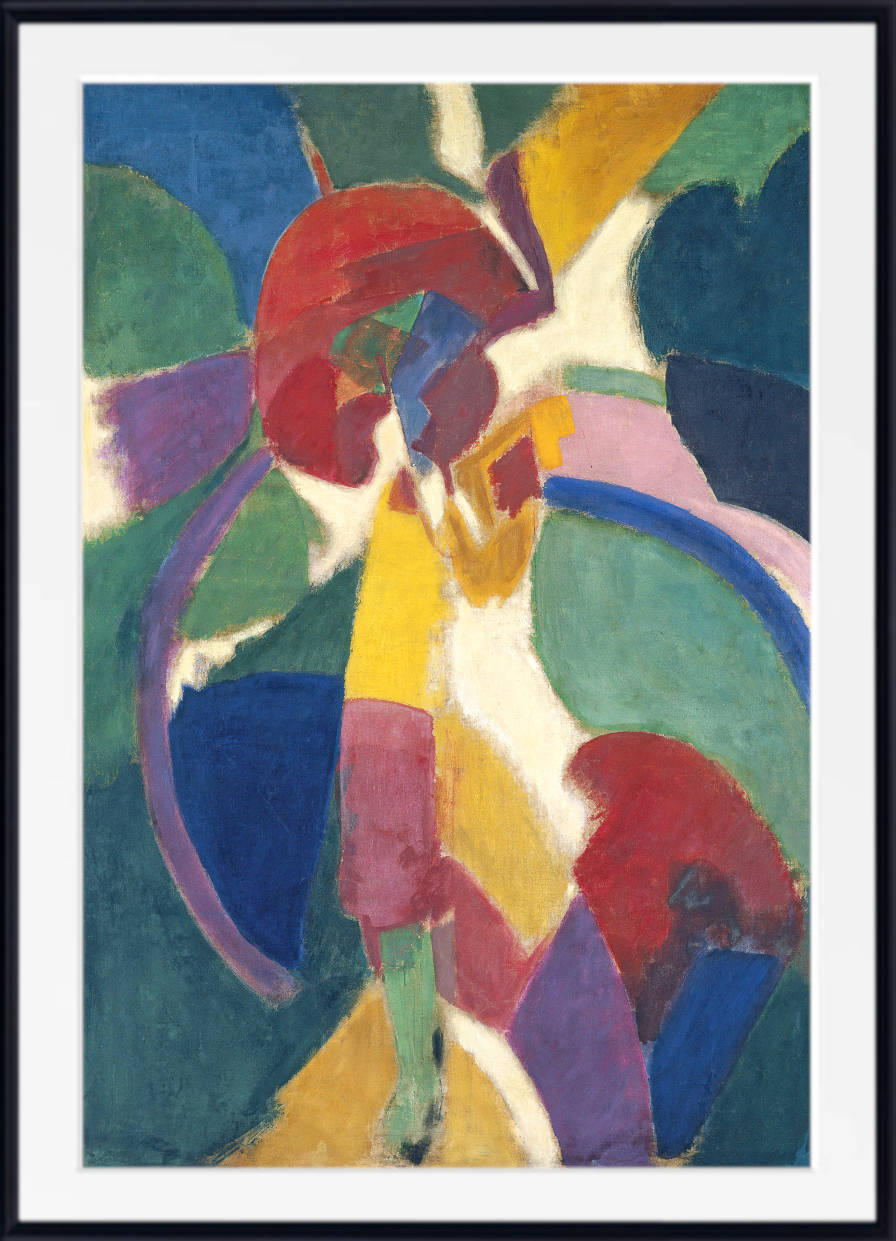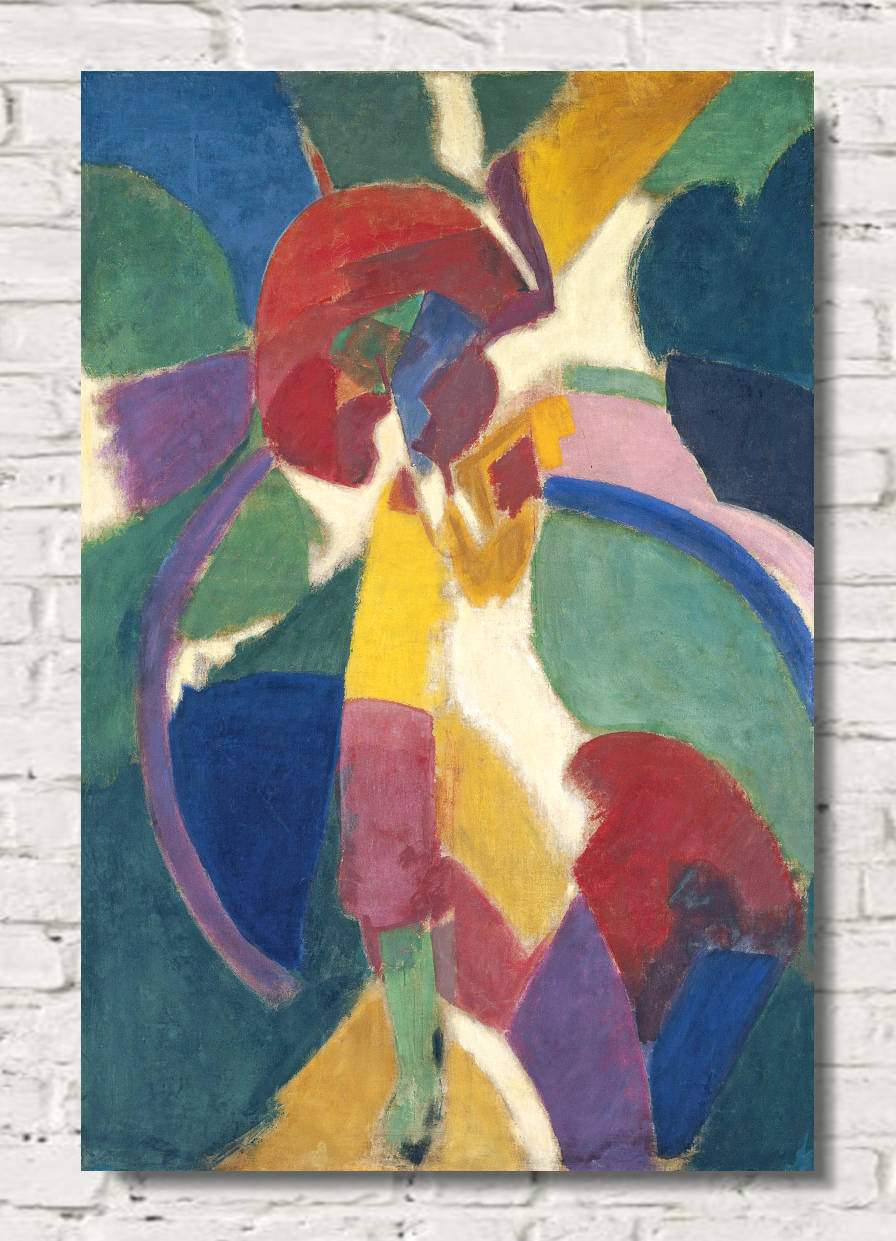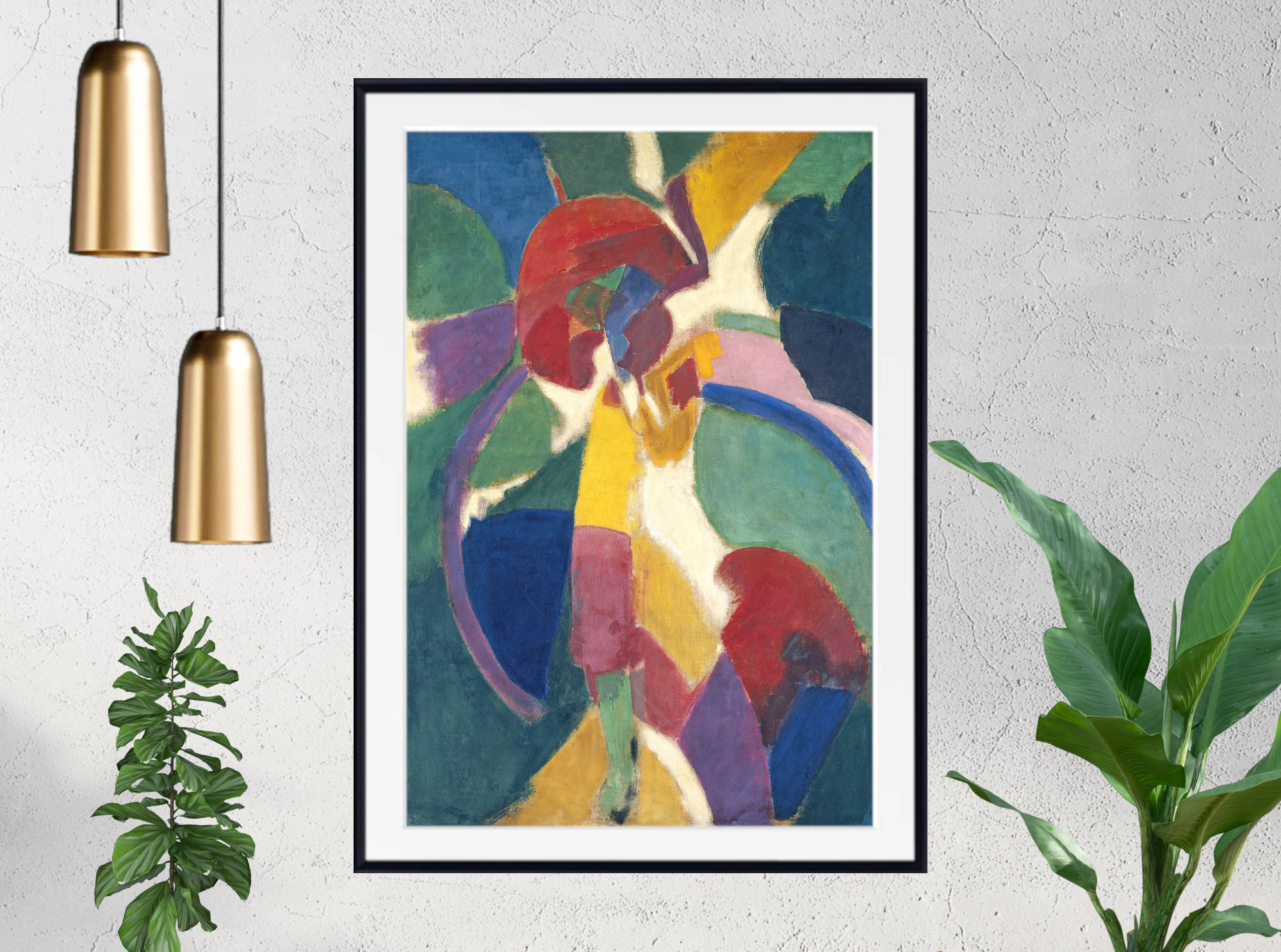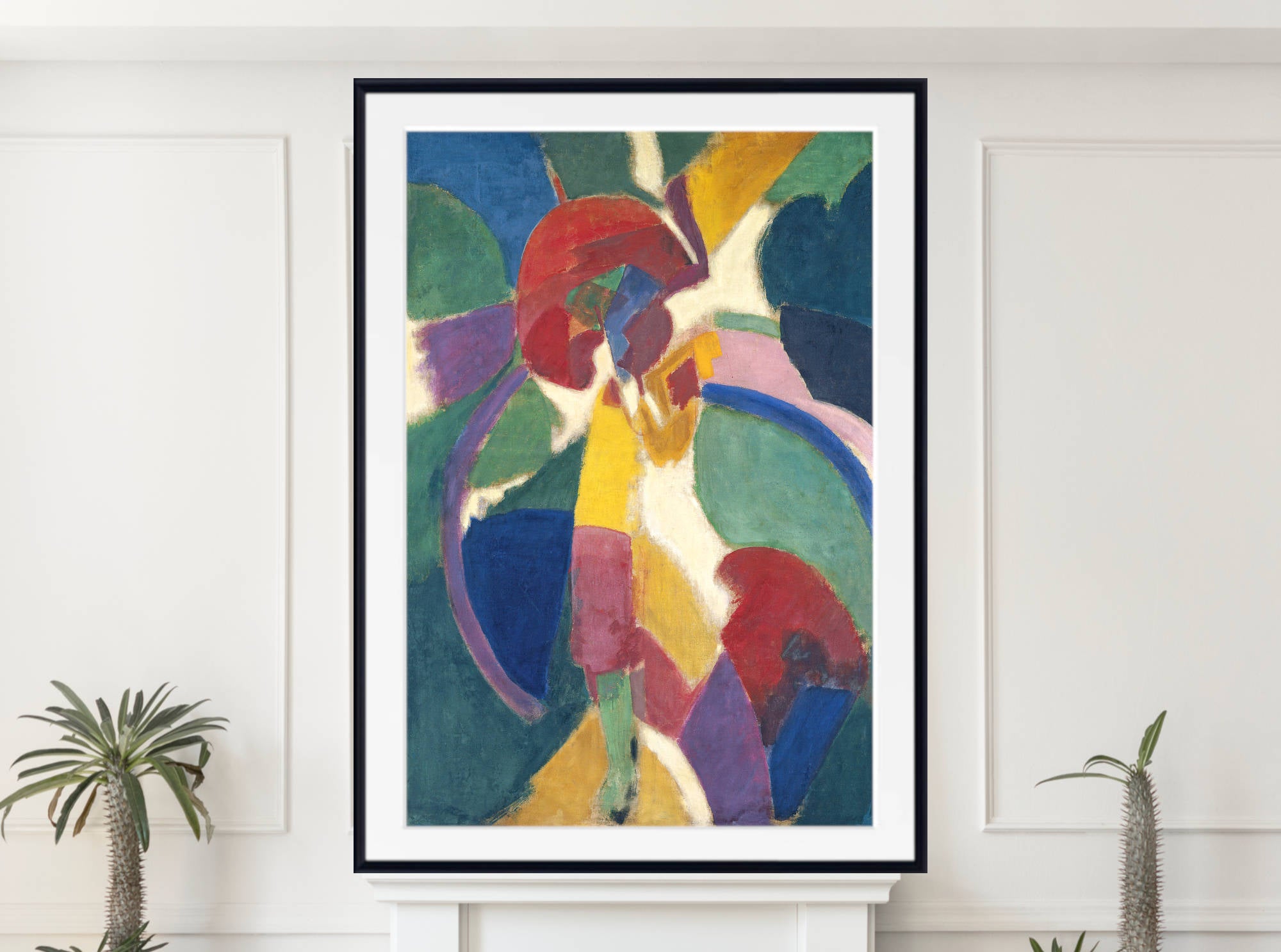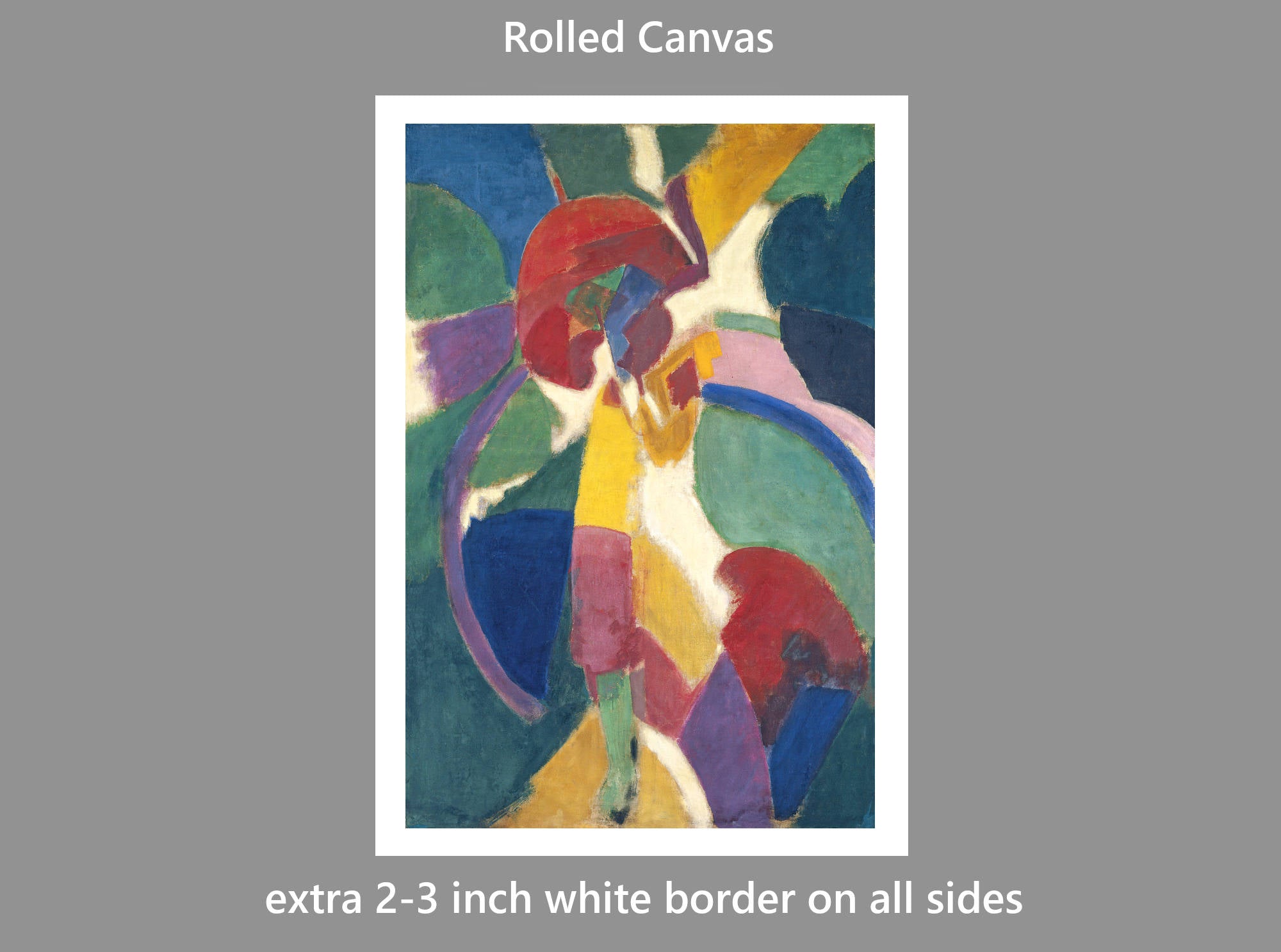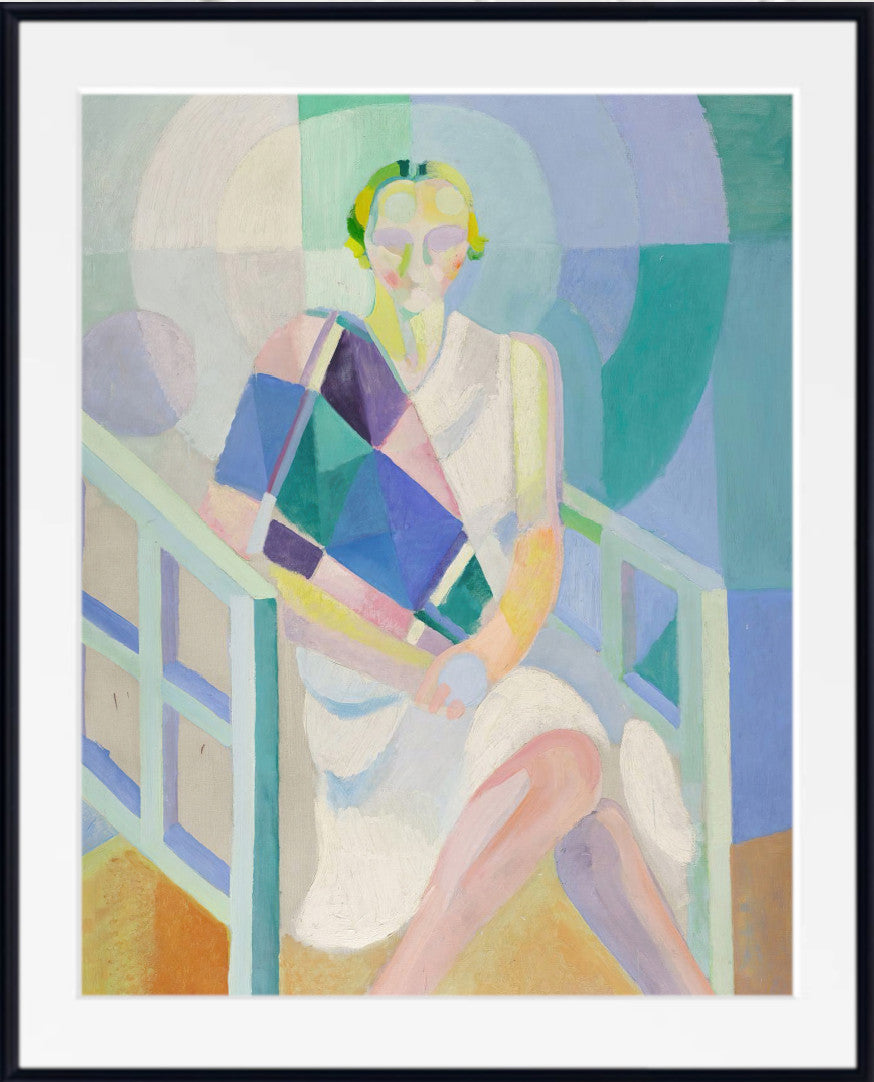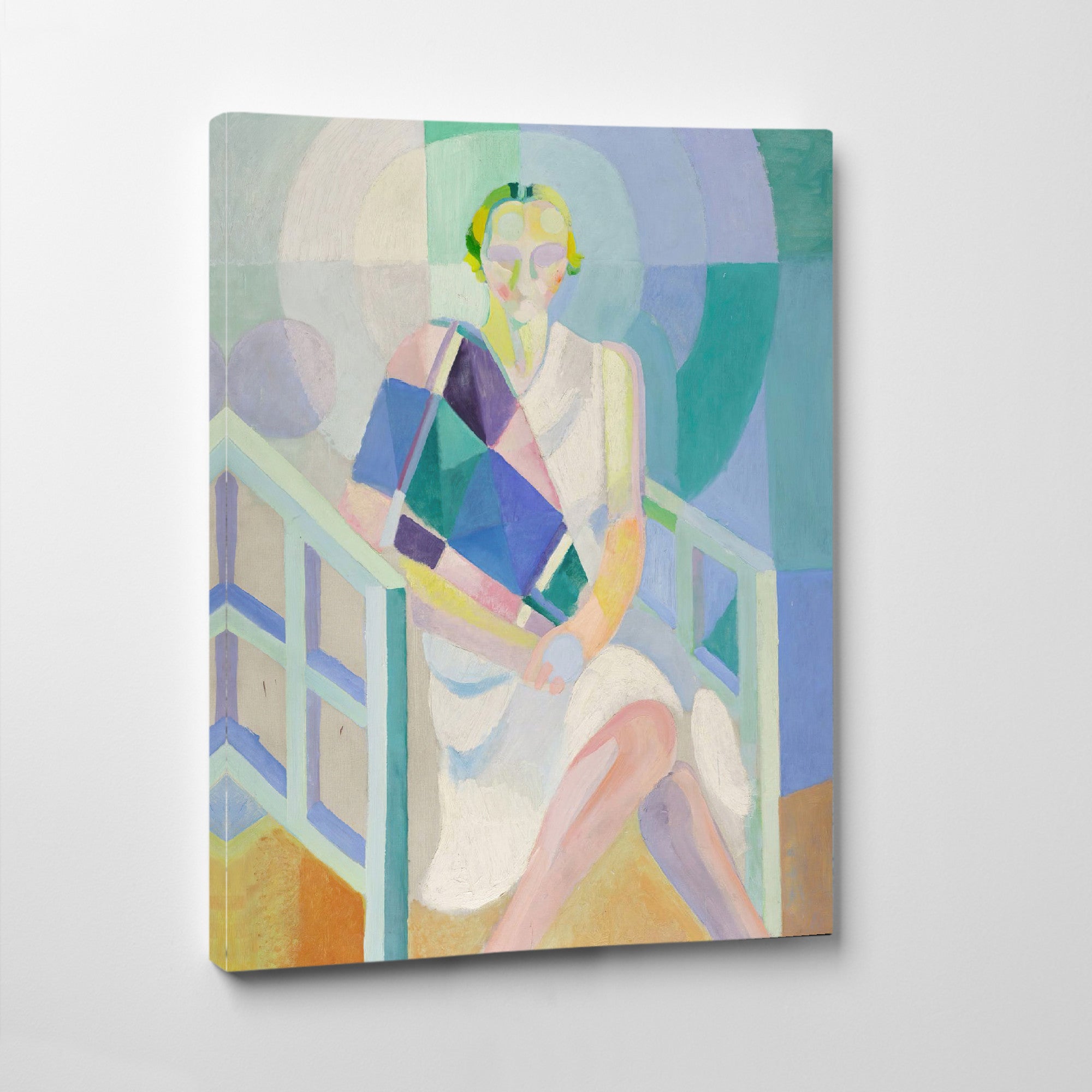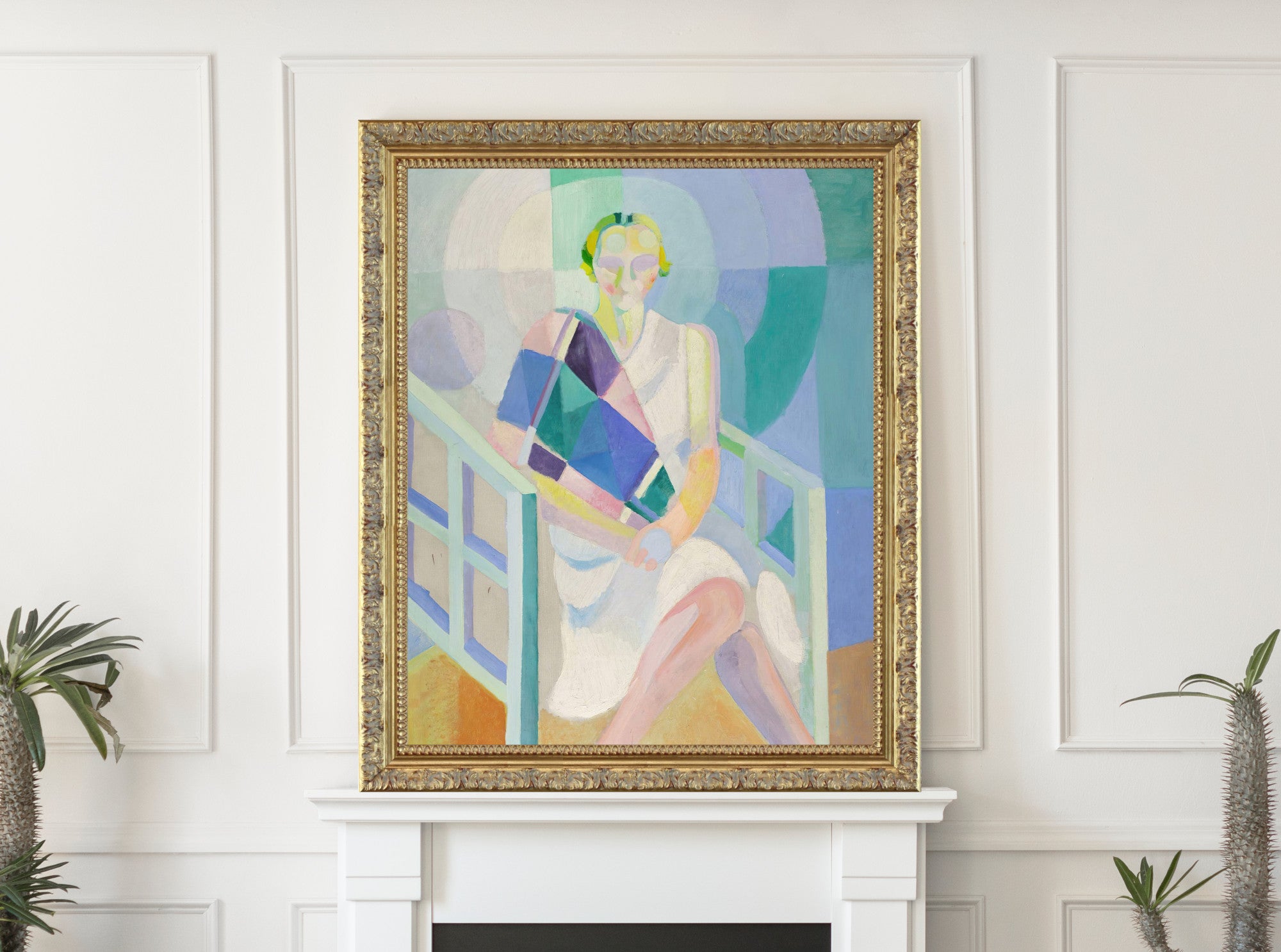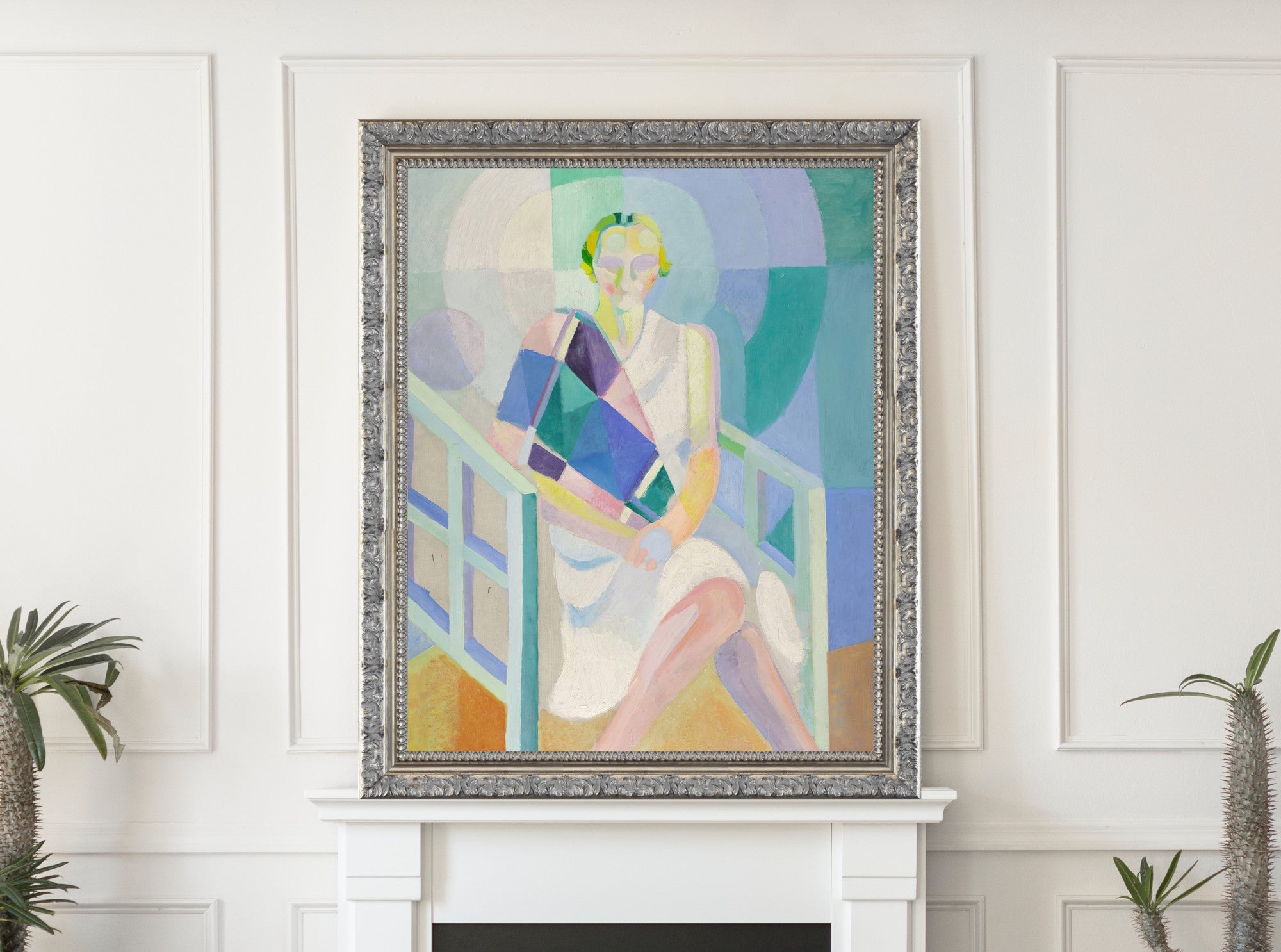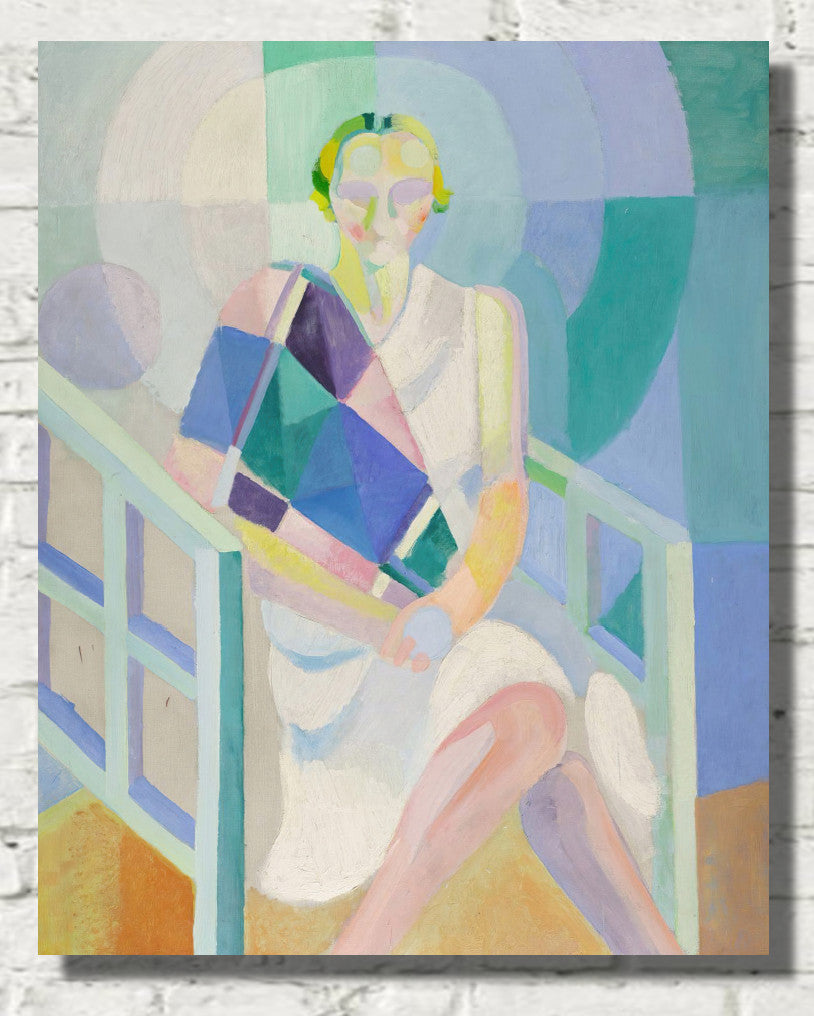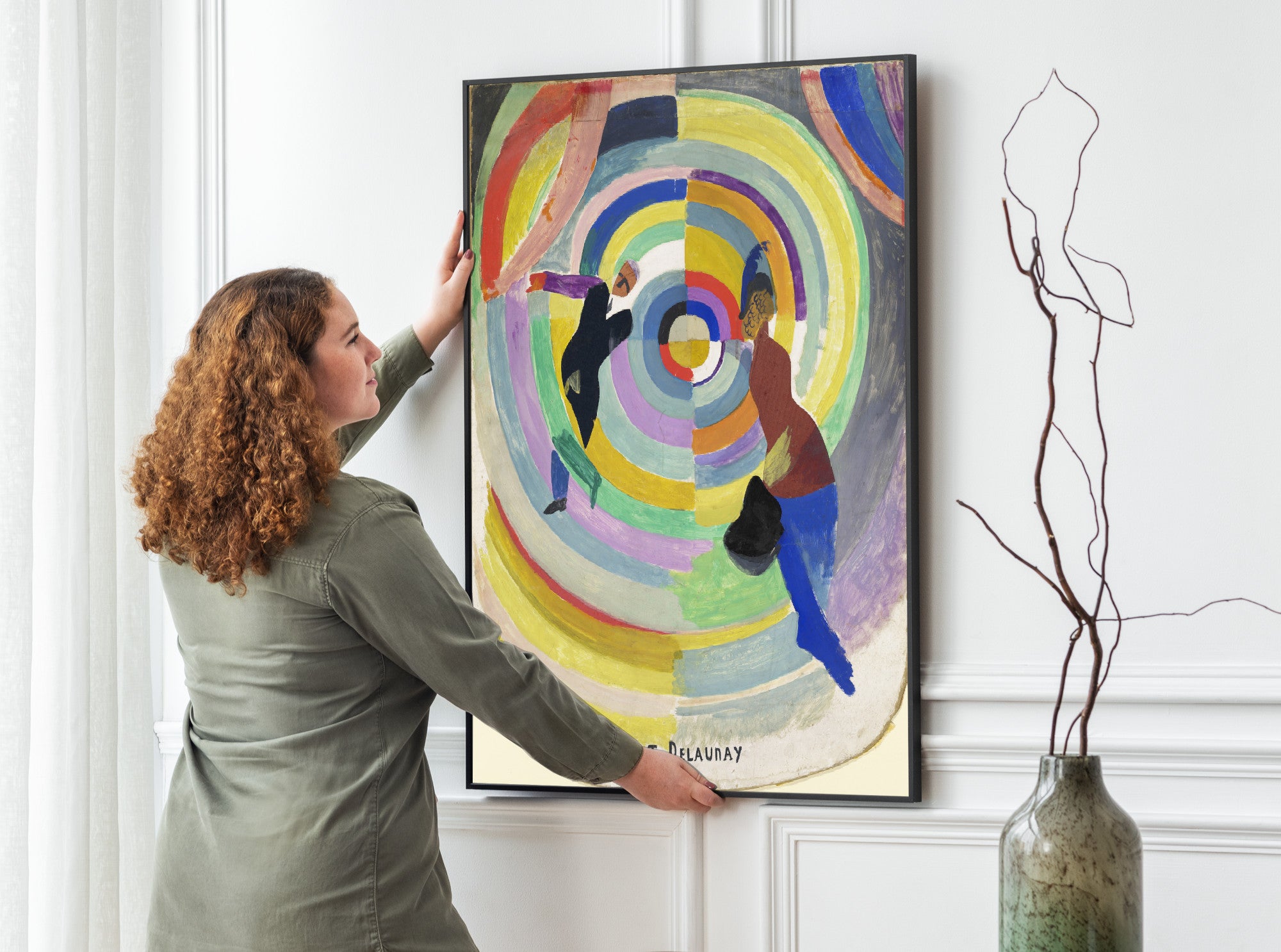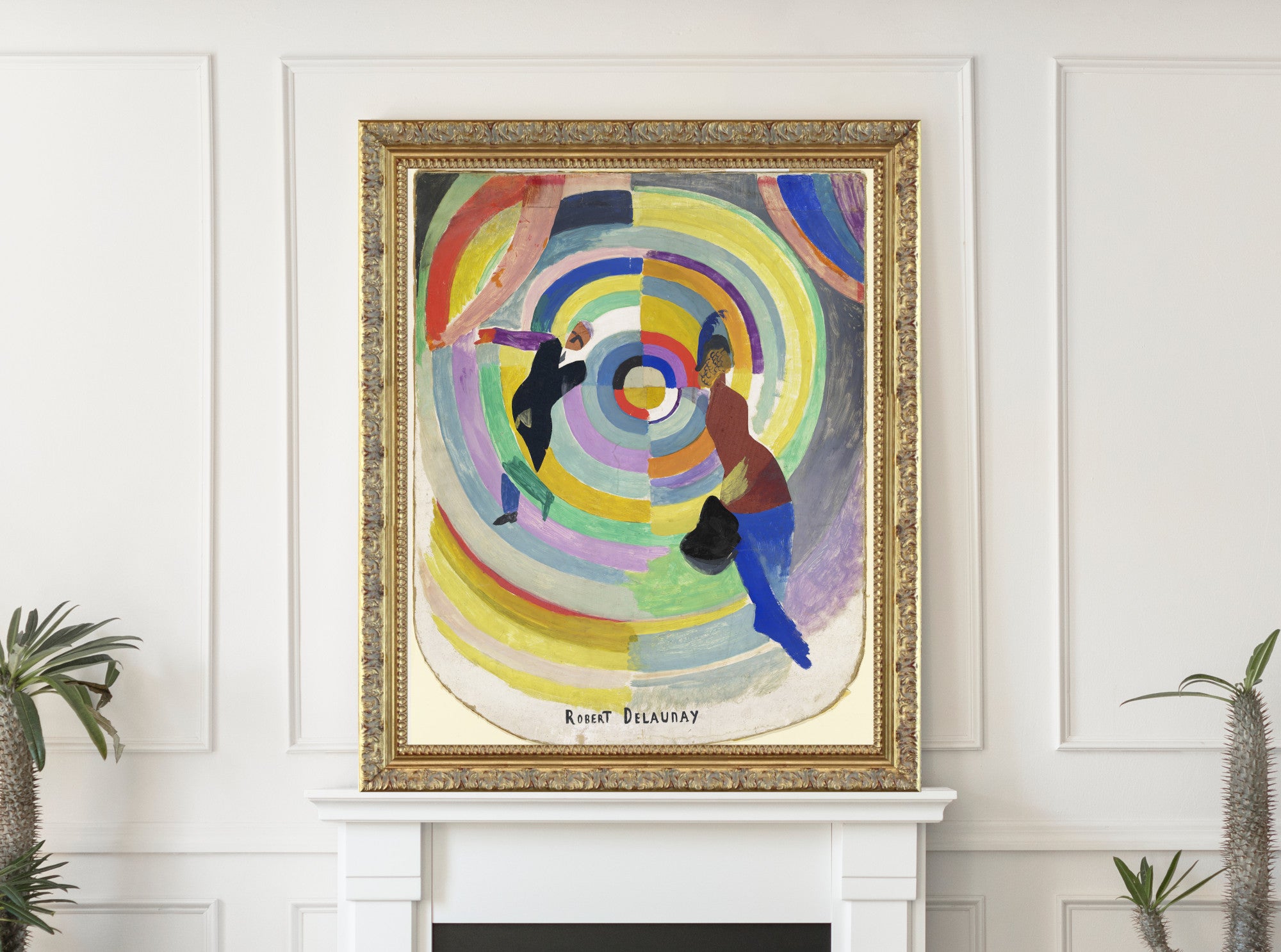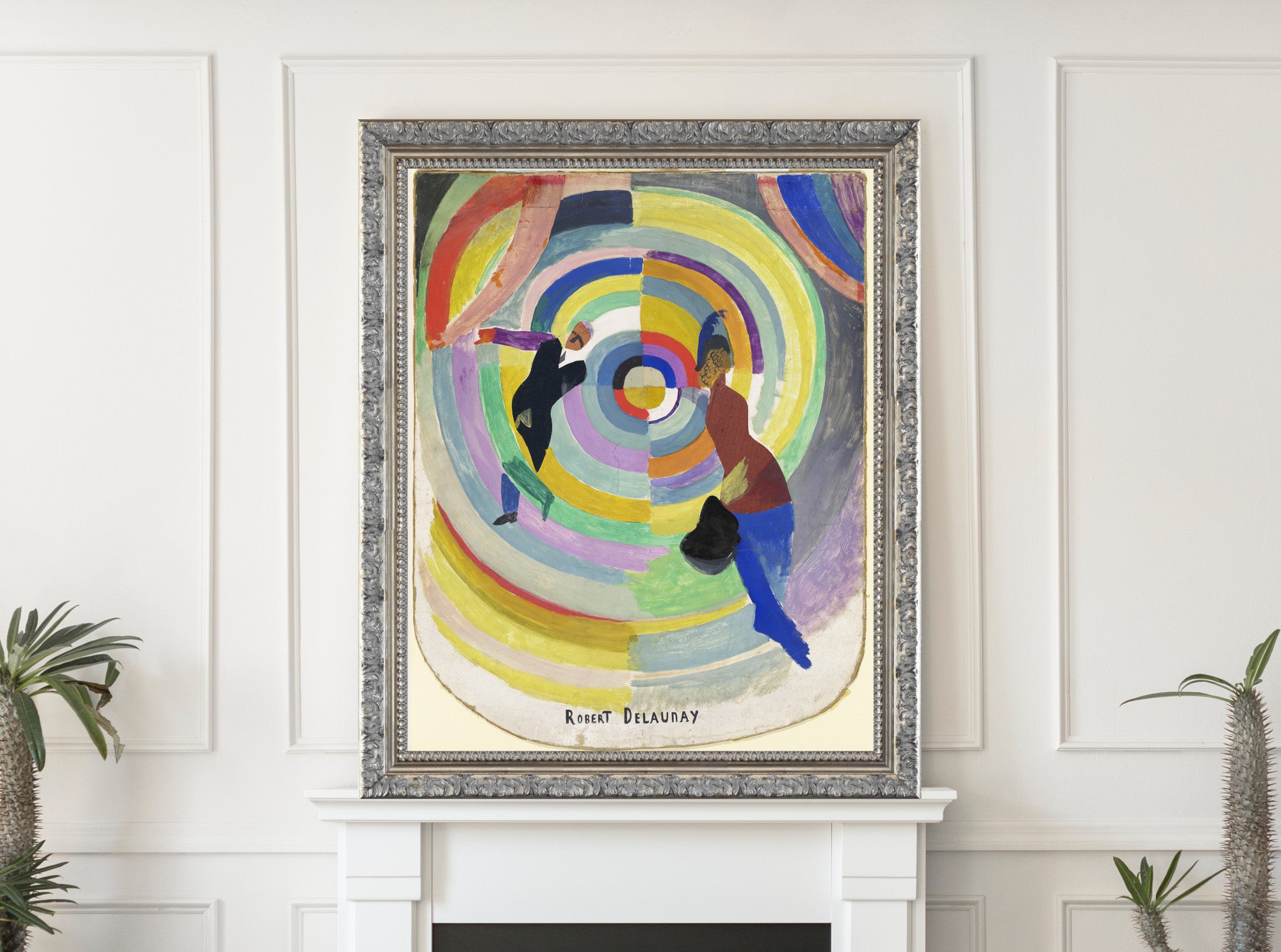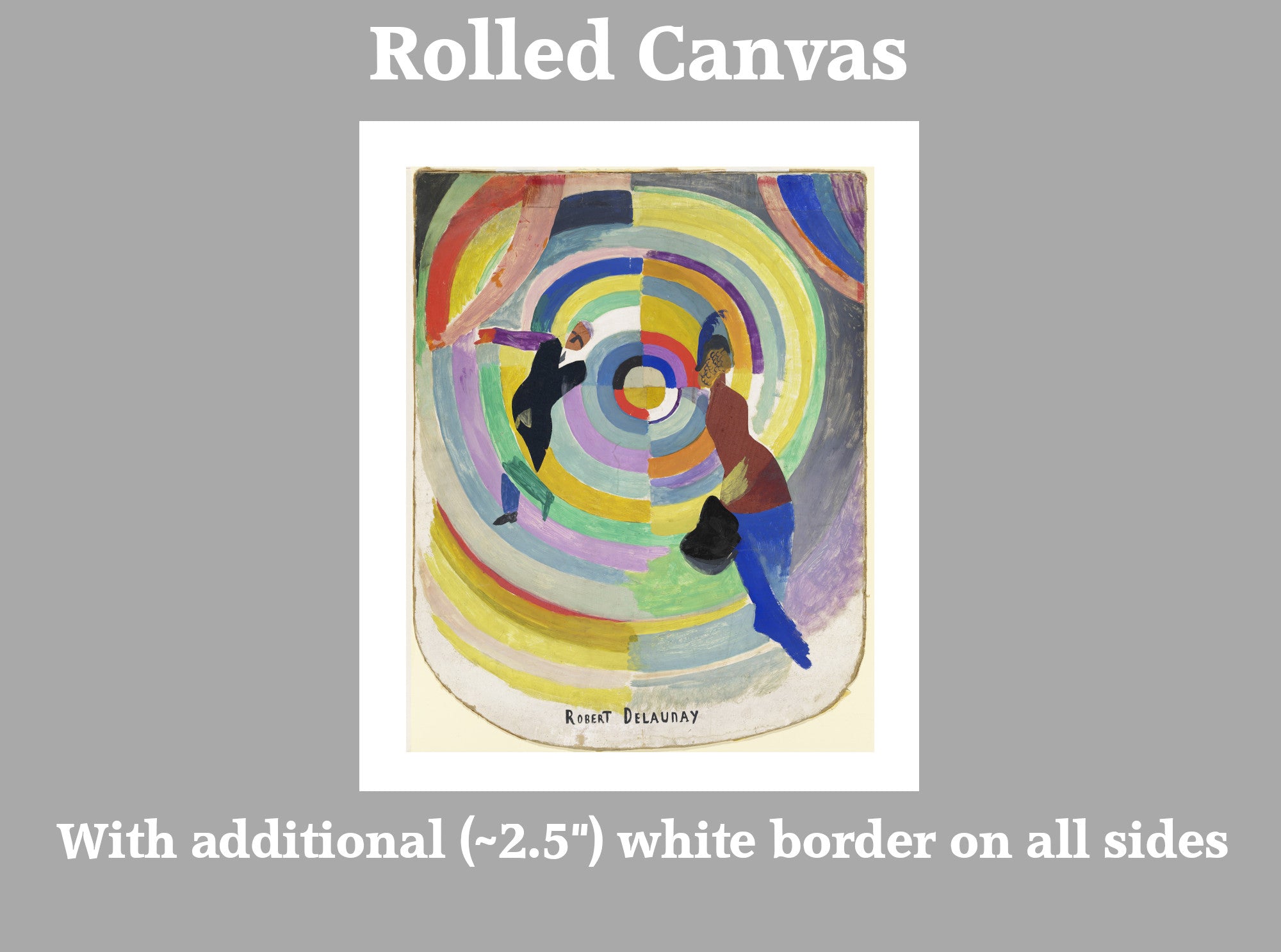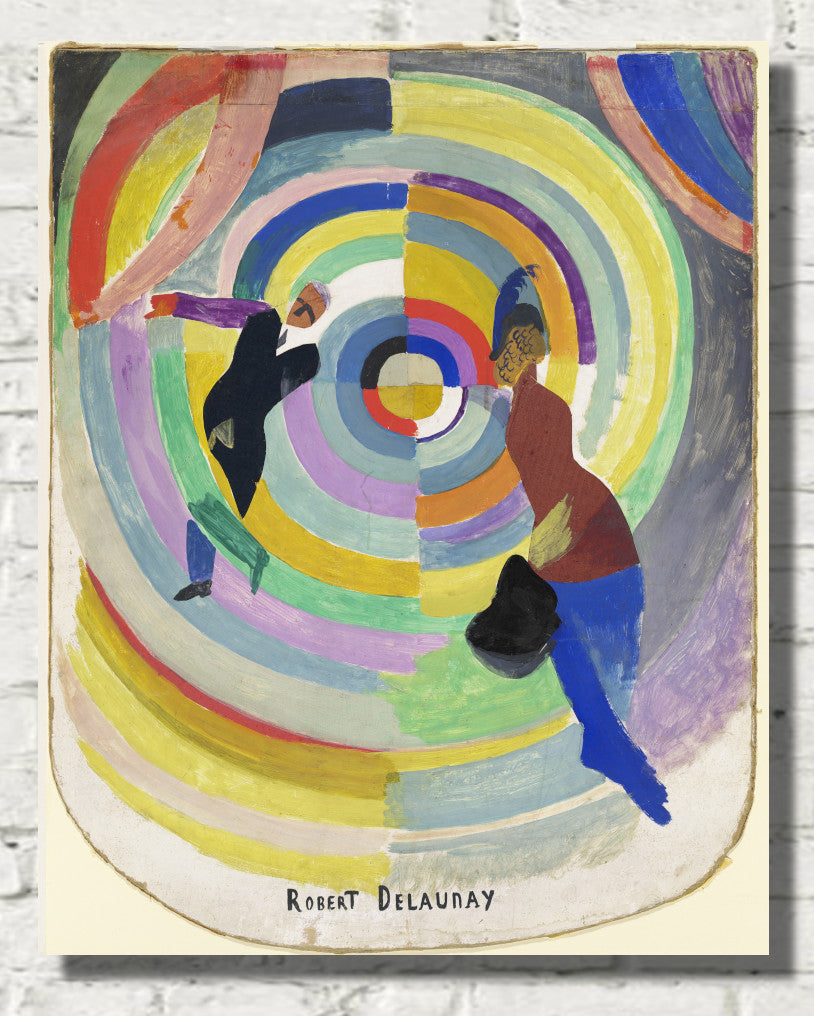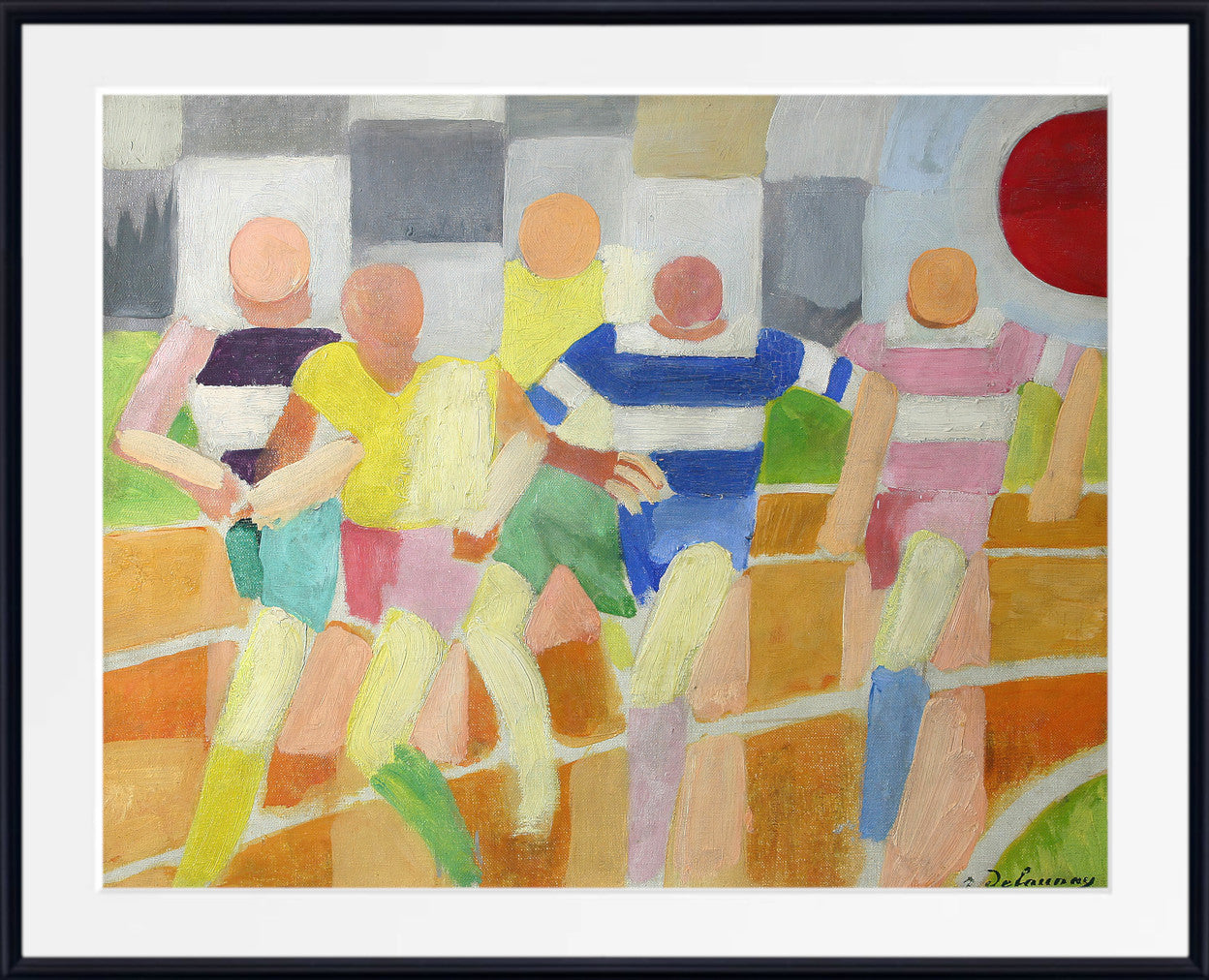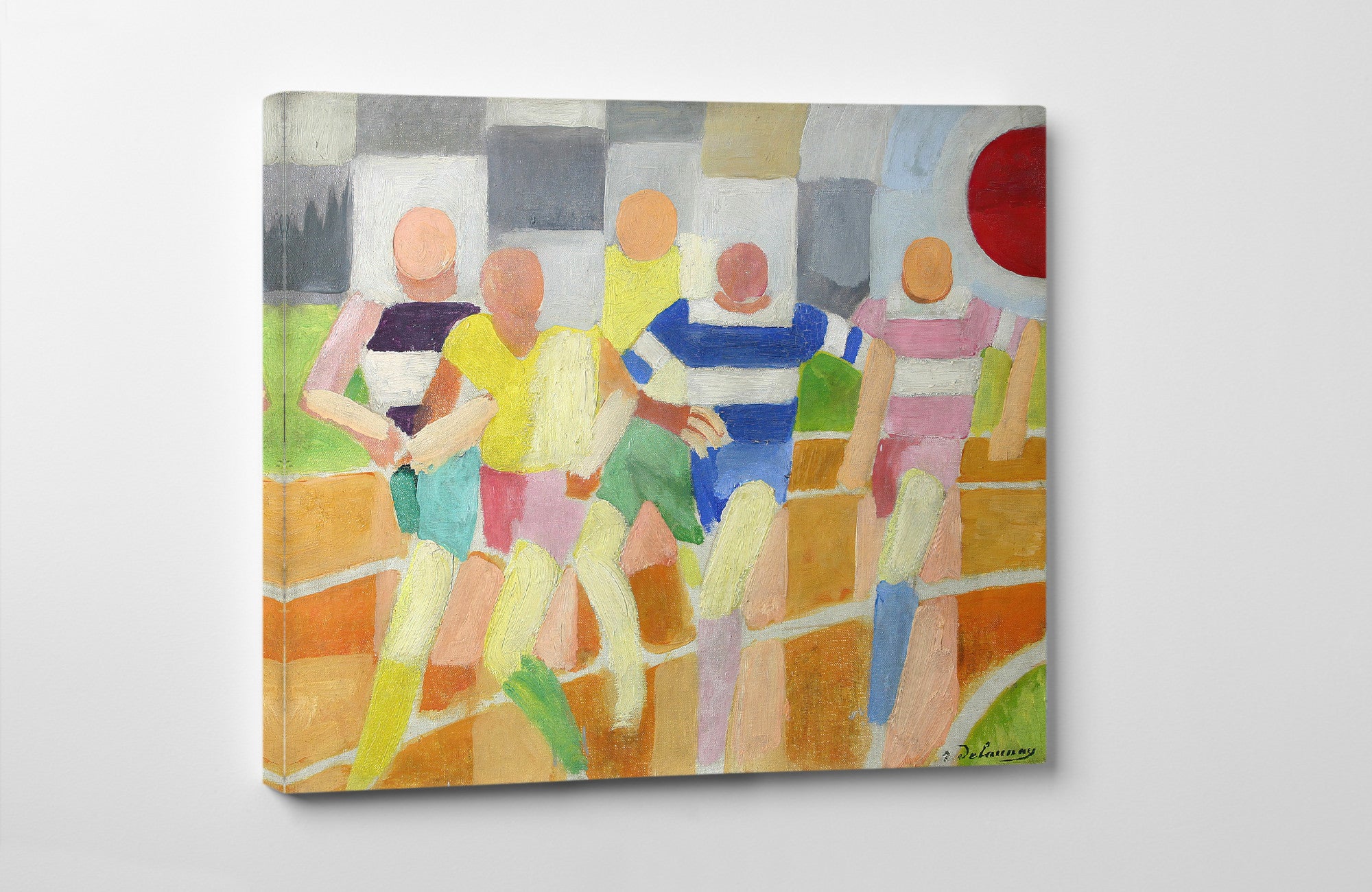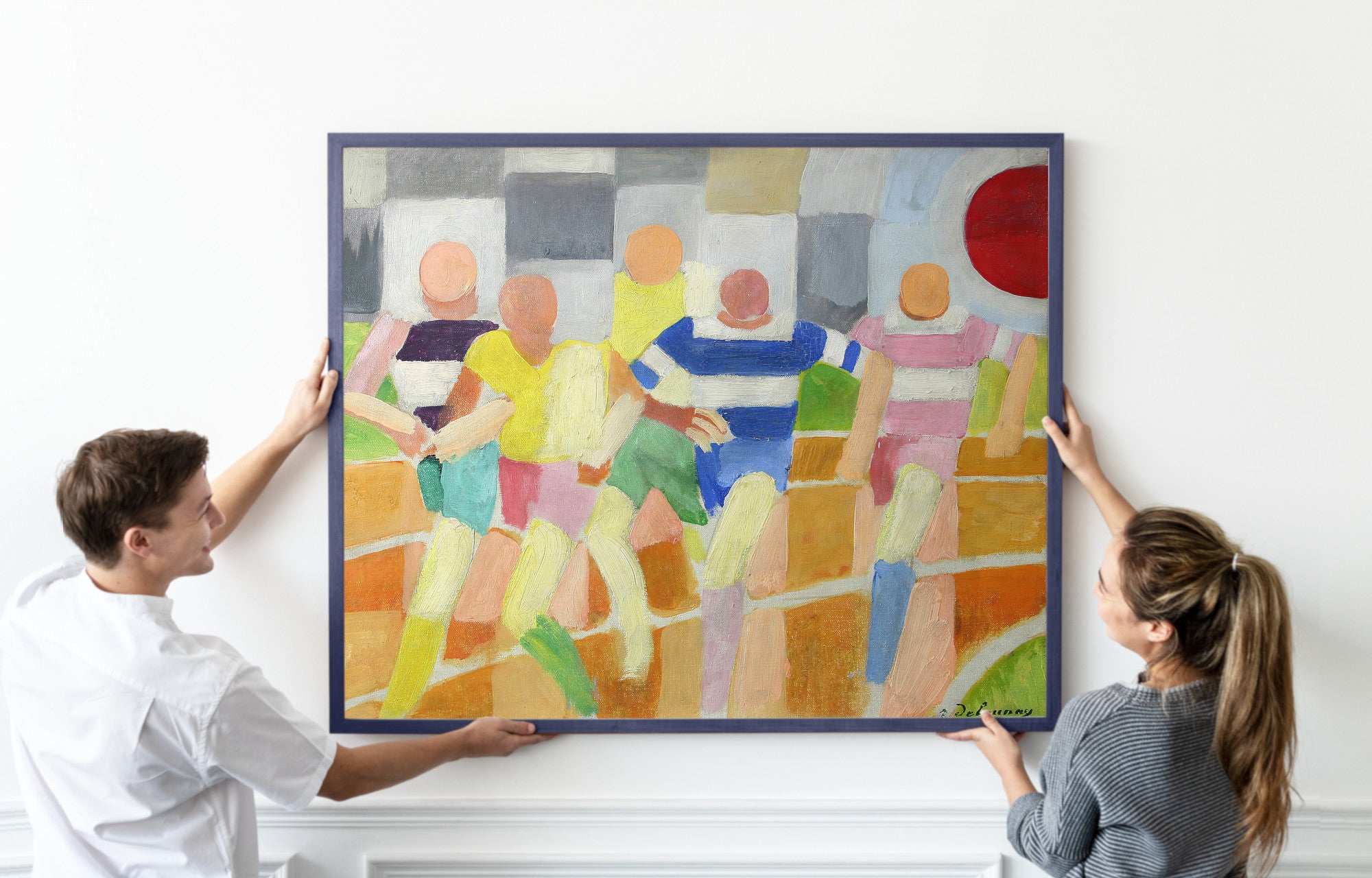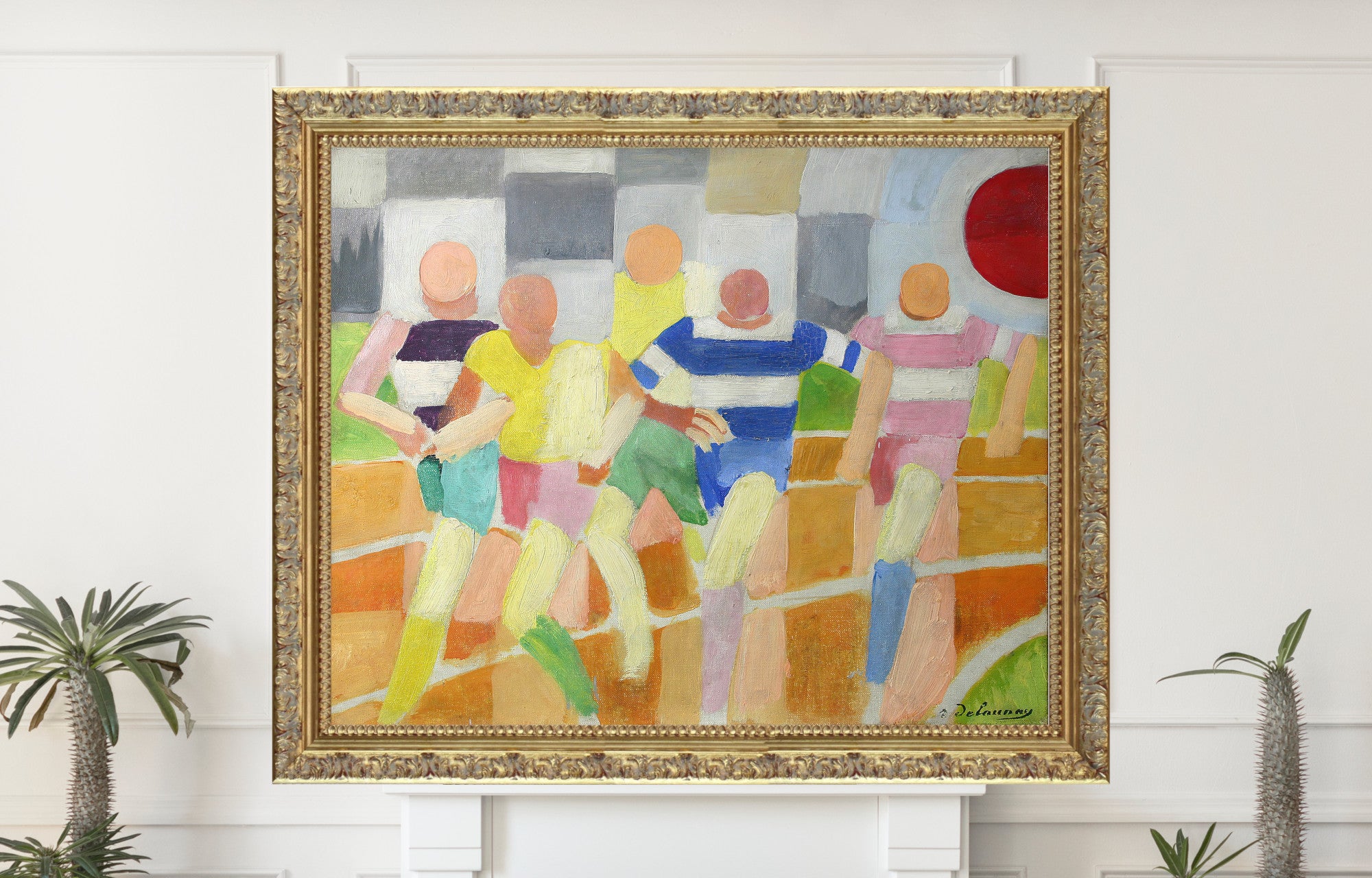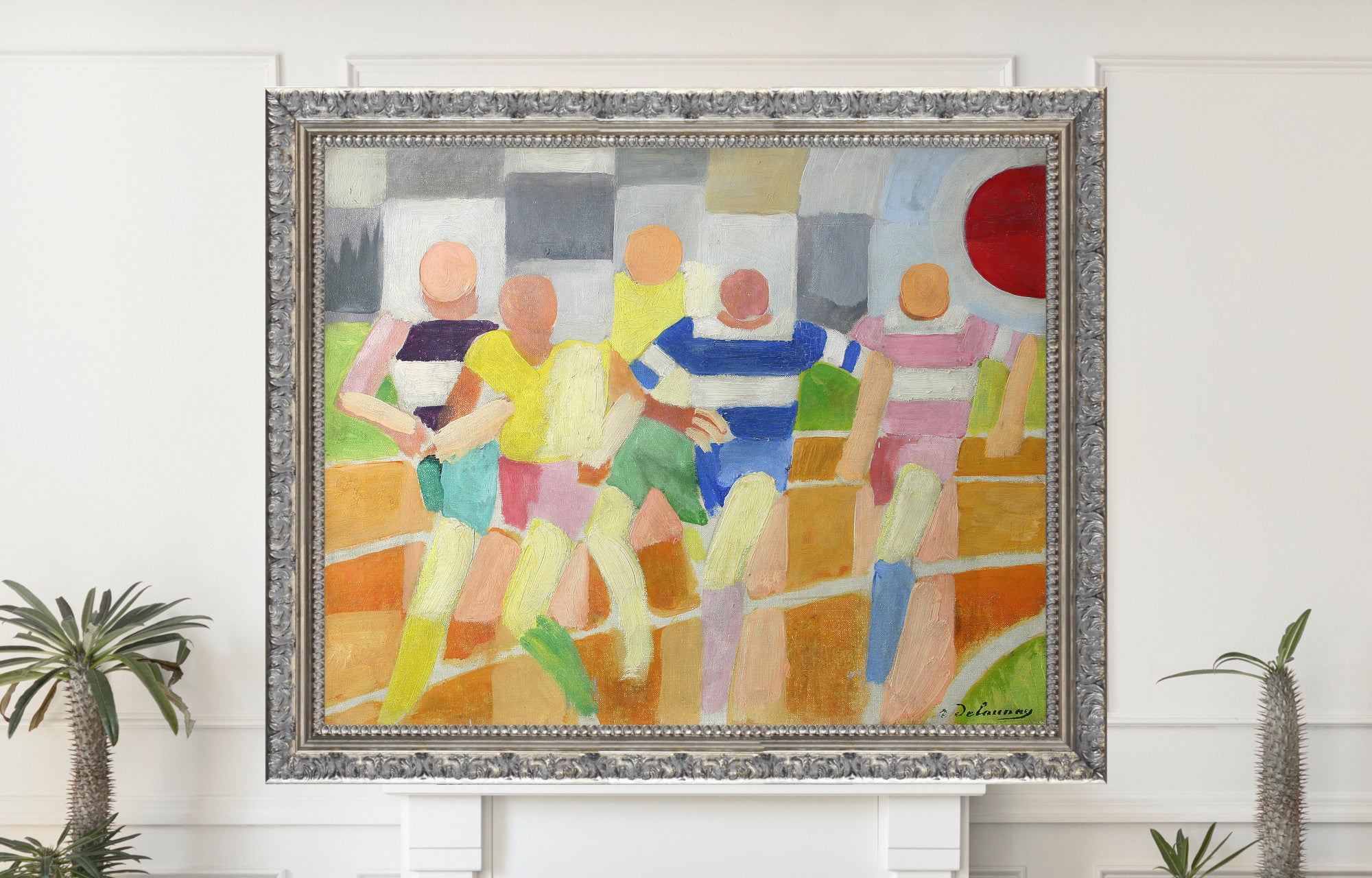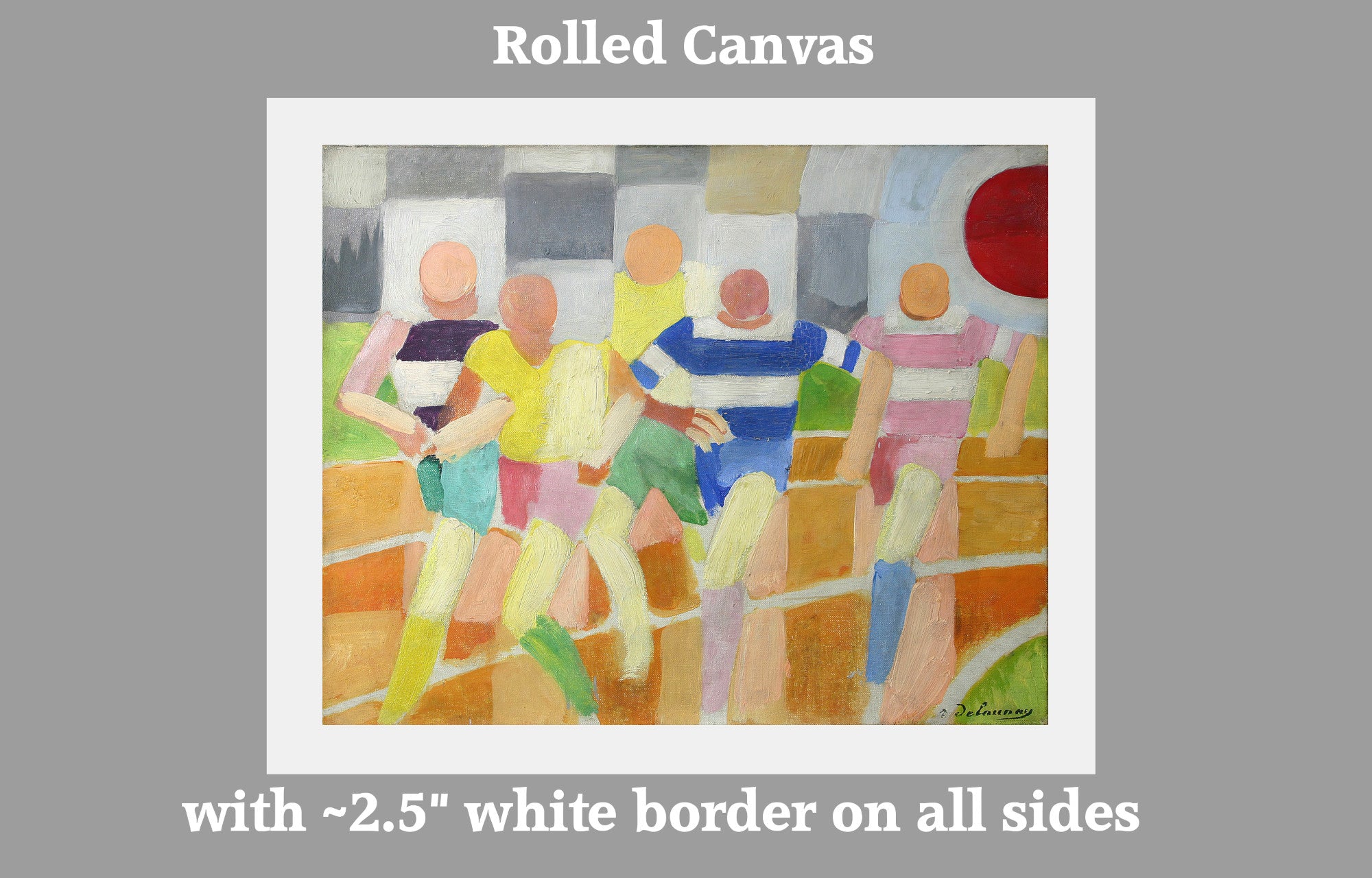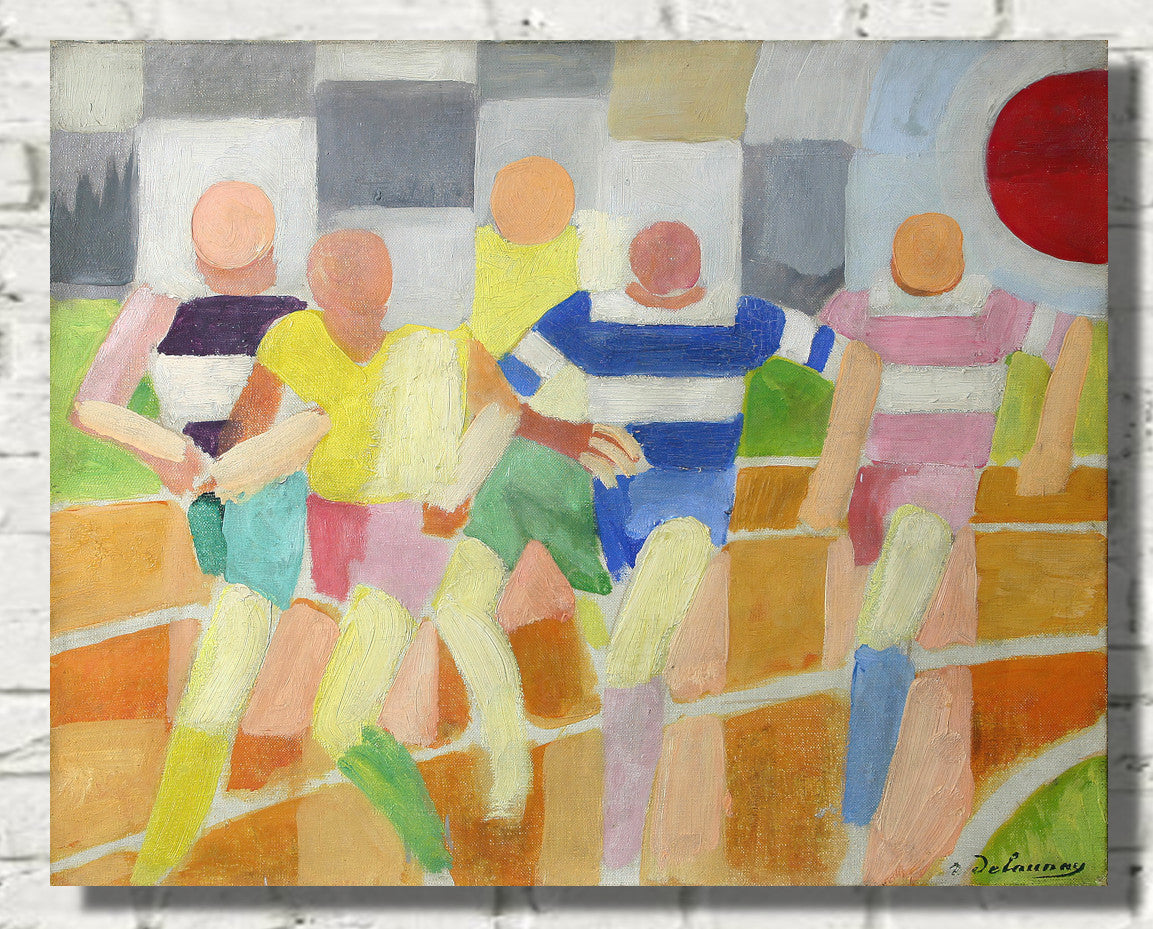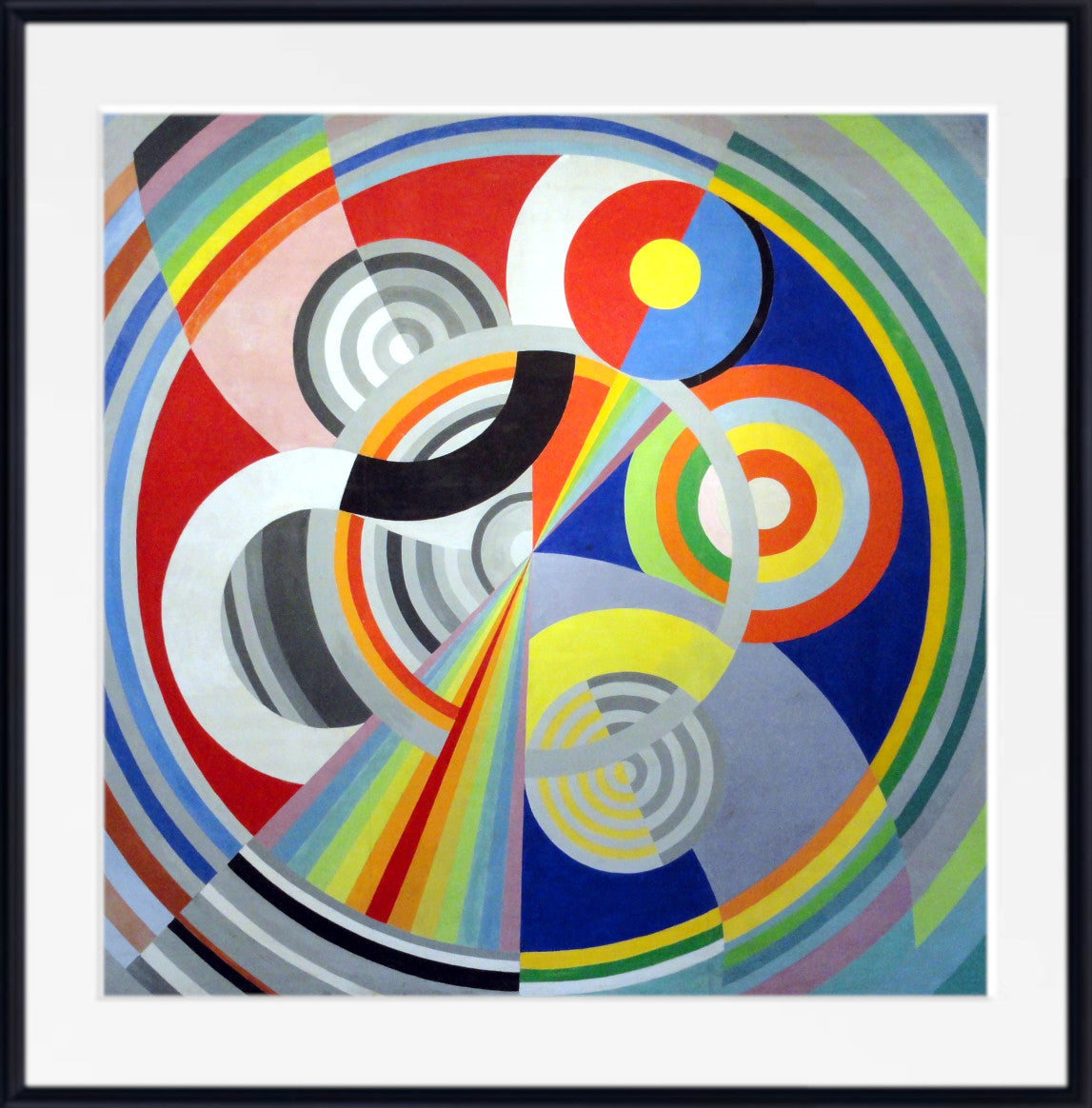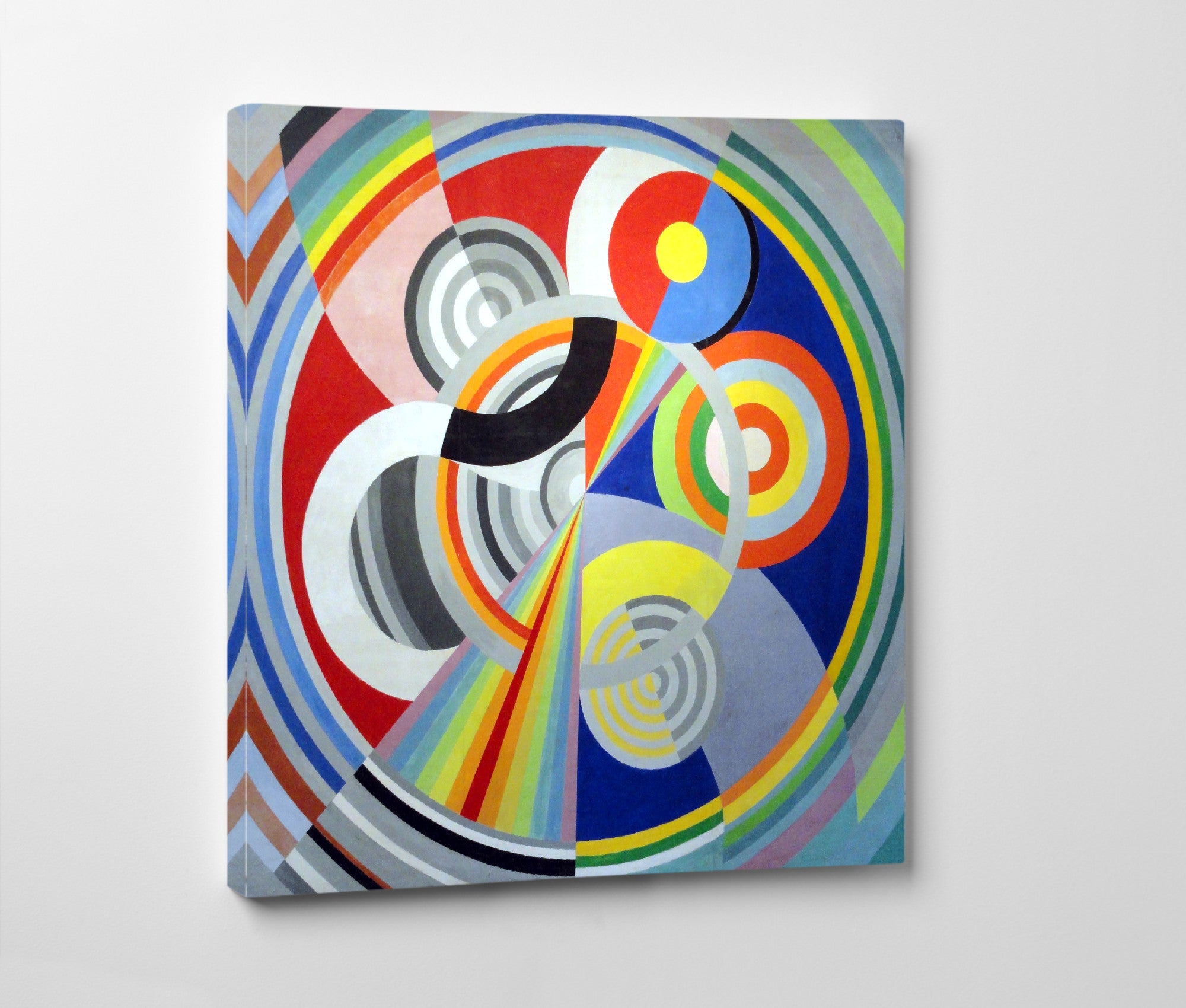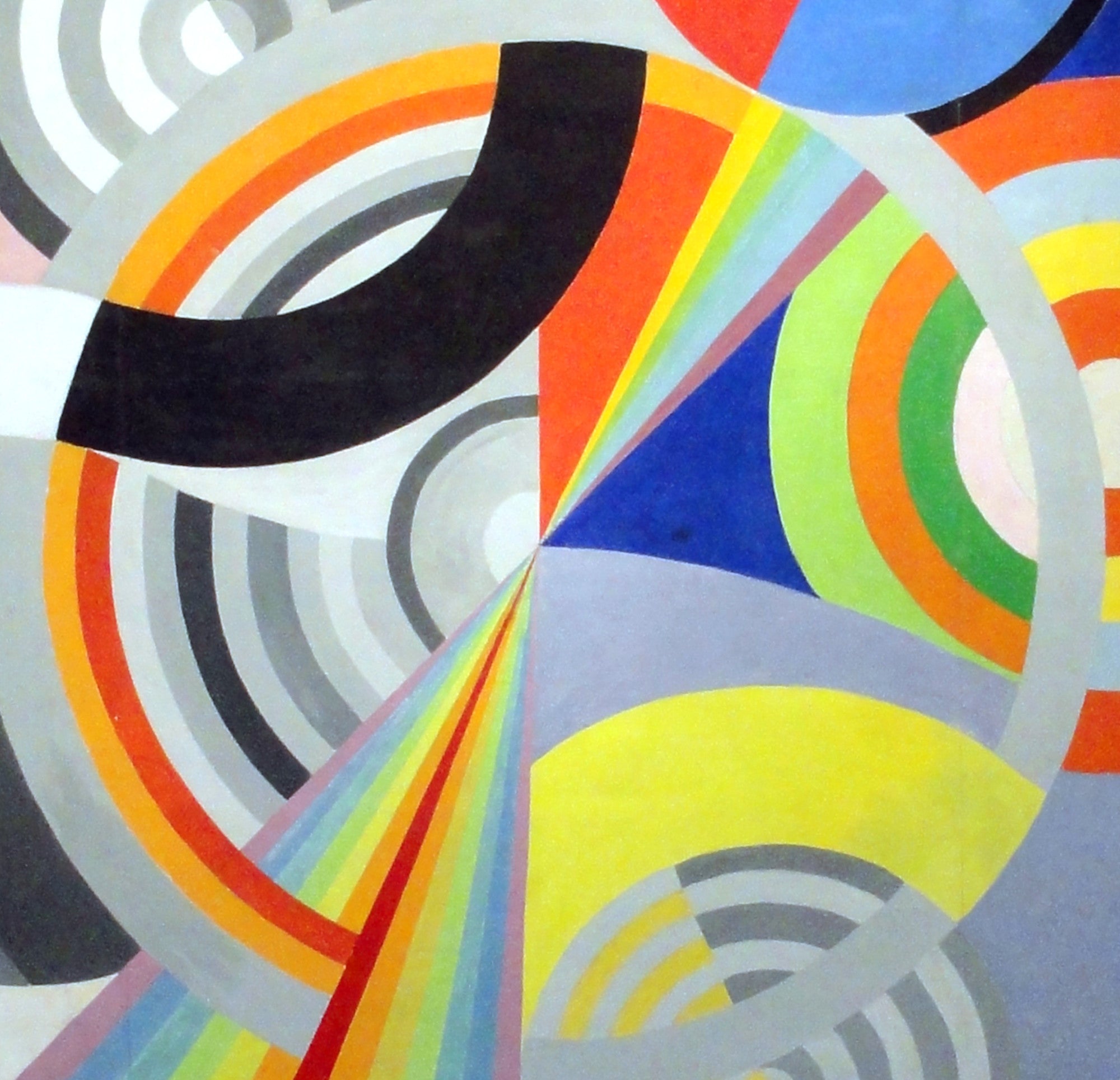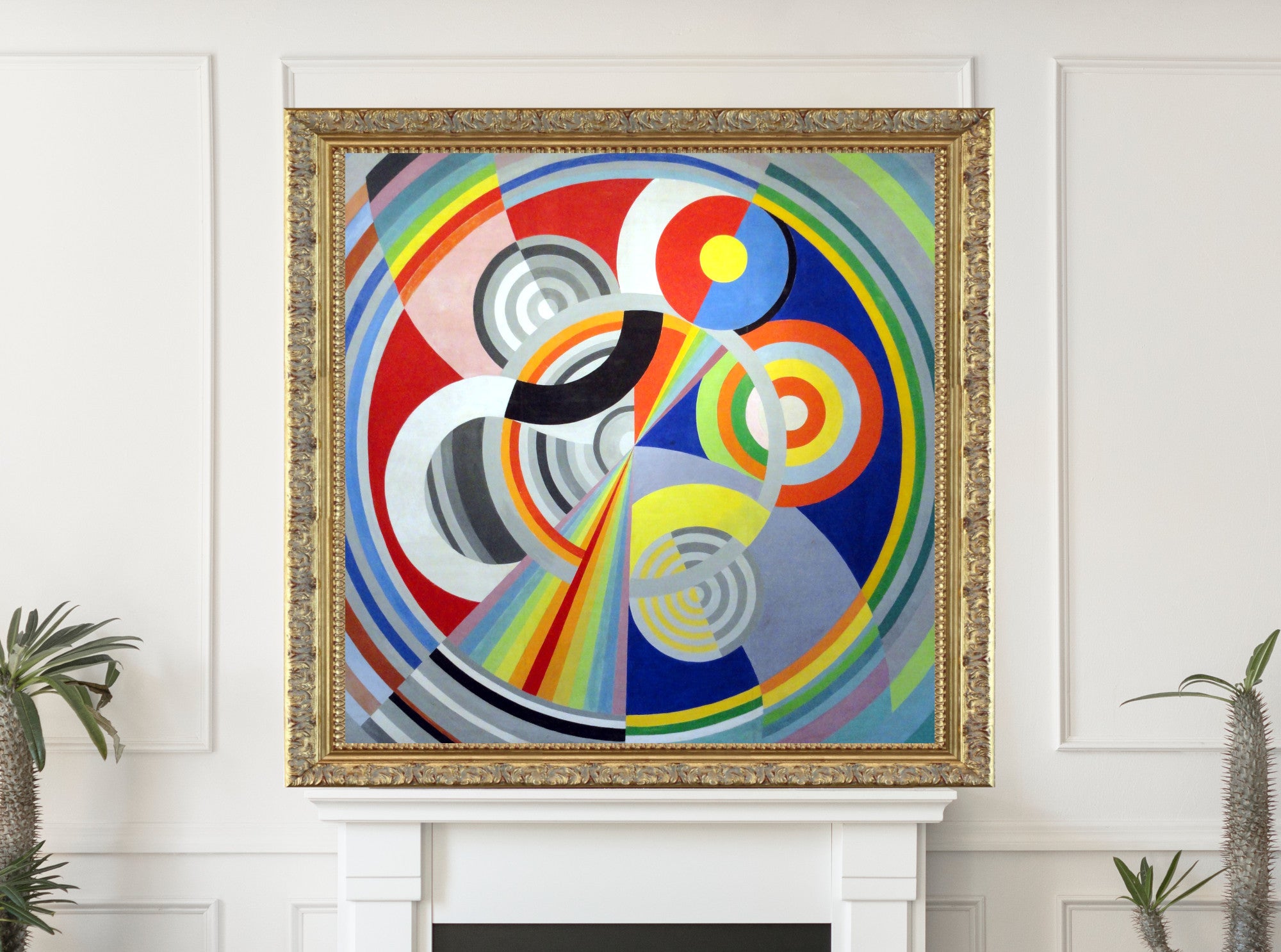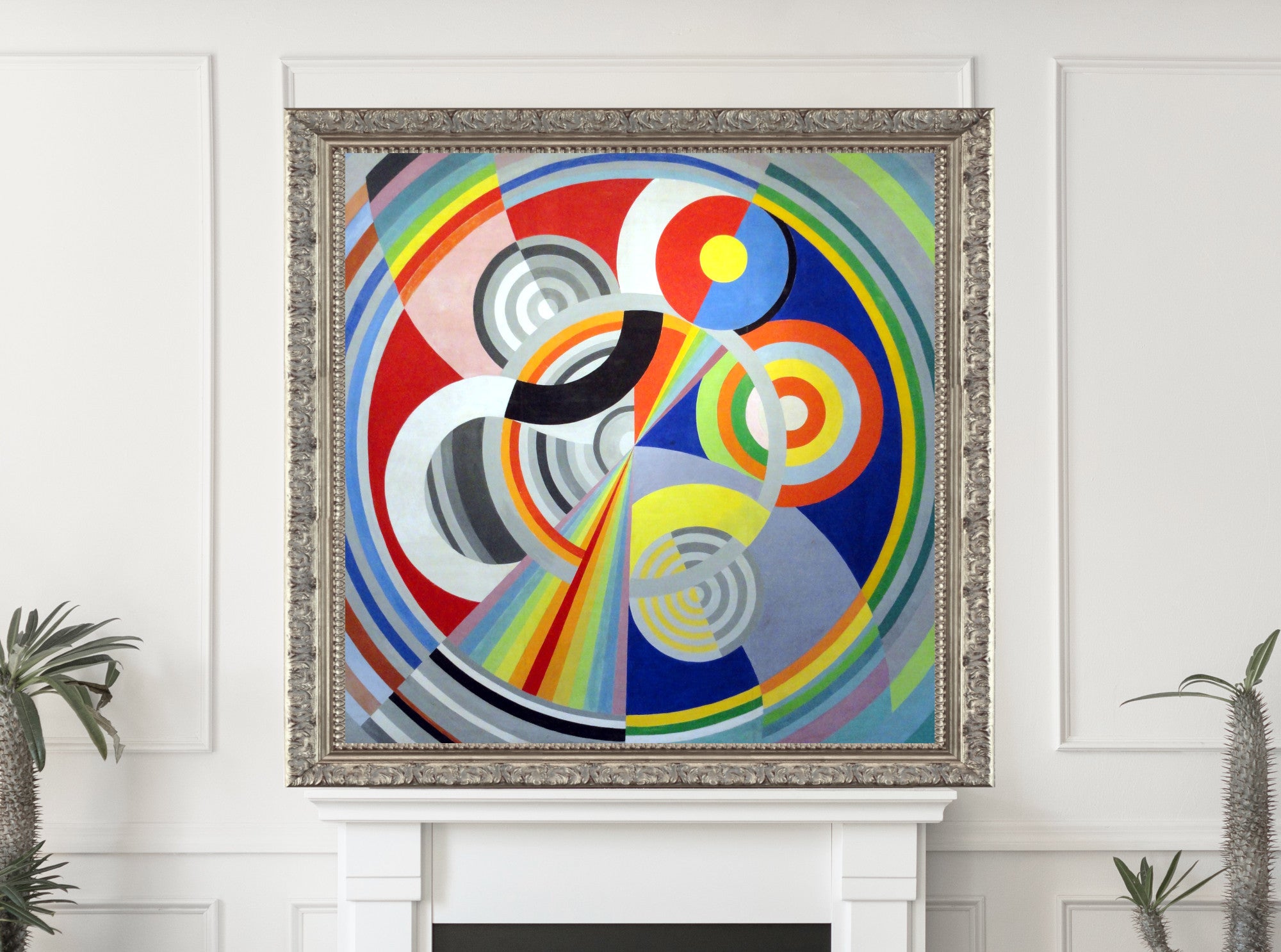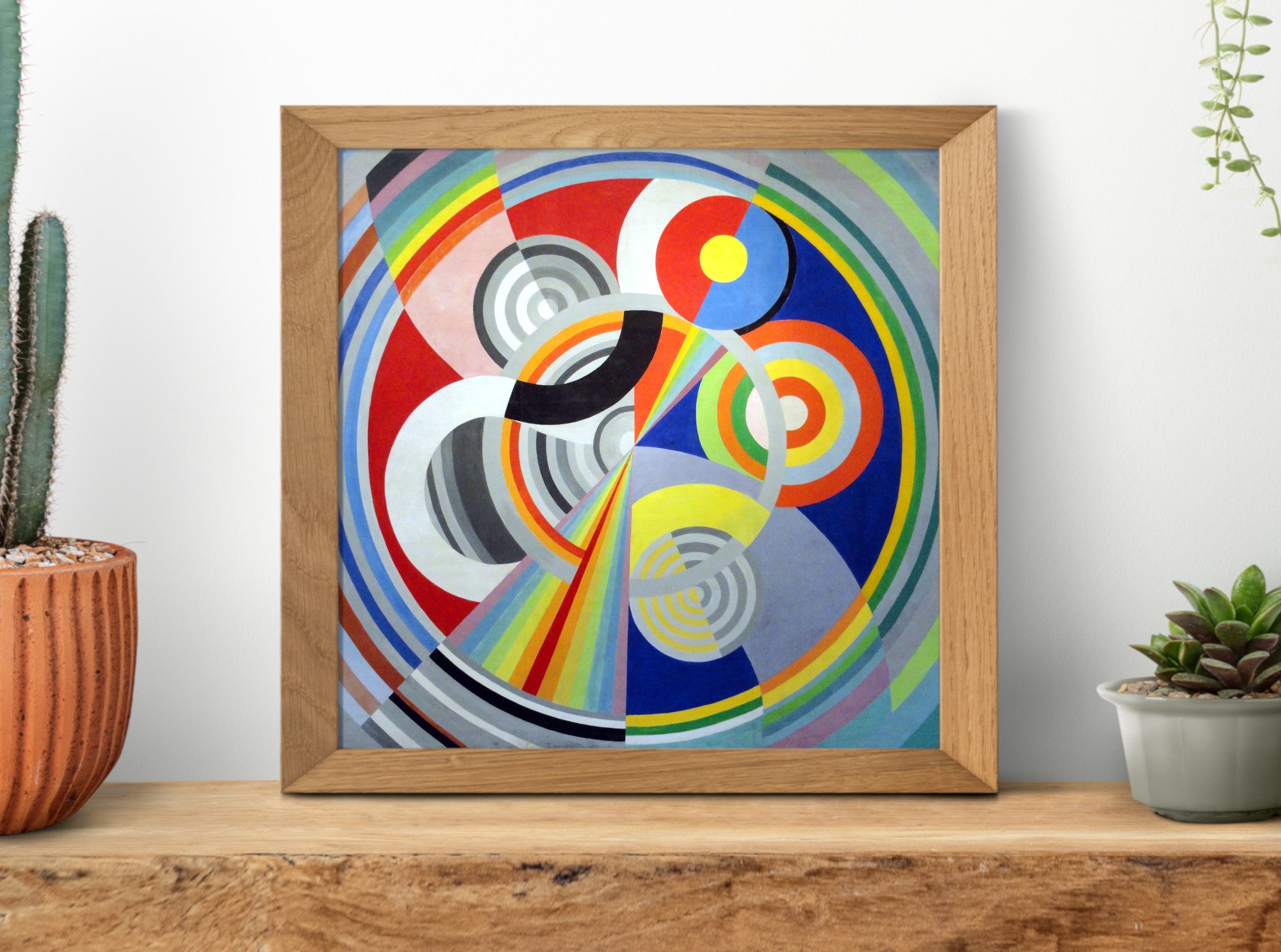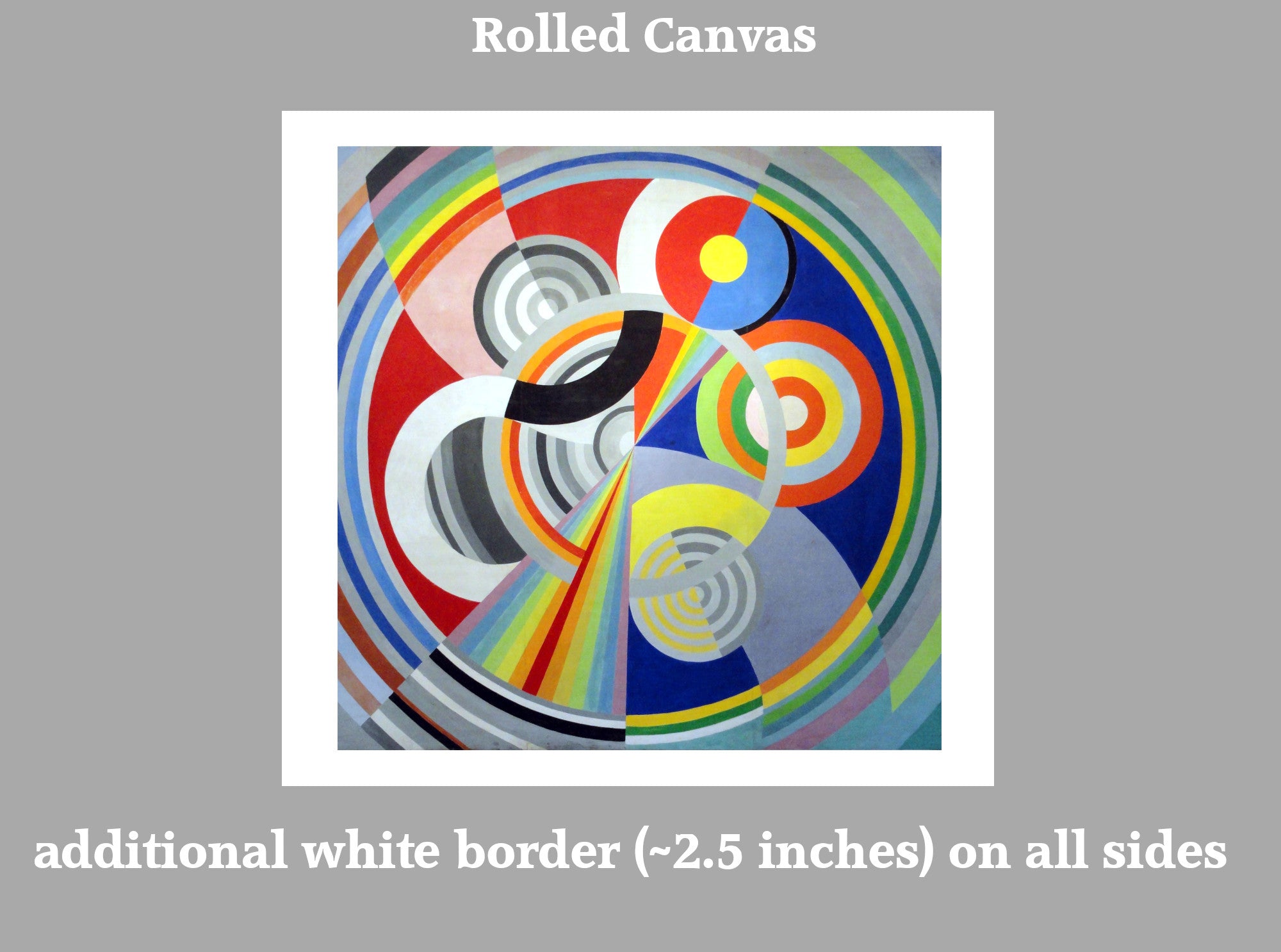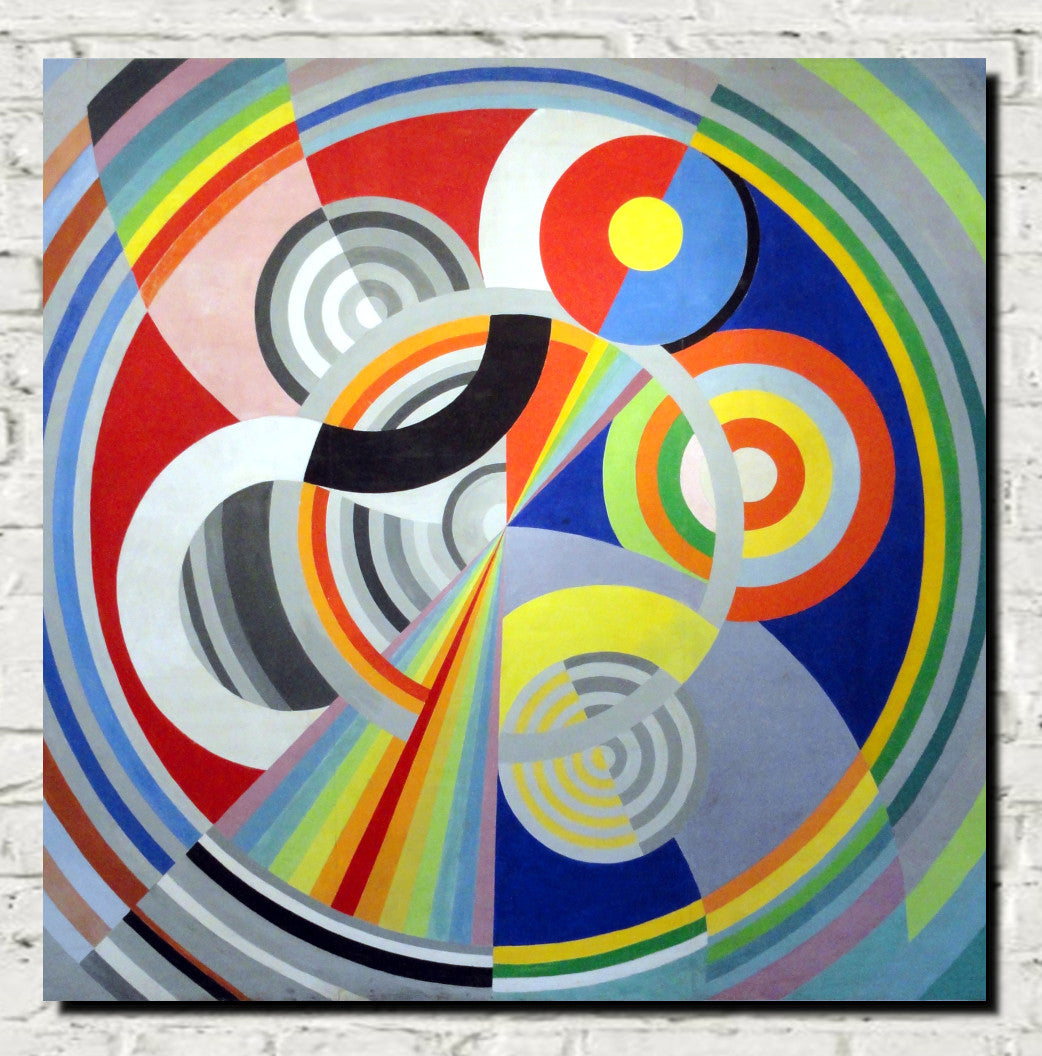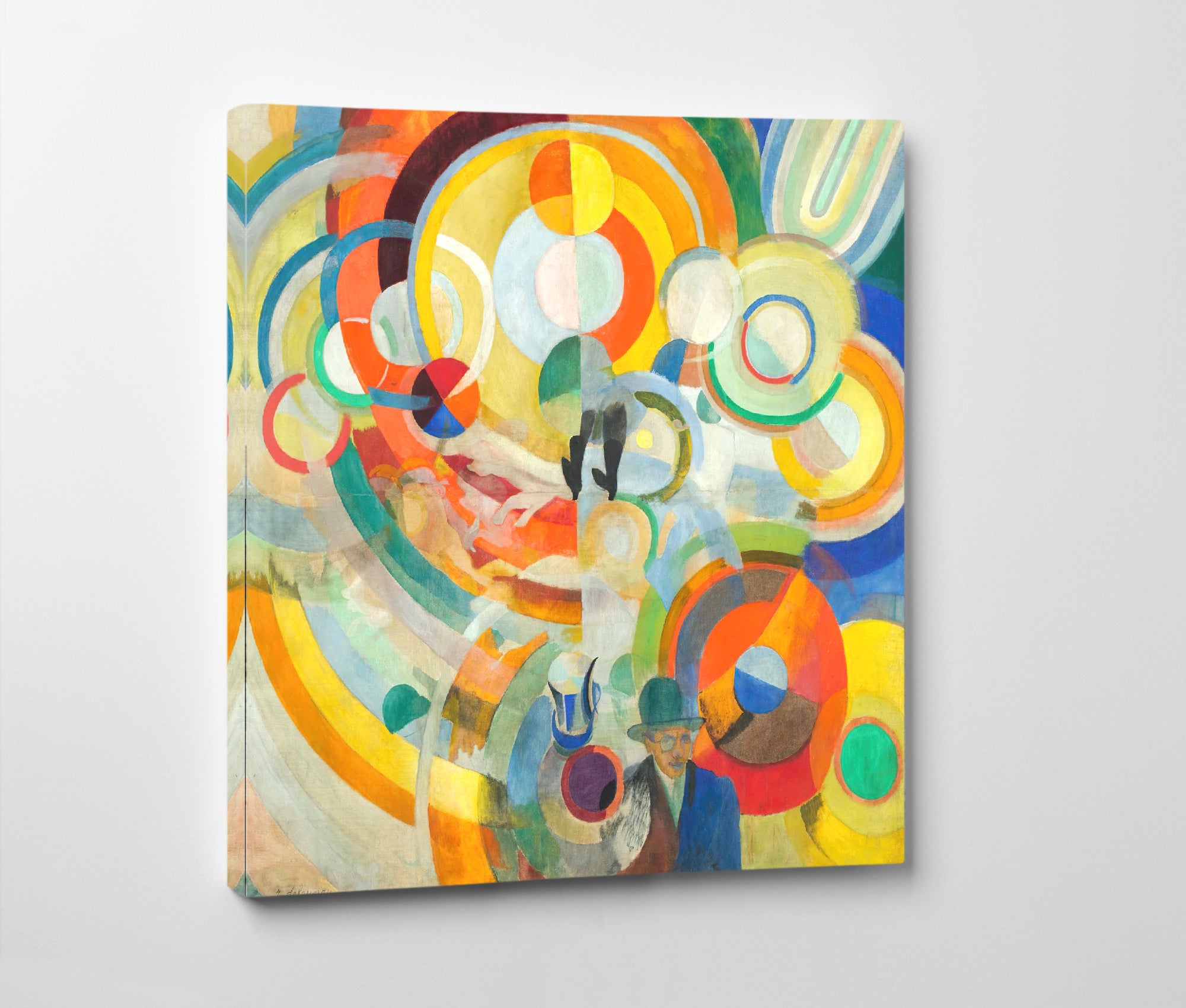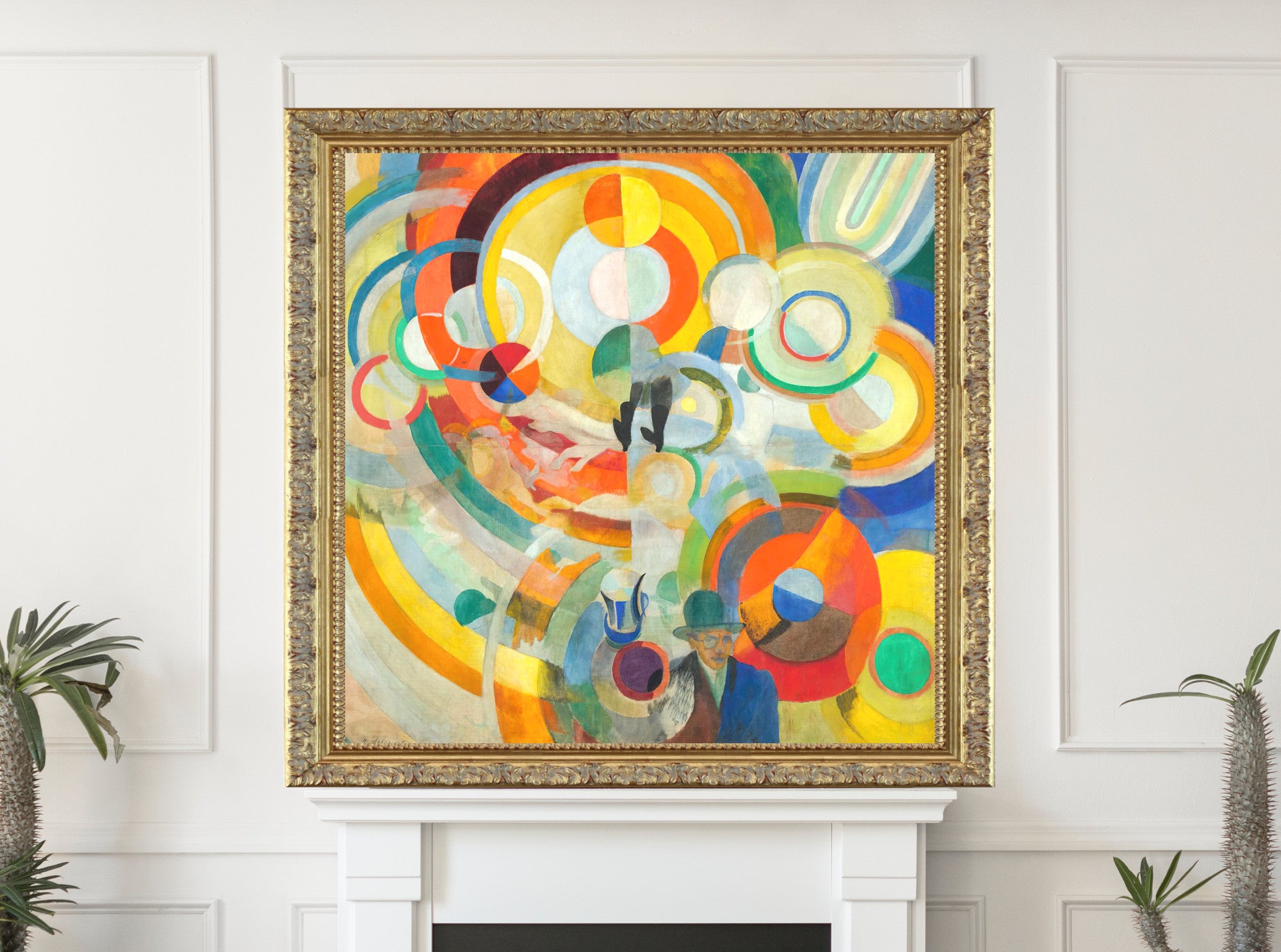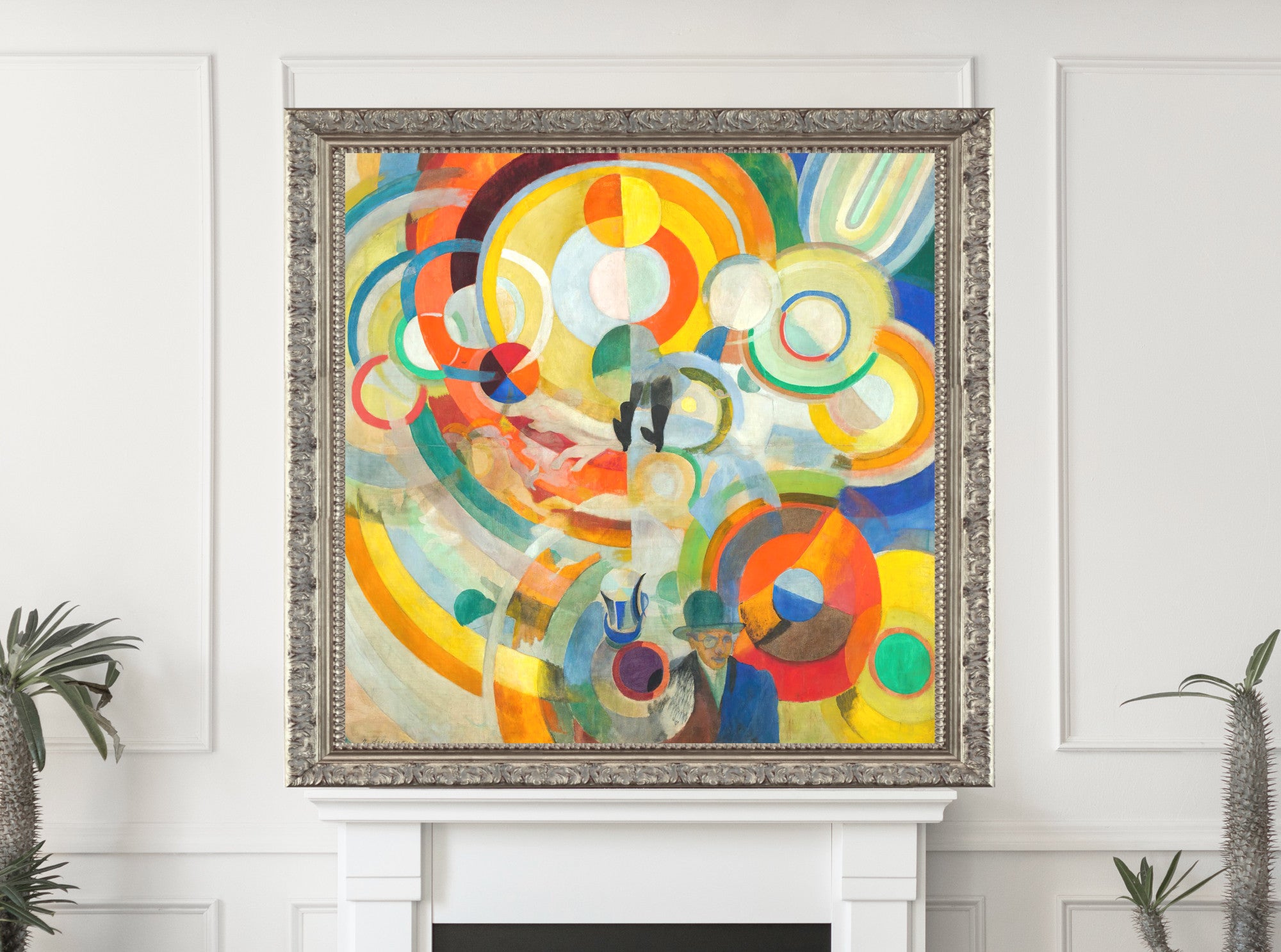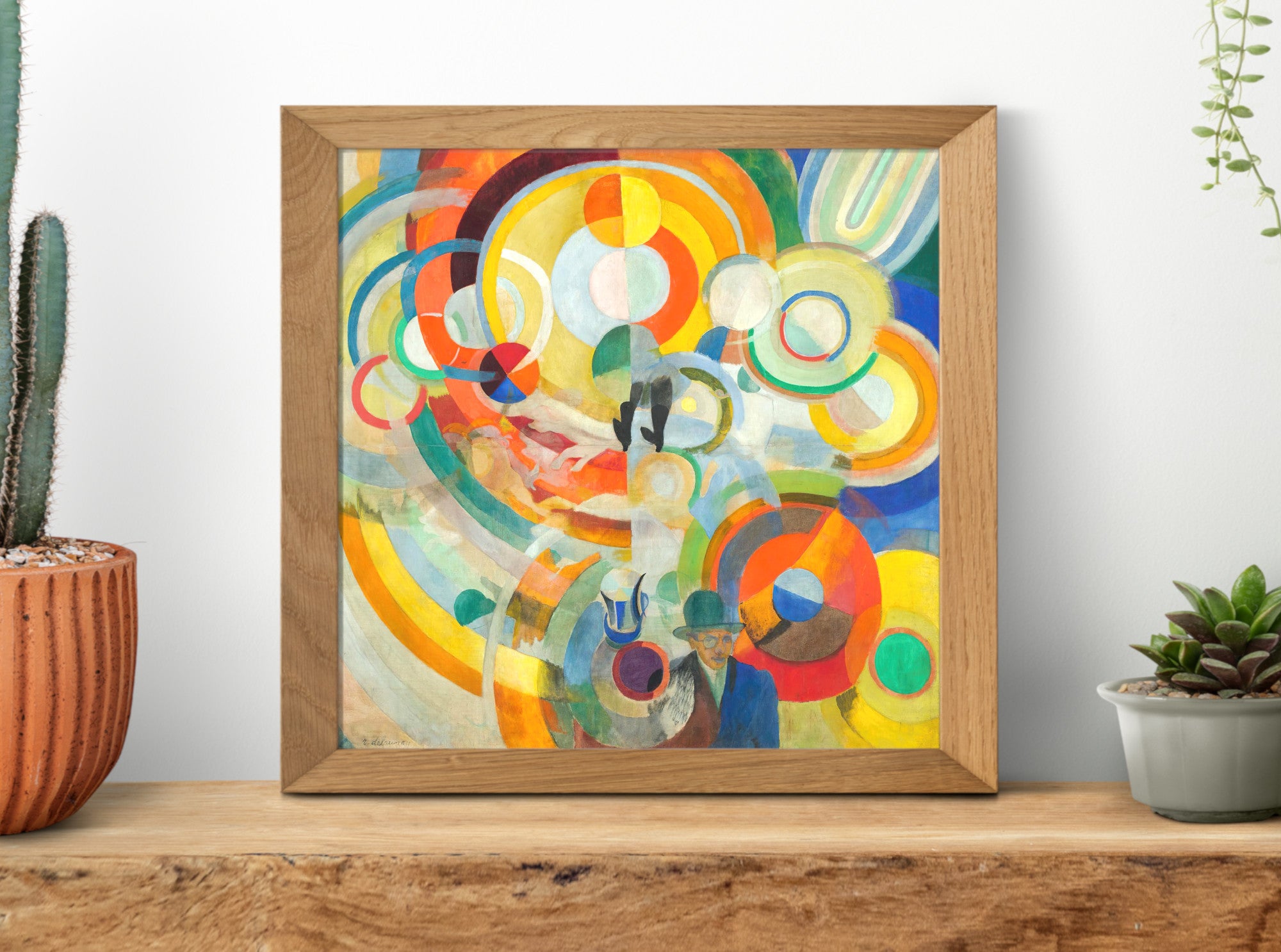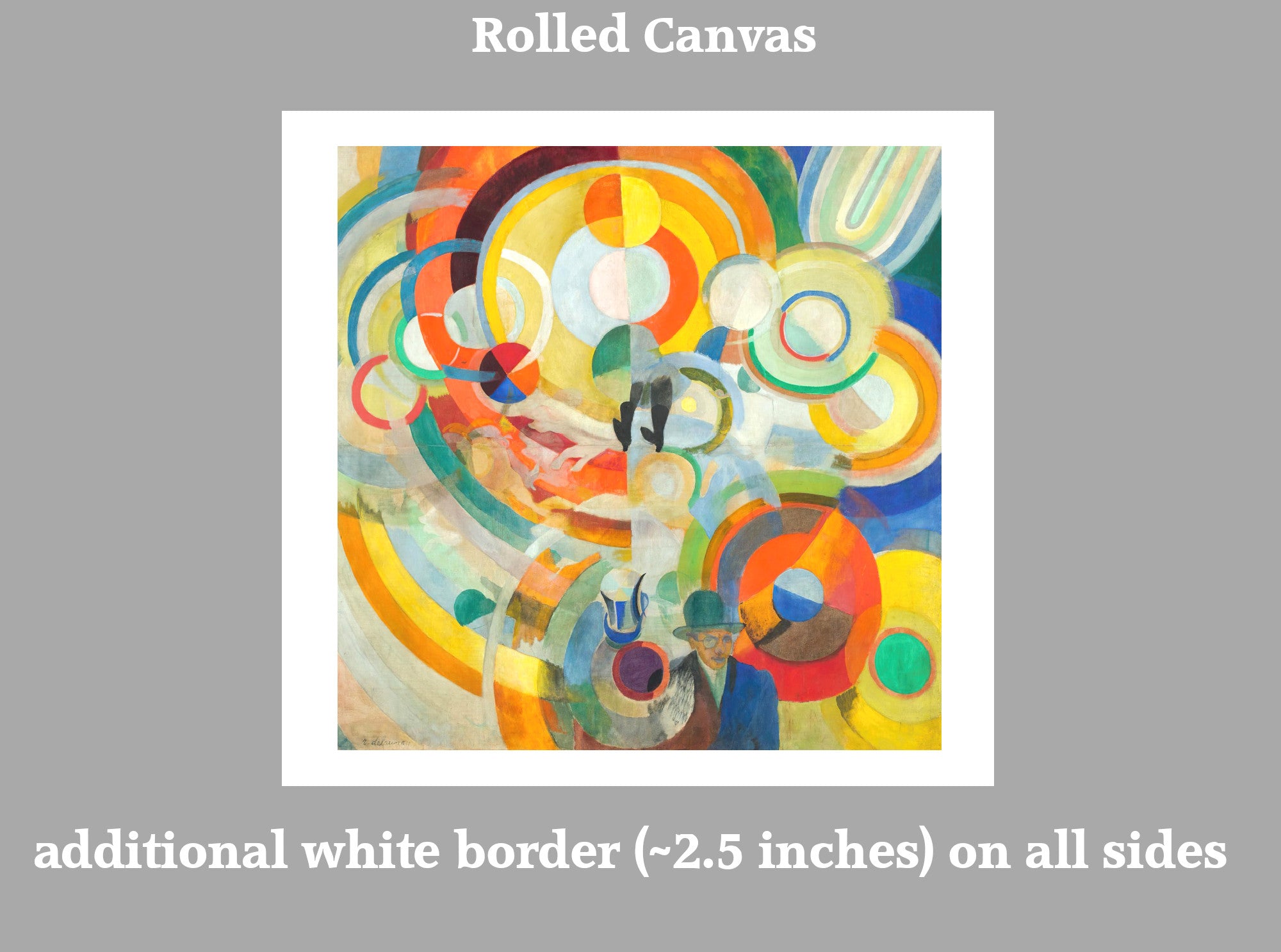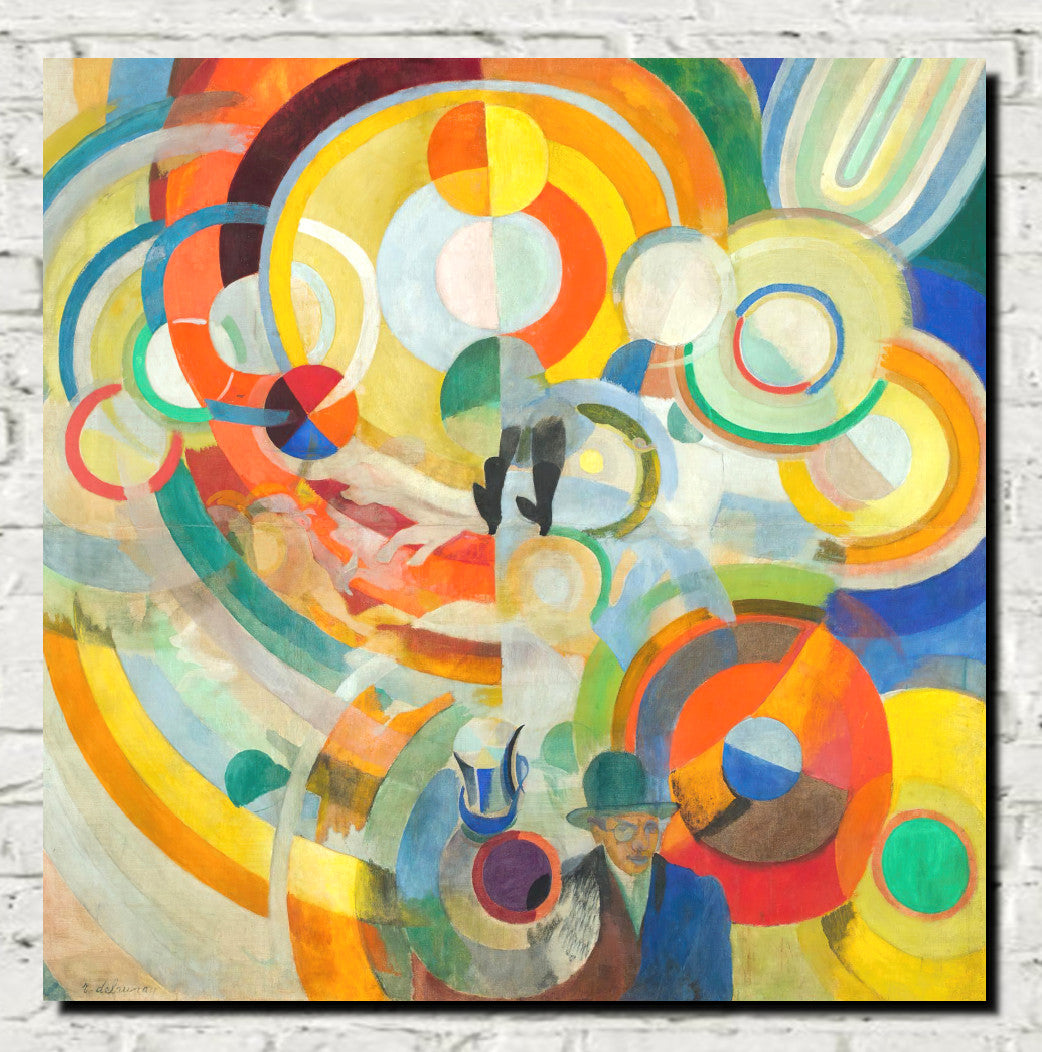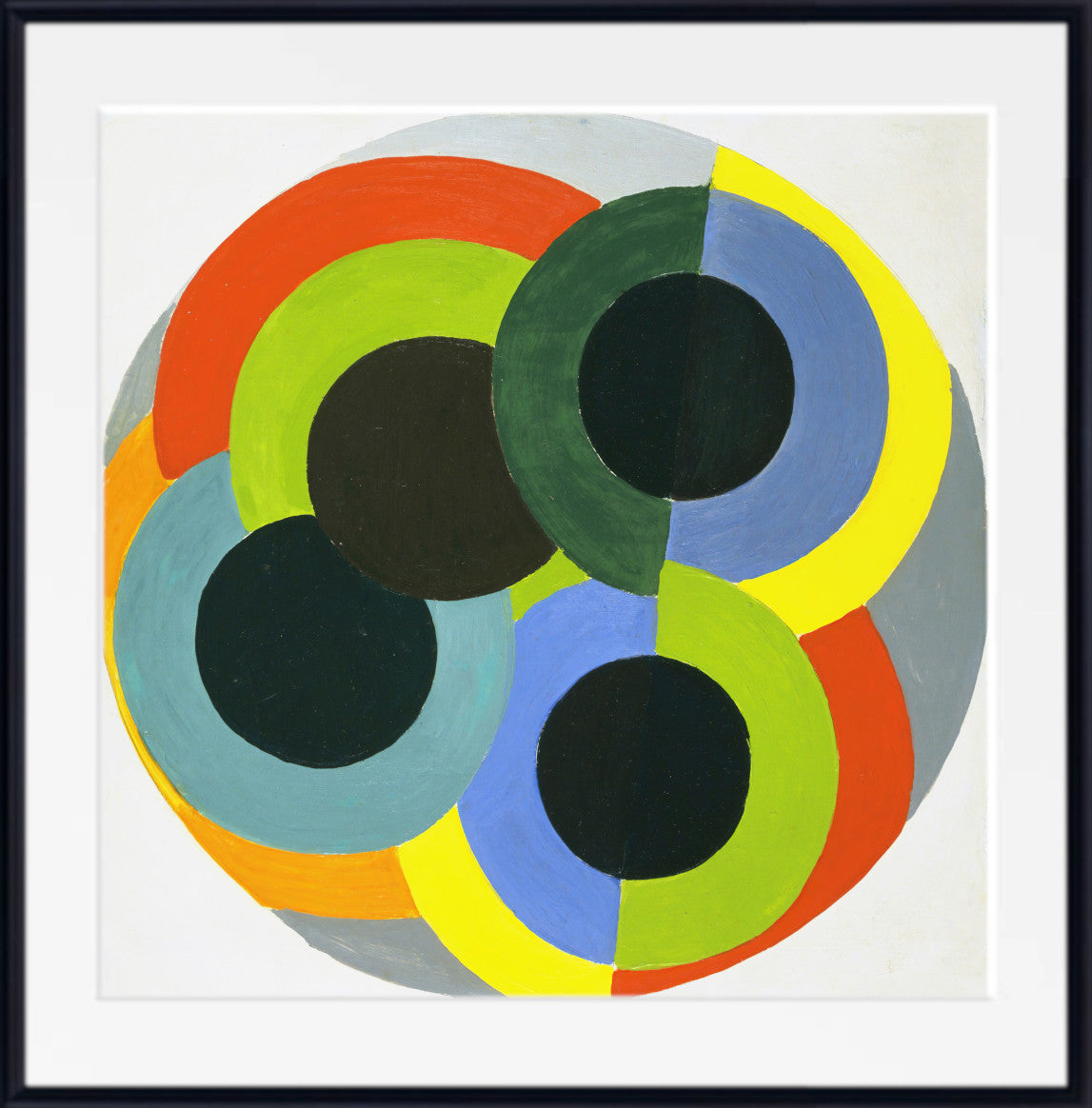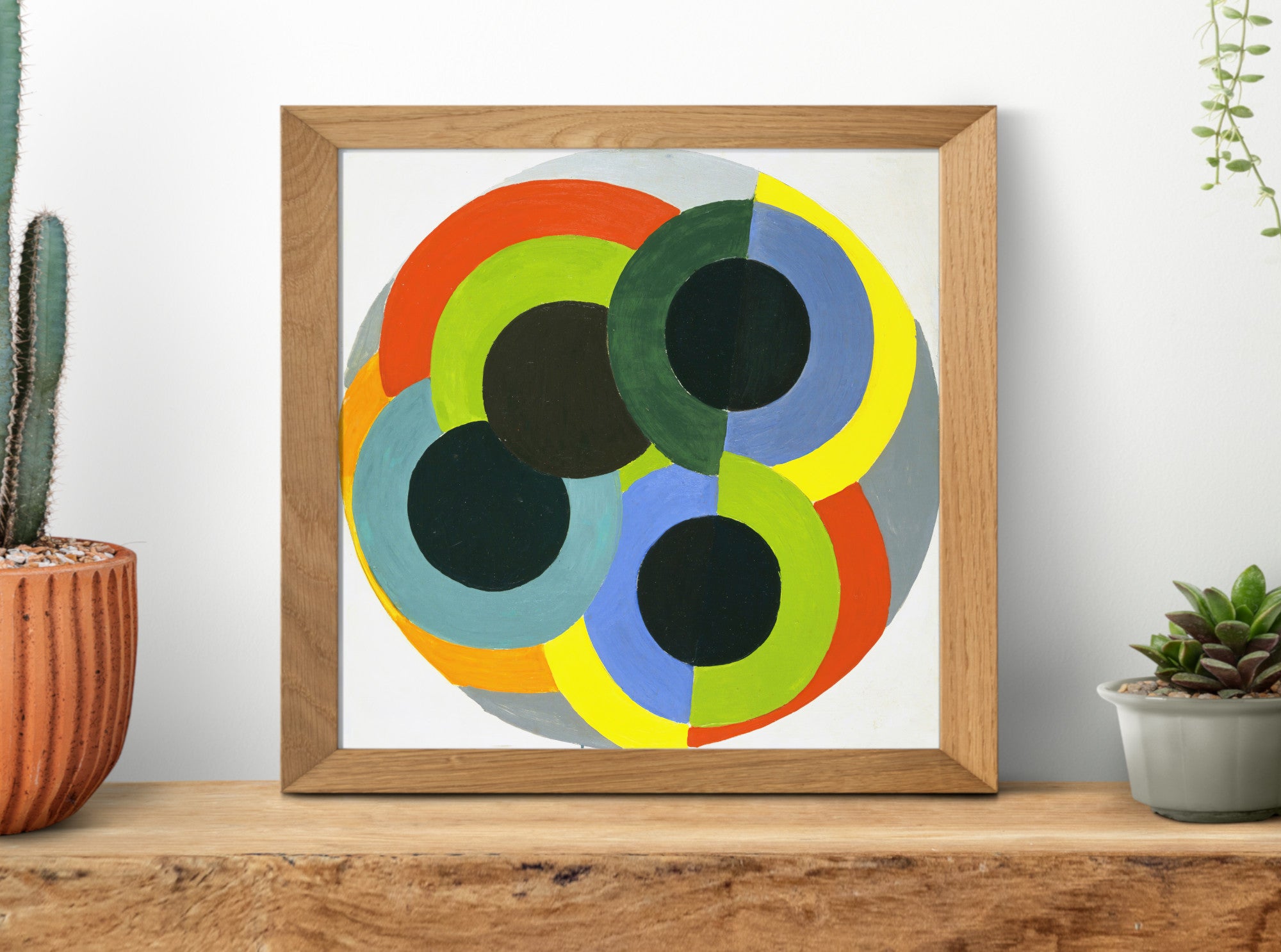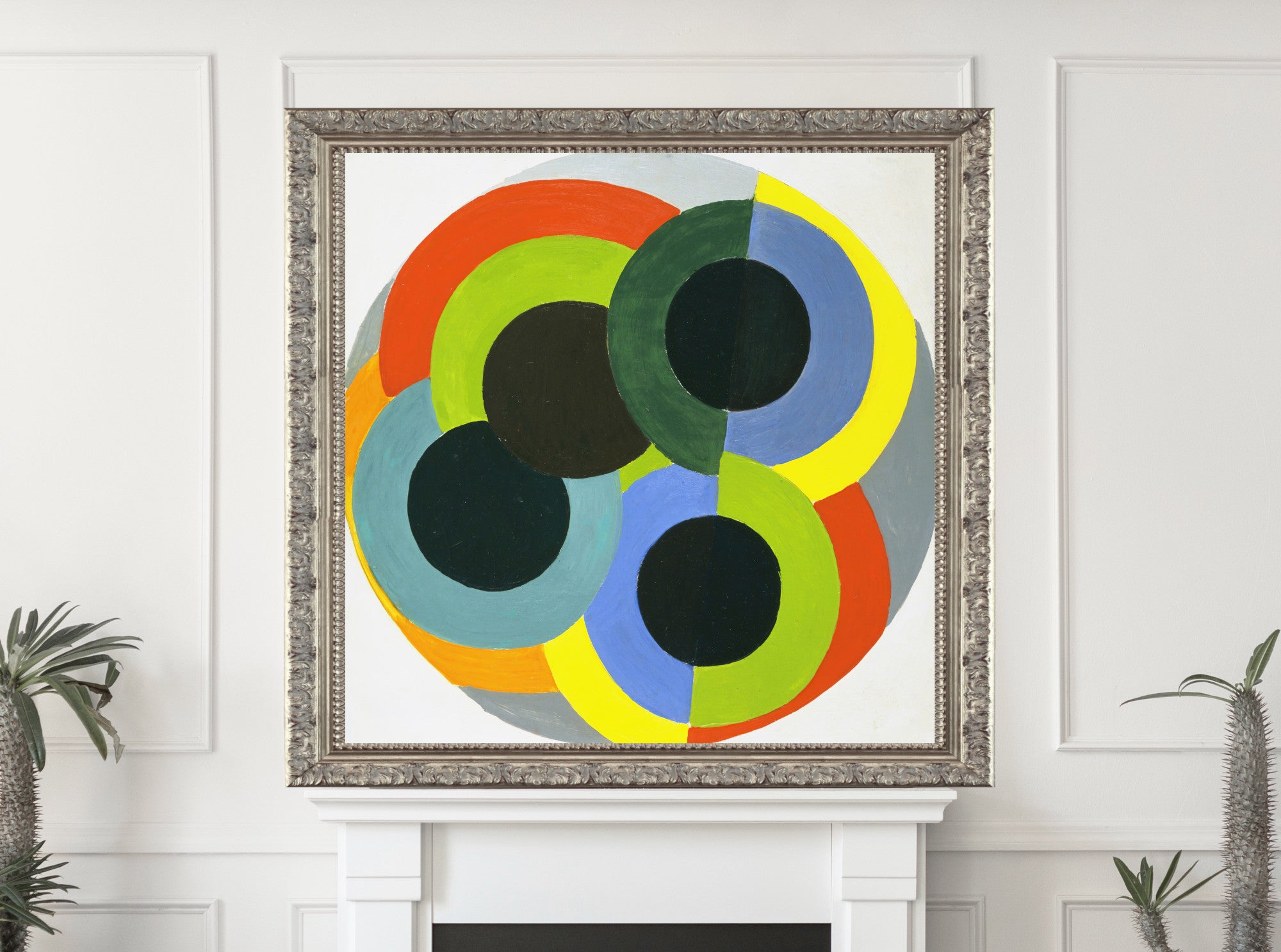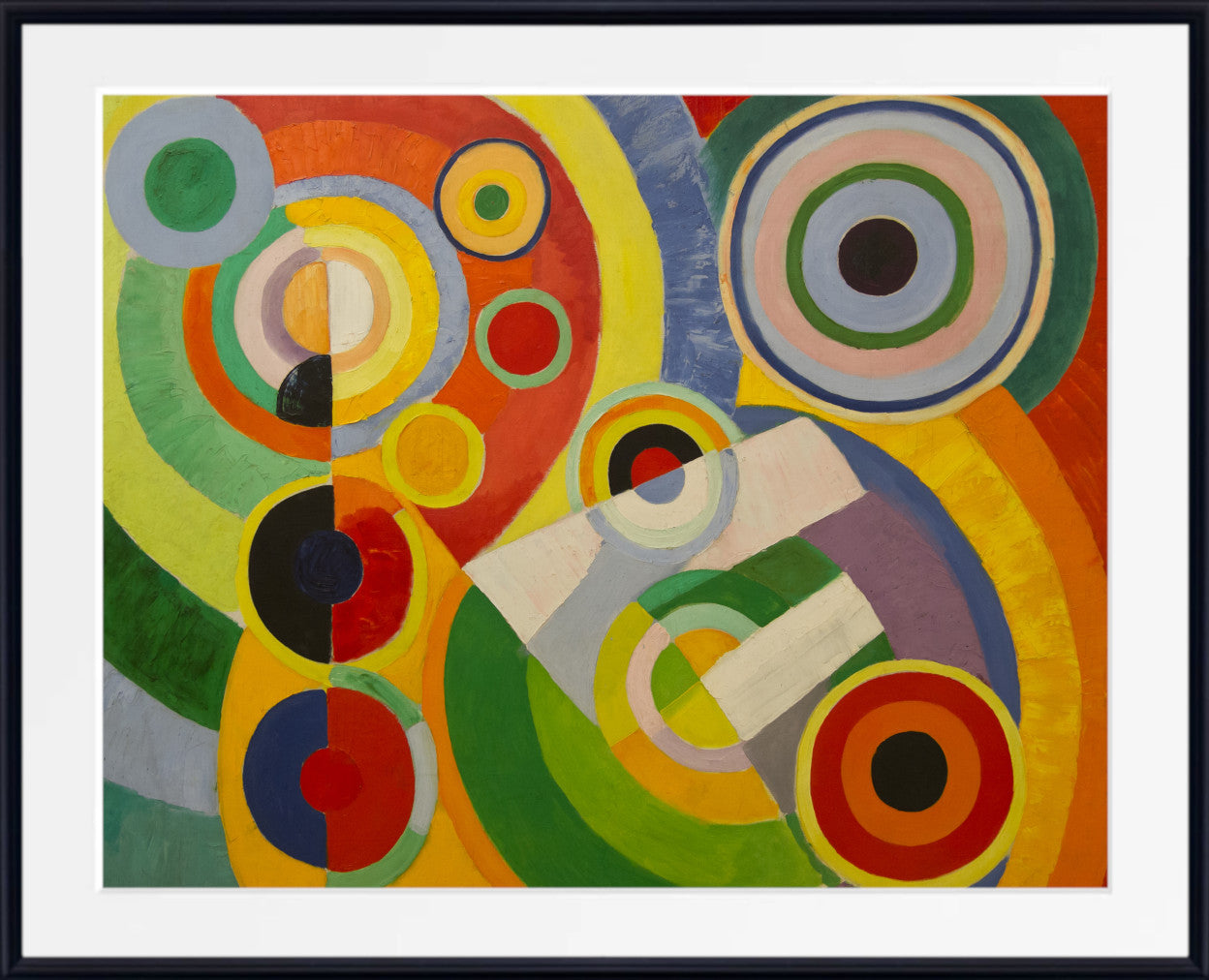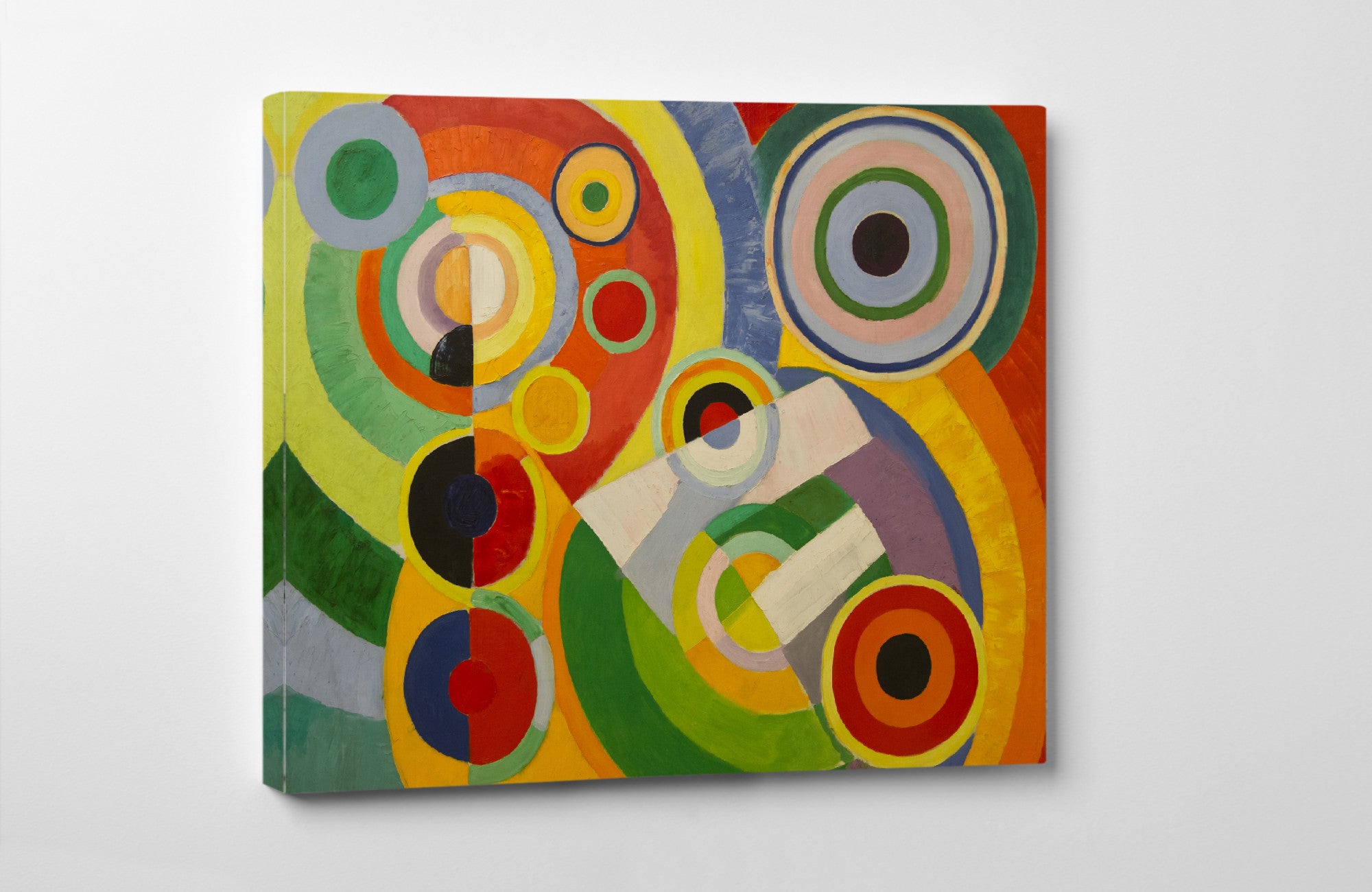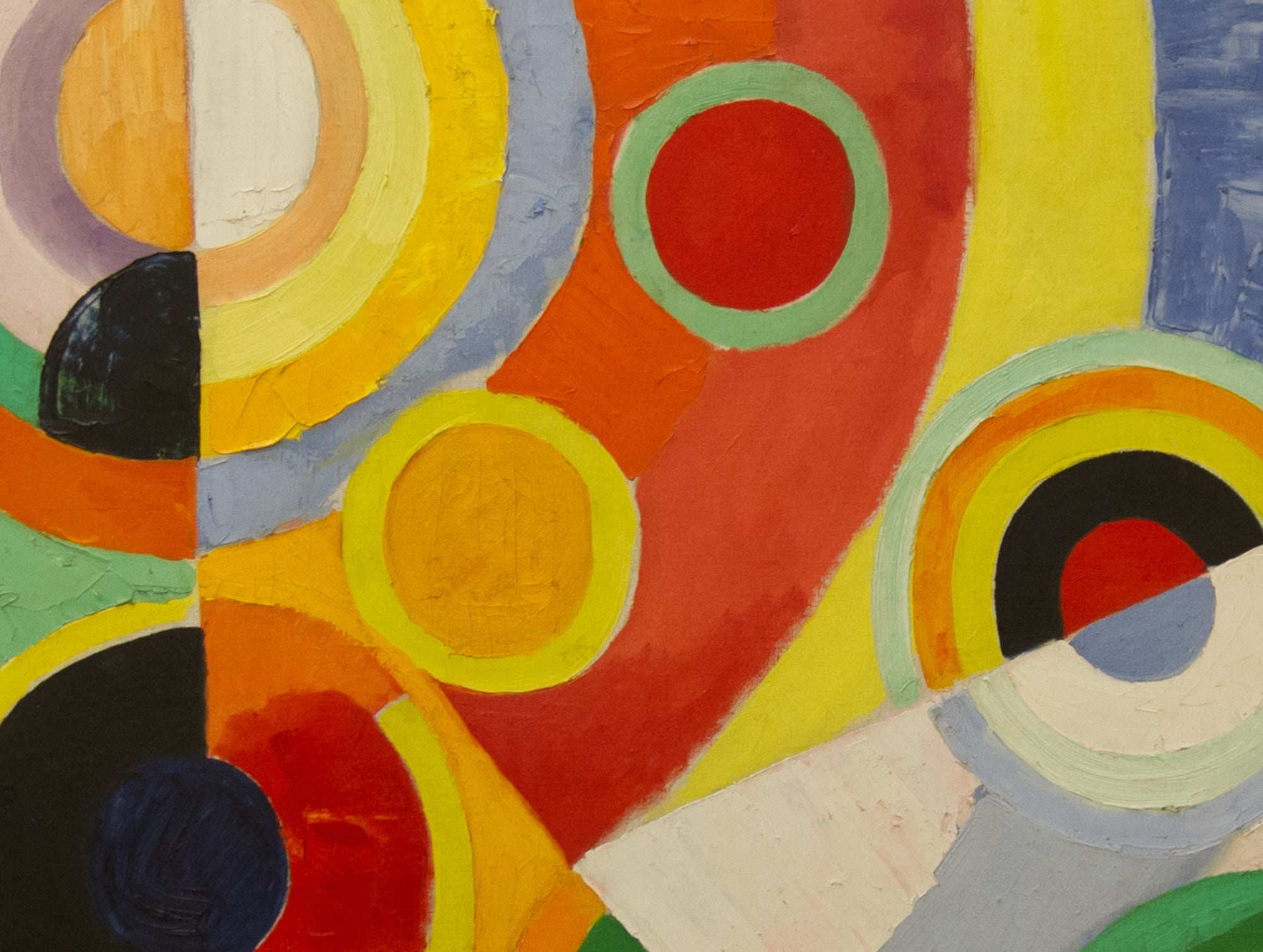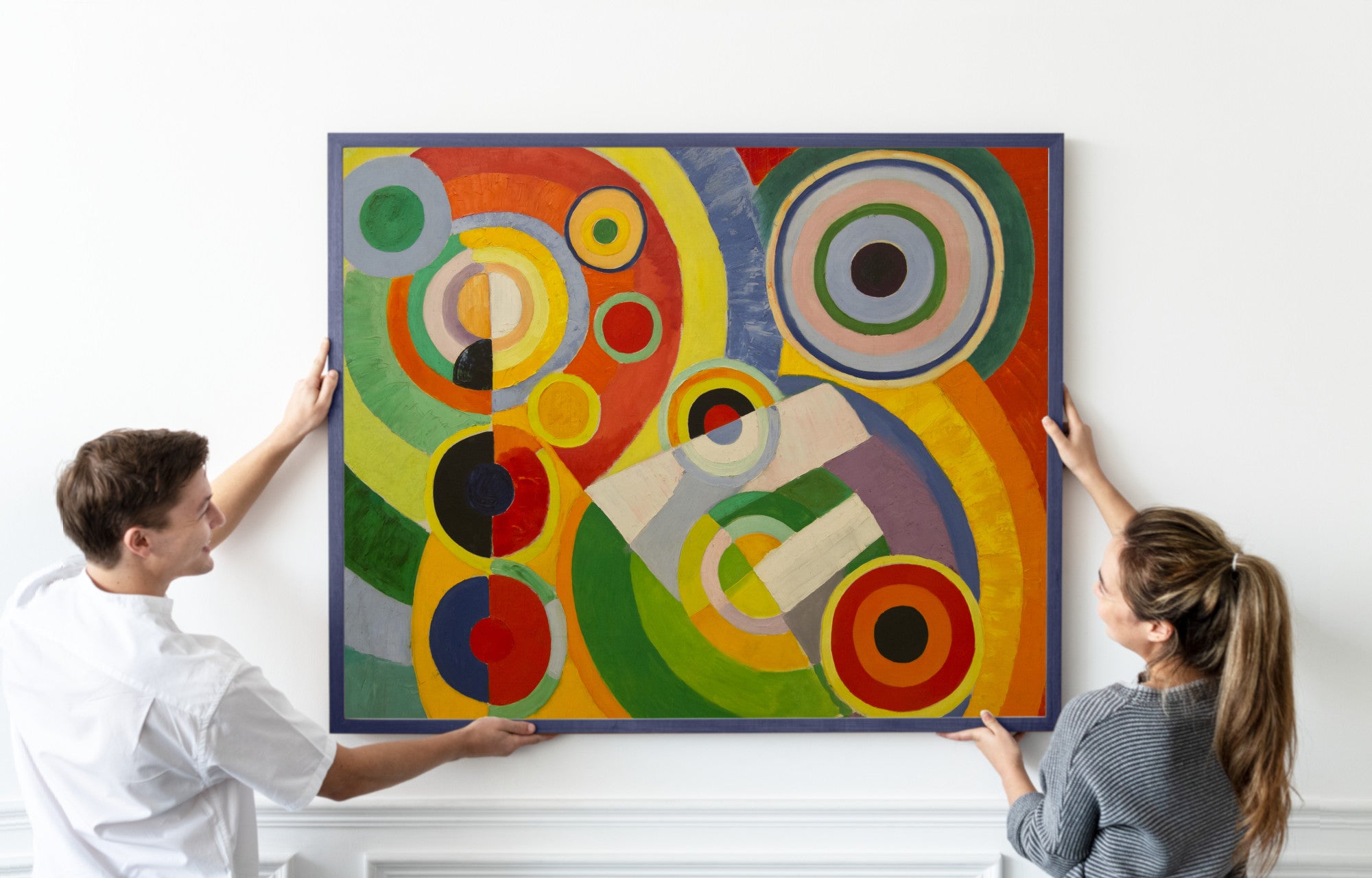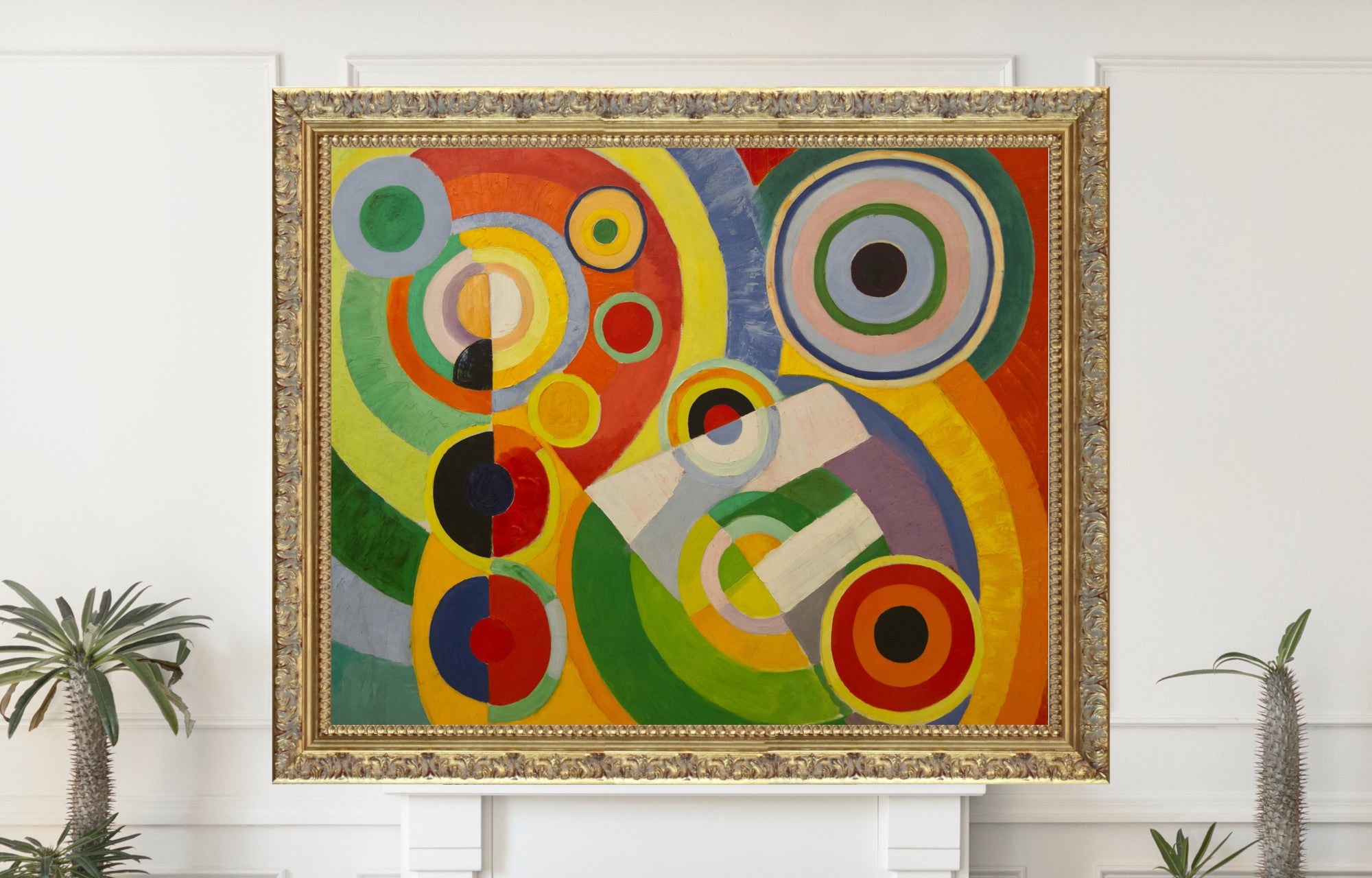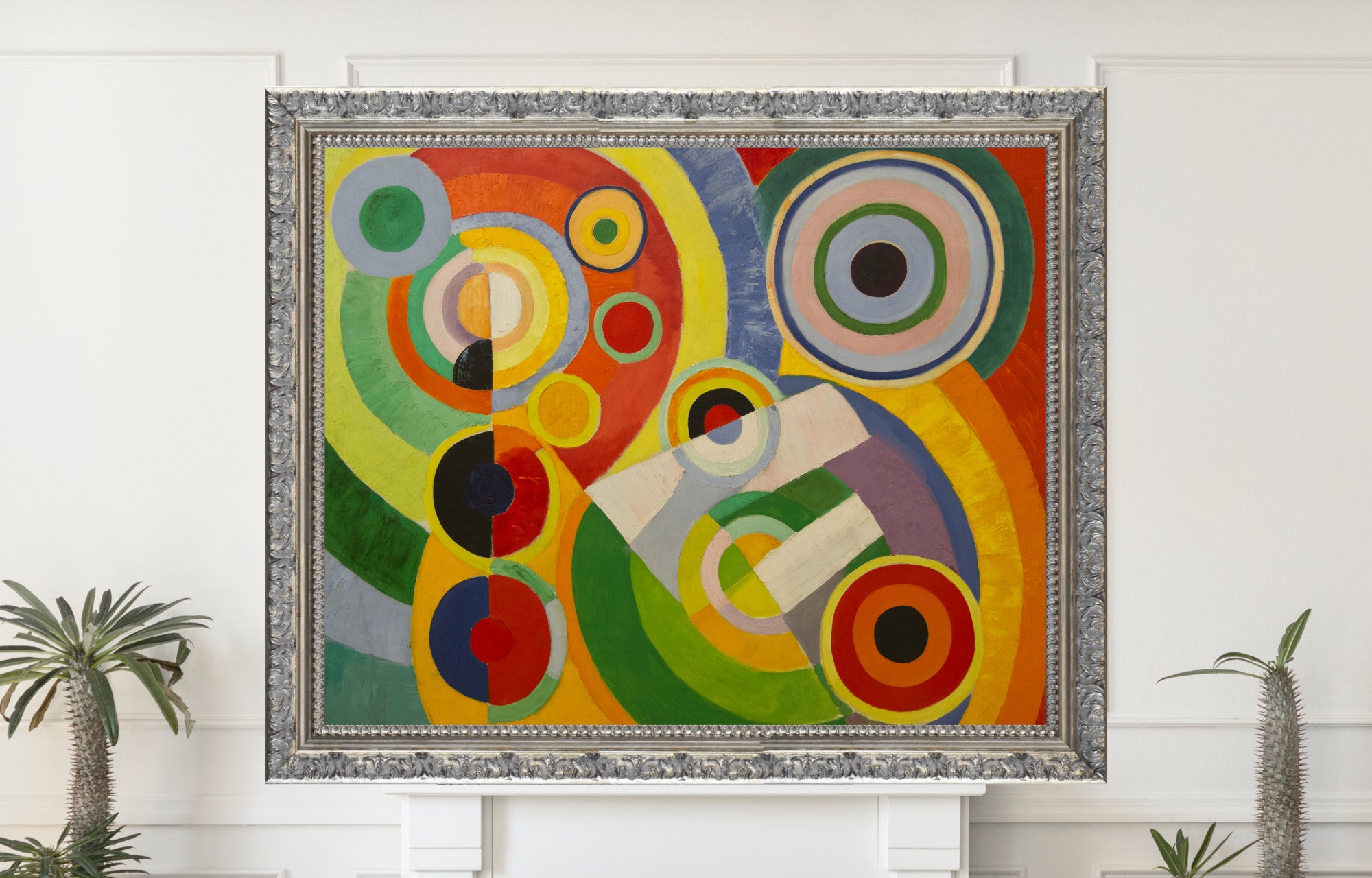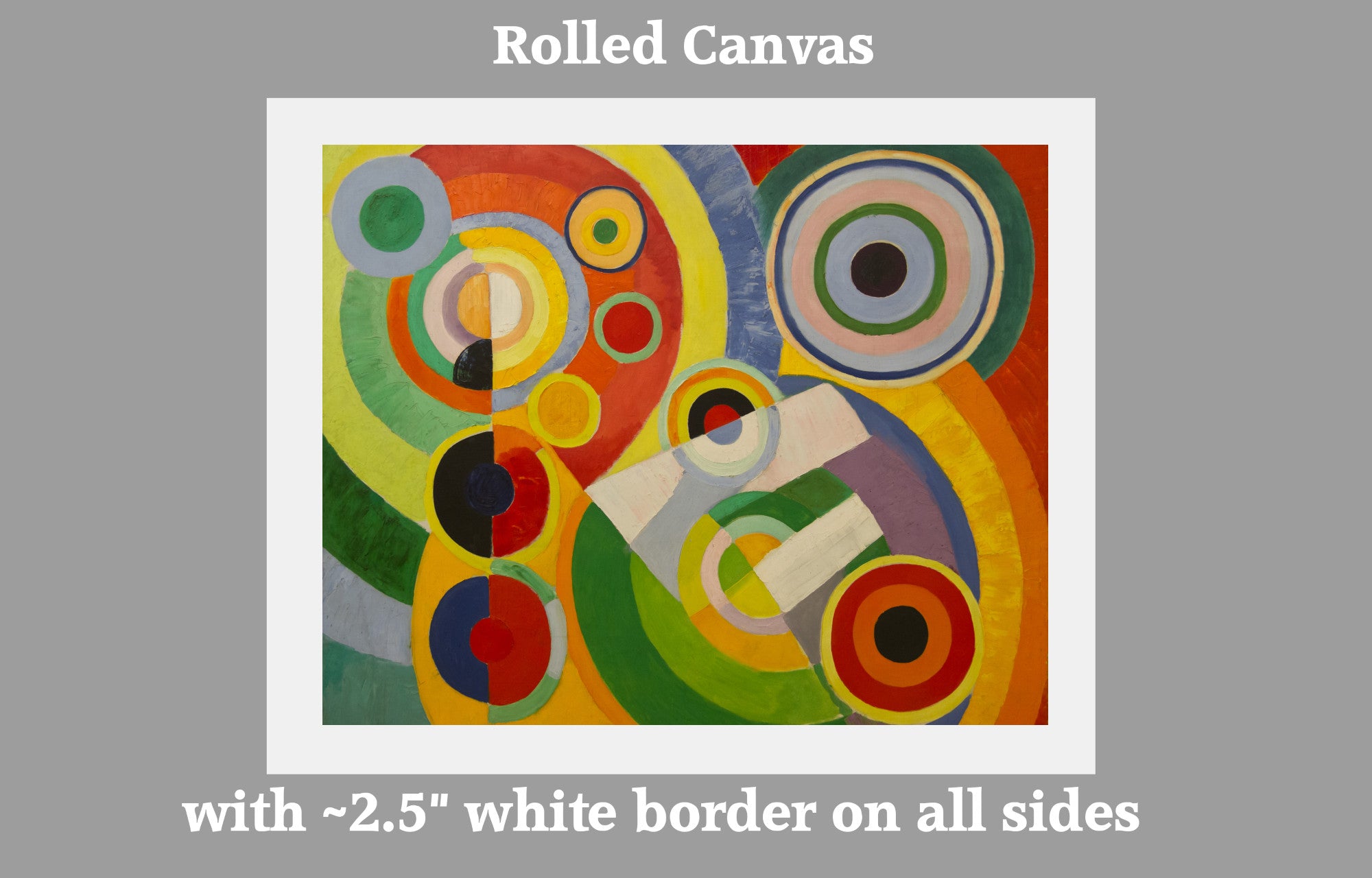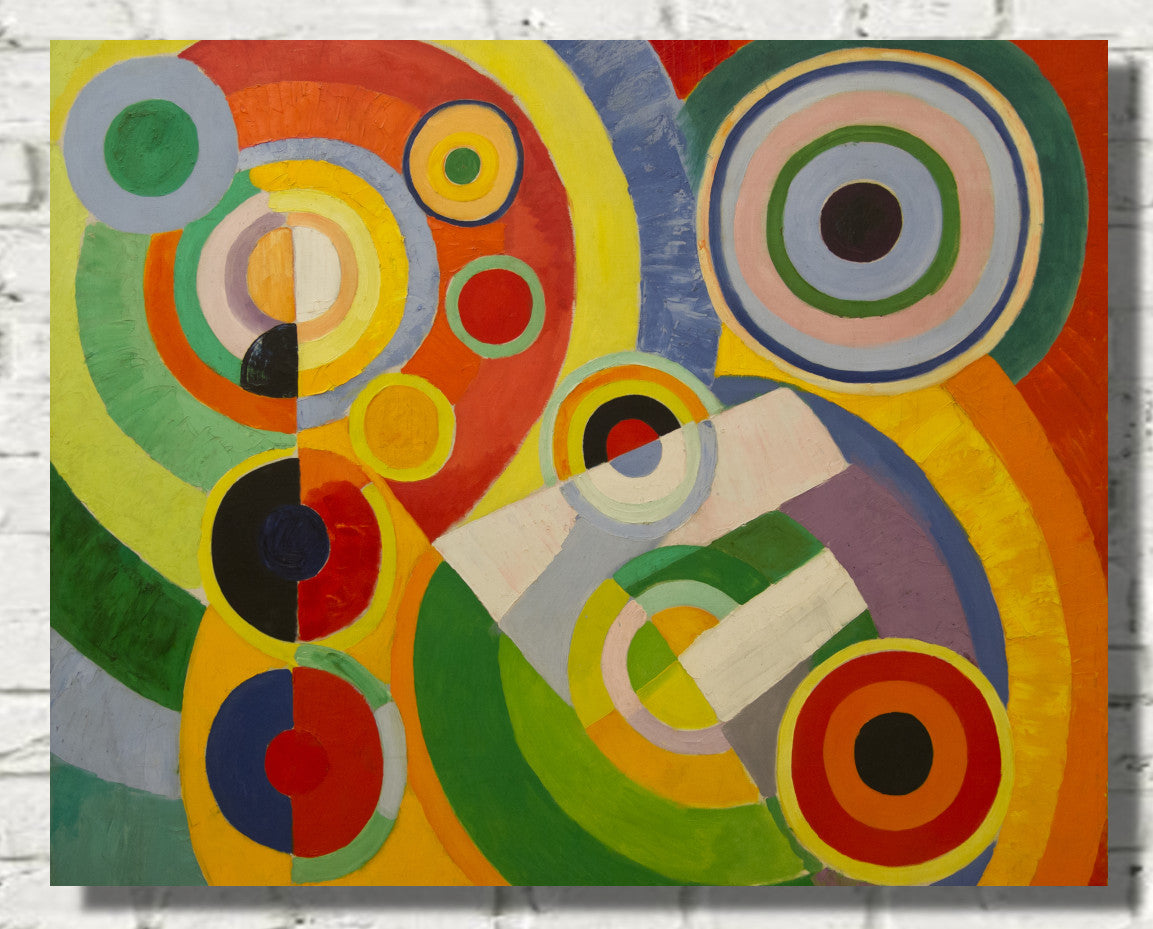Rythme, Joie de vivre, Robert Delaunay (1930)
Robert Delaunay's colorful and formally experimental paintings were a unique fusion of early-20th-century European artistic trends. His most famous works centered on the intellectually and visually stimulating world of Belle Époque Paris in which he and his wife, Sonia Delaunay (Terk), founded the Orphism movement. This style was distinguished by faceted compositions, vibrant color, and contemporary subject matter that together conveyed delight in the modern life and its technological innovations.
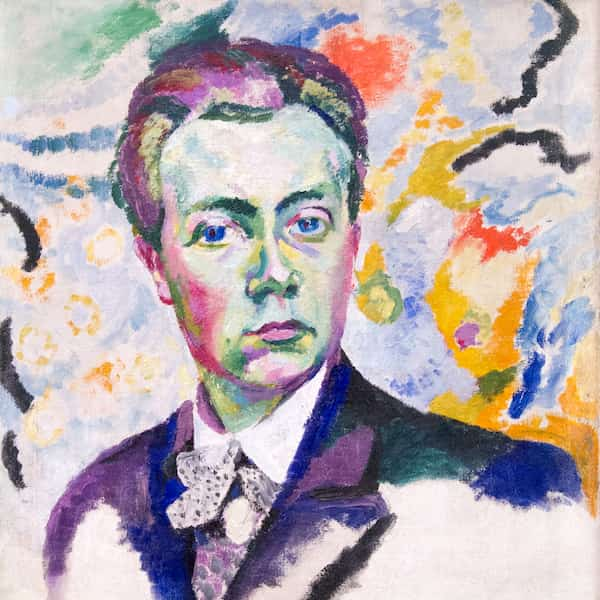
Robert Delaunay, Autoportrait (1906)
Robert Delaunay was born in 1885 to eccentric upper class parents, George Delaunay and Berthe Félicie de Rose. His mother, an irresponsible character fond of society life, called herself 'Countess' though the authenticity of her claims to French aristocracy are in question. His early life in Paris was privileged yet strained - his parents divorced when Delaunay was just four years old and he barely saw his father after this. Taken in by his aunt and uncle, he was raised in a grand estate in La Ronchère near Bourges, by coincidence mirroring the childhood experience of his future wife, Sonia, also brought up by a wealthy uncle and aunt in St Petersburg.
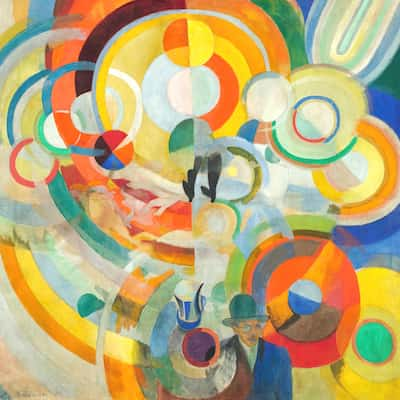
Manège de cochons (1922)
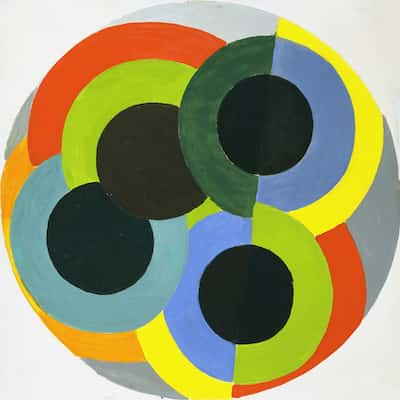
Disks, Robert Delaunay (1933)
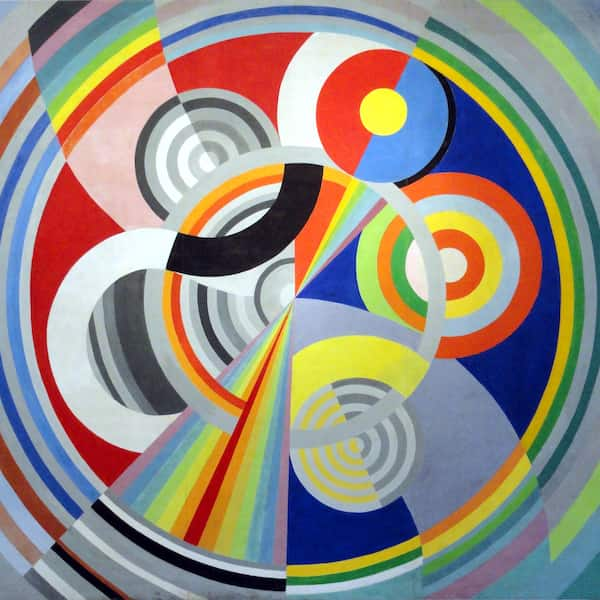
Rythme n°1, Decoration for the Salon des Tuileries, Robert Delaunay (1938)
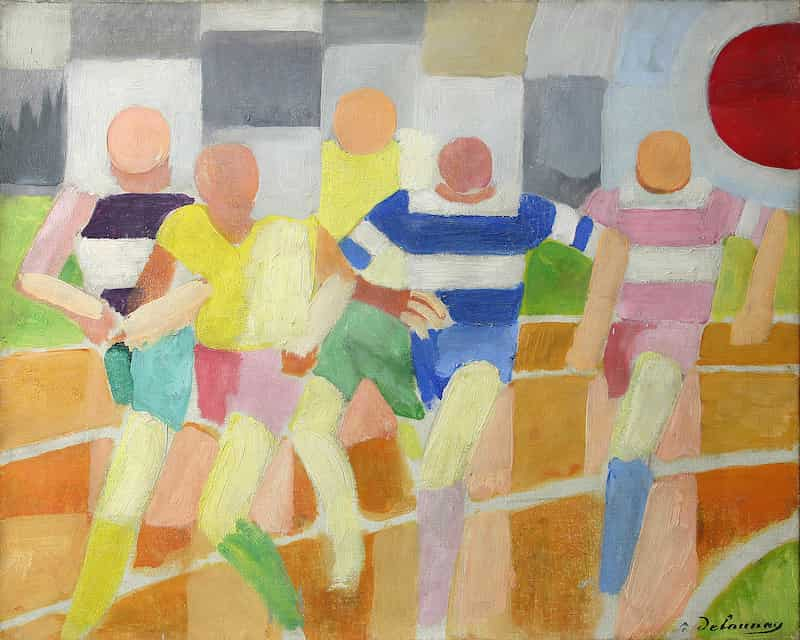
Les Coureurs (The Runners), Robert Delaunay (1924)
Early Career
The young Delaunay was a lackluster student, spending classes painting with watercolors behind his desk lid. He lacked formal artistic training, but was sent by his uncle to Ronsin's Atelier, to apprentice in theatre design at Belleville. Here he learned to create large scale theatre sets, which would inform his later stage and mural work. In 1903 Delaunay traveled to Brittany, where he became acquainted with Henri Rousseau and turned to painting, inspired initially by the work of the Pont Aven Group who had painted there from 1886-88. On returning to Paris, Delaunay met artist, Jean Metzinger. The two became close friends and produced a series of small mosaic-like compositions inspired by the Divisionist techniques of Georges Seurat. Their experiments were noted in an article by the critic Louis Vauxcelles in 1907. In 1909 Delaunay chanced upon a passionate young artist named Sonia Terk, who went on to become his wife and collaborator for the next 30 years, forming one of the most remarkable creative partnerships in art history. A wealthy Russian emigre who had recently come to Paris to train at the Academy de la Palais, Terk was already married to the homosexual German art critic and gallery owner, Wilhelm Uhde in a marriage of convenience. She and Robert began a passionate affair and when she became pregnant, Uhde willingly consented to a divorce. She married Delaunay the following year and quickly realized that the impetuous and childlike Delaunay would not be a conventional husband or father: for the majority of their married life, she would be the main breadwinner for their family. The newlyweds rented an apartment on the Rue des Grandes Augustins, the same street where Pablo Picasso lived, and embraced the exciting new world around them. They painted together, drawing inspiration from the vivid colors and patterns they saw in the electric lights on the Boulevard St Michel, where they strolled in the evenings.'We breathed painting like others lived in alcohol or crime,' Sonia was to later write in her diary.

La Tour Eiffel, Robert Delaunay
Mature Period
Pre World War I Paris was at the epicenter of the avant-garde movement. Delaunay immersed himself in the world of aesthetic discovery, innovation, and experimentation that was exploding around him. He exhibited alongside many of the key players in Paris at the Salon D'Automne (1903,1906) and at the Salon des Independants from 1904 -14, developing an increasing fascination with color as a subject in itself. He sought to interpret the modern city through color and rhythm. In 1911, Sonia gave birth to their only son, Charles, and a year later, at age 27, Delaunay had his first solo show at the Galerie Barbazanger in Paris. His work was admired by German Expressionists Wassily Kandinsky, August Macke and Franz Marc. In 1912, he was invited by Kandinsky to exhibit at the first Blaue Reiter exhibition in Germany, as well as to contribute to Der Sturm, the prestigious almanac produced by the group.
Delaunay, the Personality
Delaunay believed in gestural, grandiose painting and would have frenzied periods of productivity, working from dawn till dusk, sometimes not bathing for days. In between these bouts, he would not touch a brush, instead taking long walks and taking care of his plants. His Eiffel tower series painted during this time gained considerable attention from the art world, leading to inclusions in major exhibitions and group shows in Europe, notably in the Cubist Room at the Salon des Independents with Metzinger. Following this show, his work became increasingly non-objective leading to the emergence of motifs that Delaunay is known for today such as spinning circles and the geometric forms of his windows. In response to his work, critic Andre Warnod wrote of a 'blossoming new school' that broke with the art of Cubism. The same year his close friend and poet, Guillaume Apollinaire, coined the term 'Orphism' to describe Delaunay's paintings, as well as those of Sonia and artist, Frantisek Kupka. The name, derived from the Greek mythological lyre-playing Orpheus likened the painters' energy to a primal urge for creation. Apollinaire also wrote that Picasso occupied one camp and Delaunay the other - with Kandinsky and Duchamp as his followers. This over embellishment of his achievements caused a stir. In fact, Delaunay preferred to call his work 'simultaneous' rather than 'orphic', as he felt this evoked the spirit of the new age, but this too caused controversy for Delaunay as the Italian Futurists claimed this concept as their own. Though Delaunay had gained support for his work, his attention-seeking, outspoken personality was exhausting and Sonia often had to mediate when he antagonized others with egocentric claims such as 'before me color was only coloring'. Gertrude Stein captured his personality succinctly when she wrote: 'he sees himself as a grand solitary figure when in reality he's an endless chatterbox who will tell anyone about himself and his significance any time of day or night'. During this period, Delaunay's short temper alienated both students and colleagues. On Sundays the Delaunay's opened up their home to artists, poets, musicians, and writers that included Henri Rousseau, Metzinger, Guillaume Apollinaire, Fernand Léger, Albert Gleizes, Henri Le Facconnier, and Blaise Cendrars. On Thursdays the group would dance at the Bal Bullier in Montparnasse, turning up late to make an entrance wearing the outlandish simultaneous designs created by Sonia. The Delaunays were always center stage with Sonia in elaborate multi colored dresses and Robert in matching suits of scarlet, green, and other garish colors. The group would also wear multi colored socks so they could dance the tango with no shoes. Their outfits were described as 'Futuristic' by Giacomo Balla and attracted international media attention; Sonia's designs were described by Apollinaire as turning 'fantasy into elegance'. Like the Futurists, Robert was obsessed with the new era of technology and speed, and would frequently visit the St Cloud airship outside Paris. From here came the inspired work 'Homage to Bleriot' in 1914- an 'allegory of the new age' as well as an illustration of his theory that color could become form and subject. The Delaunays were on vacation when World War I broke out in August 1914, but unlike the others in their circle they stayed as far from the fighting as possible, firstly in Portugal then in neutral Northern Spain. Robert did finally enlist in 1916, but was declared unfit for service due to a large heart and collapsed lung. In 1917, Sonia's income was cut off at the outbreak of the Russian Revolution and she turned to fashion design to provide for her family, setting up her own boutique, Casa Sonia. This proved a lucrative period for both artists when Robert met the Russian exile, Sergei Diaghilev and the rest of the Ballet Russes, which had been somewhat depleted by war. Robert was commissioned to design and make the stage set for their next performance while Sonia created the costumes. In 1920 the Delaunays returned to Paris, where Sonia established herself as a successful fashion designer, so Robert could pursue his art. They rented a grand apartment and resumed their Sunday salons - pulling in a new group of young artists including Tristan Tzara, Francis Picabia, André Breton, Jean Cocteau, and Jean and Sophie Arp. The apartment became a living, breathing simultaneous artwork as their Dada and Surrealist friends adorned the walls with paintings, poems, and signatures. However, as always they were living beyond their means and bailiffs were frequent visitors to the apartment; in 1922 money was so tight that Sonia had to sell their Henri Rousseau painting The Snake Charmer to the Louvre for 50,000 francs. With this Robert bought their first car, and in doing so found the one pastime that would relax him - driving. The Delaunays were known for their progressiveness- owning a car, telephone, and radio before any of their friends as well as being the first to re-establish links with German artists after World War I. However, artistically Robert was lagging behind his entrepreneurial wife - he had not exhibited since 1913 except for a solo show in 1922 that had little success despite the loyal attendance of his new Surrealist friends.
Delaunay - The Legacy
Robert Delaunay's reputation fluctuated throughout his life and after his death, so it is a challenge to map his legacy in modern art history. However, it is without a doubt in the heady pre-World War I days that his influence on other artists and writers was most pronounced. His text 'Note on the Construction of Reality in Pure Painting' (1912) was seen by many critics as fundamental in the evolution of abstract art theory; in one article Apollinaire even credits Delaunay with influencing Picasso's use of light. Whether or not this was entirely accurate, it is certain that during 1912-13 Delaunay was seen by many as occupying a contradictory and equivocal position in relation to Cubism, something which inspired young artists looking for new directions. One such example was the young American, Morgan Russell, who saw the vibrant color harmonies of Delaunay's canvases in 1912. Soon afterwards, Russell founded the Synchronist movement with Stanton McDonald Wright, which expanded on the color theory of Michel Chevreul and Ogden Rood, as Delaunay himself had done. Later however, Russell and Wright denied all connections with Orphism. Similarly contentious was Delaunay's relationship to Futurism. His incorporation of modern architecture into a fragmented, dynamic pictorial space suggests a role in the development of Futurist visual language, particularly evident in Umberto Boccioni's Simultaneous Visions (1912). The Italian artist had in fact visited Paris in 1911 and would have seen Delaunay's Saint Severin and Eiffel Tower series. At the time both movements rejected any comparison but after the artist's death, Fernand Leger was to declare 'It was with Robert Delaunay on our side that we joined the battle' [towards abstraction] (1949). After Delaunay exhibited his work at the first Der Blaue Reiter exhibition, he caused a stir : the blocks of vivid color Klee went on to employ in his Tunisian watercolors (1914) are reminiscent of Delaunay's Windows series, and critic, Theodore Daubler, actually referred to him as the 'first known Expressionist' in 1916. Other commentators point to links with Die Brucke. For Mark Rosenthal, the distorted expressionist forms in Delaunay's Saint Severin can be clearly seen in the art of Lyonel Feininger, Ernst Kirchner's street scenes, and in the film sets for Robert Weine's Cabinet of Dr Caligari (1920).
Robert Delaunay Quotes
- Art in Nature is rhythmic and has a horror of constraint.
- The eye is the most refined of our senses, the one which communicates most directly with our mind, our consciousness.
- Our understanding is correlative to our perception.
- But what is of great importance to me is observation of the movement of colors.
- Vision is the true creative rhythm.
- Light in Nature creates the movement of colors.
- Painting is by nature a luminous language.
- I am very much afraid of definitions, and yet one is almost forced to make them. One must take care, too, not to be inhibited by them.
- The word "art" means harmony for me. I never speak of mathematics and never bother with the Spirit. My only science is the choice of impressions that the light in the universe furnishes to my consciousness as an artisan which I try, by imposing an Order, and Art, an appropriate representative life, to organize.
- Seeing is in itself a movement.
- But what I attach great importance to is observation of the movement of colors. It is only in this way that I have found the laws of complementary contrast and the simultaneity of those colors that nourish the rhythm of my vision. There I find the representative essence — which does not arise from a system or an a priori theory.
- Simultaneity in light is harmony, the rhythm of colors which creates the Vision of Man.
- Impressionism; it is the birth of Light in painting.
- Human vision is endowed with the greatest Reality, since it comes to us directly from the contemplation of the Universe.
- First of all, I always see the sun! The way I want to identify myself and others is with halos here and there halos, movements of color. And that, I believe, is rhythm.
- On the other hand, the artist has much to do in the realm of color construction, which is so little explored and so obscure, and hardly dates back any farther than to the beginning of Impressionism.
- Light comes to us by the sensibility. Without visual sensibility there is no light, no movement.
- If Art relates itself to an Object, it becomes descriptive, divisionist, literary.
- The auditory perception is not sufficient for our knowledge of the world; it does not have vastness.
- Direct observation of the luminous essence of nature is for me indispensable
- Nature engenders the science of painting
- This communication alone, by the comparison of the antagonisms, rivalries, movements which give birth to decisive moments, permits the evolution of the soul, whereby a man realizes himself on earth. It is impossible to be concerned with anything else in art.
- I say it is indispensable to look ahead of and behind oneself in the present. If there is such a thing as tradition, and I believe there is, it can only exist in the sense of the most profound movements of culture.
- It is this research into pure painting that is the problem at the present moment. I do not know any painters in Paris who are really searching for this ideal world.


